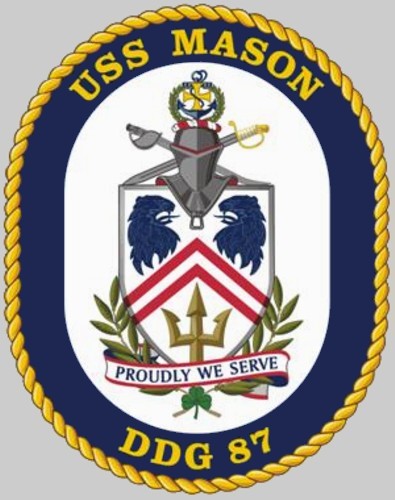 |
||
|
HOME
|
US Navy -
ships
|
US Navy - air
units
|
USMC - air
units
|
International
Navies
|
Weapon Systems
|
Special Reports |
||
|
US Navy - Guided Missile Destroyer DDG 87 - USS Mason |
||
|
||
| 08/24 | ||
|
Type, class:
Guided Missile Destroyer - DDG; Arleigh Burke class, Flight IIA Builder: General Dynamics Bath Iron Works, Bath, Maine, USA STATUS: Awarded: December 13, 1996 Laid down: January 19, 2000 Christened + Launched: June23, 2001 Commissioned: April 12, 2003 IN SERVICE Homeport: Naval Station Mayport, Florida Namesake: > see history, below Ships Motto: PROUDLY WE SERVE Technical Data: see: INFO > Arleigh Burke class Guided Missile Destroyer - DDG |
||
| images | ||
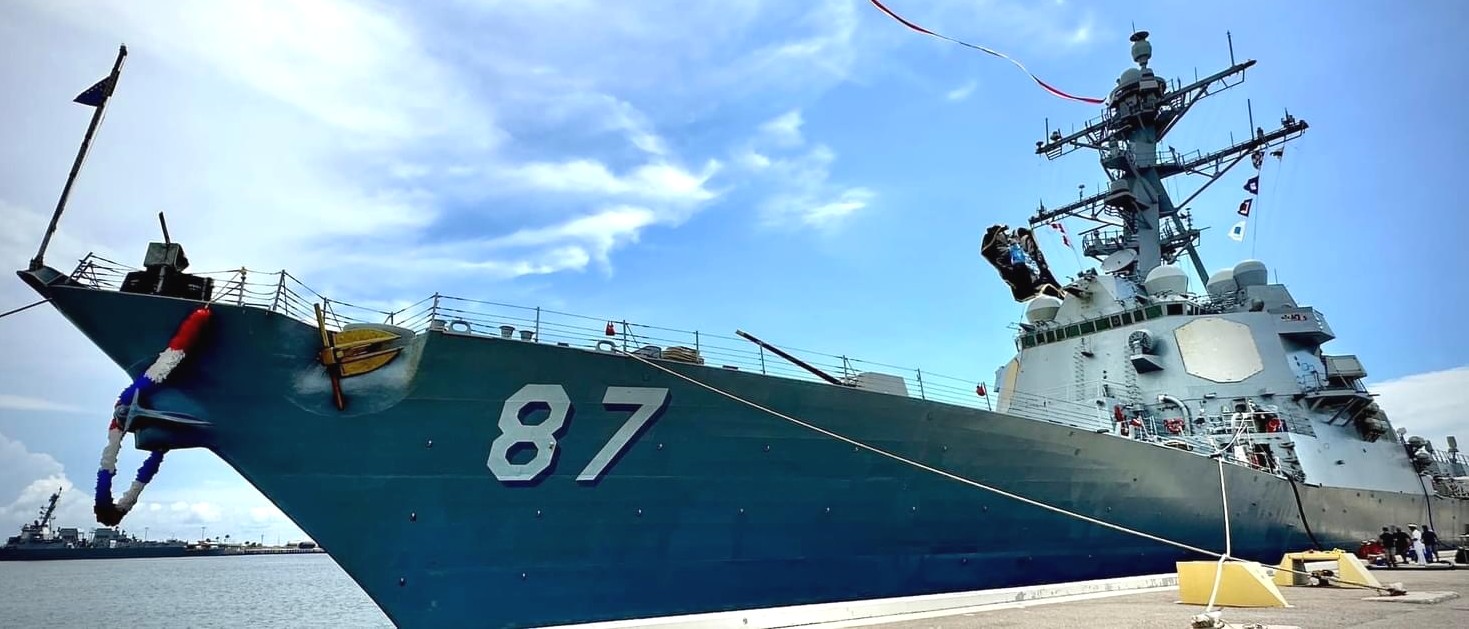 returning to Naval Station Mayport, Florida - July 2, 2024 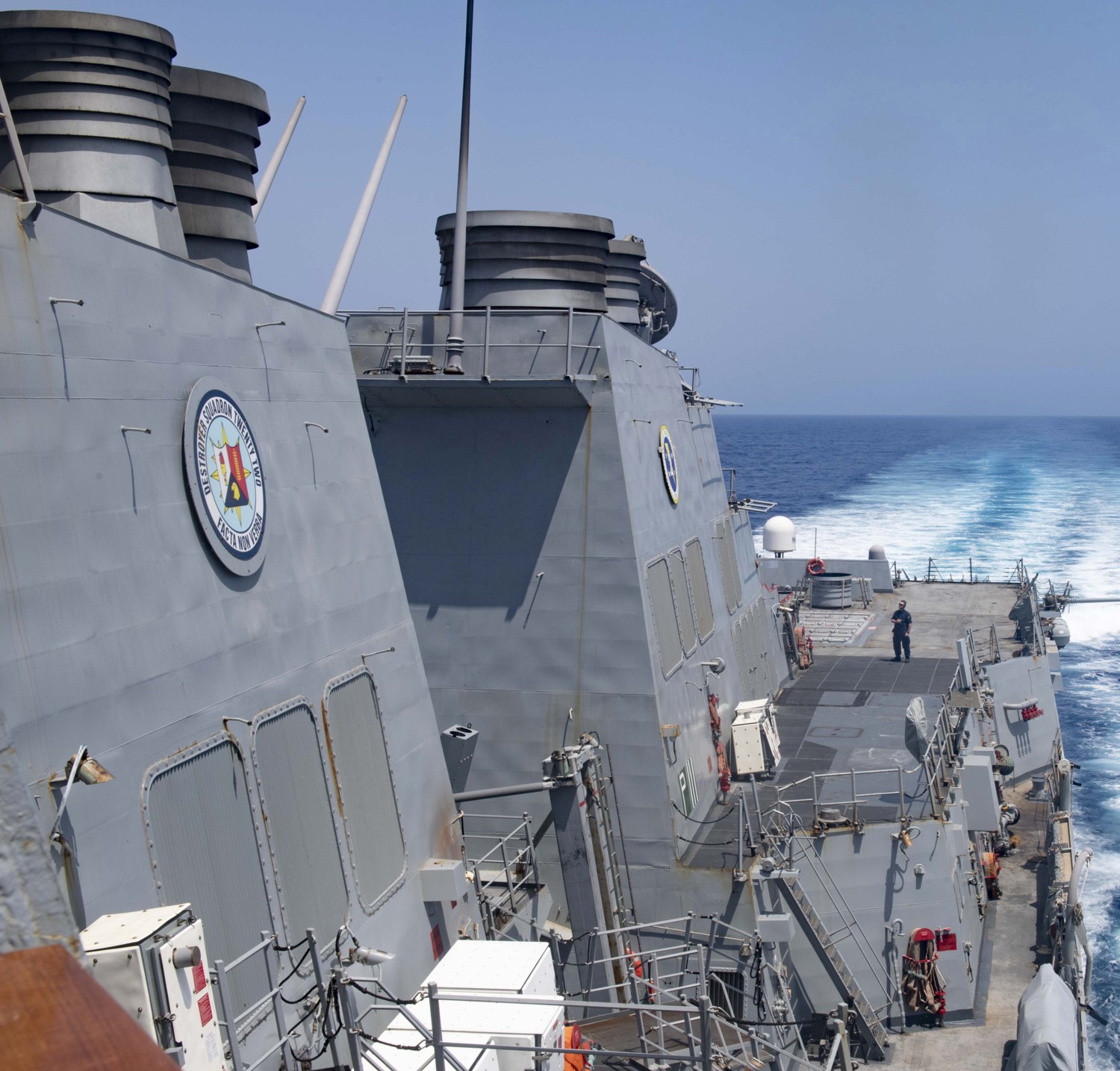 5th Fleet AOR - May 2024 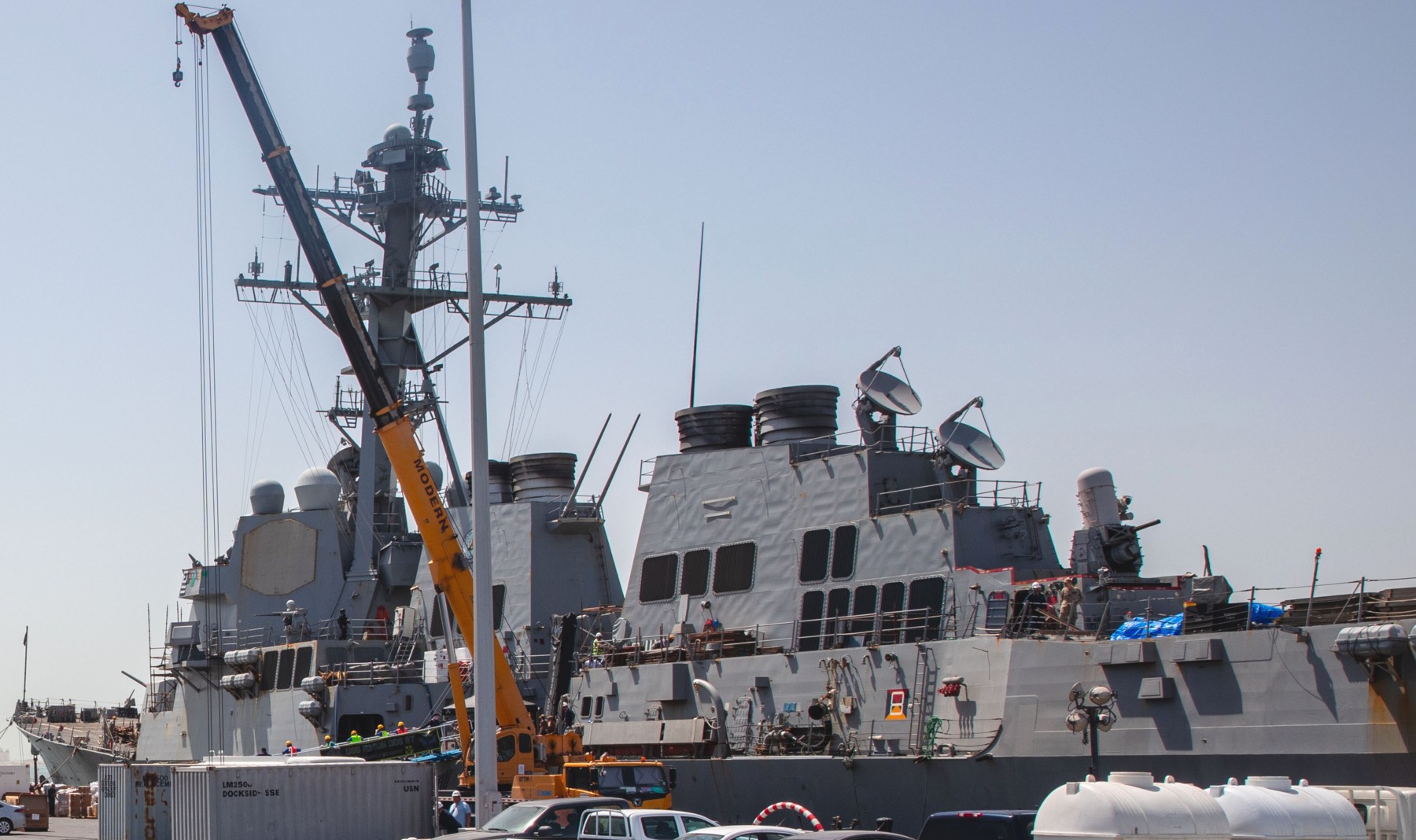 Manama, Bahrain - April 2024  Manama, Bahrain - April 2024 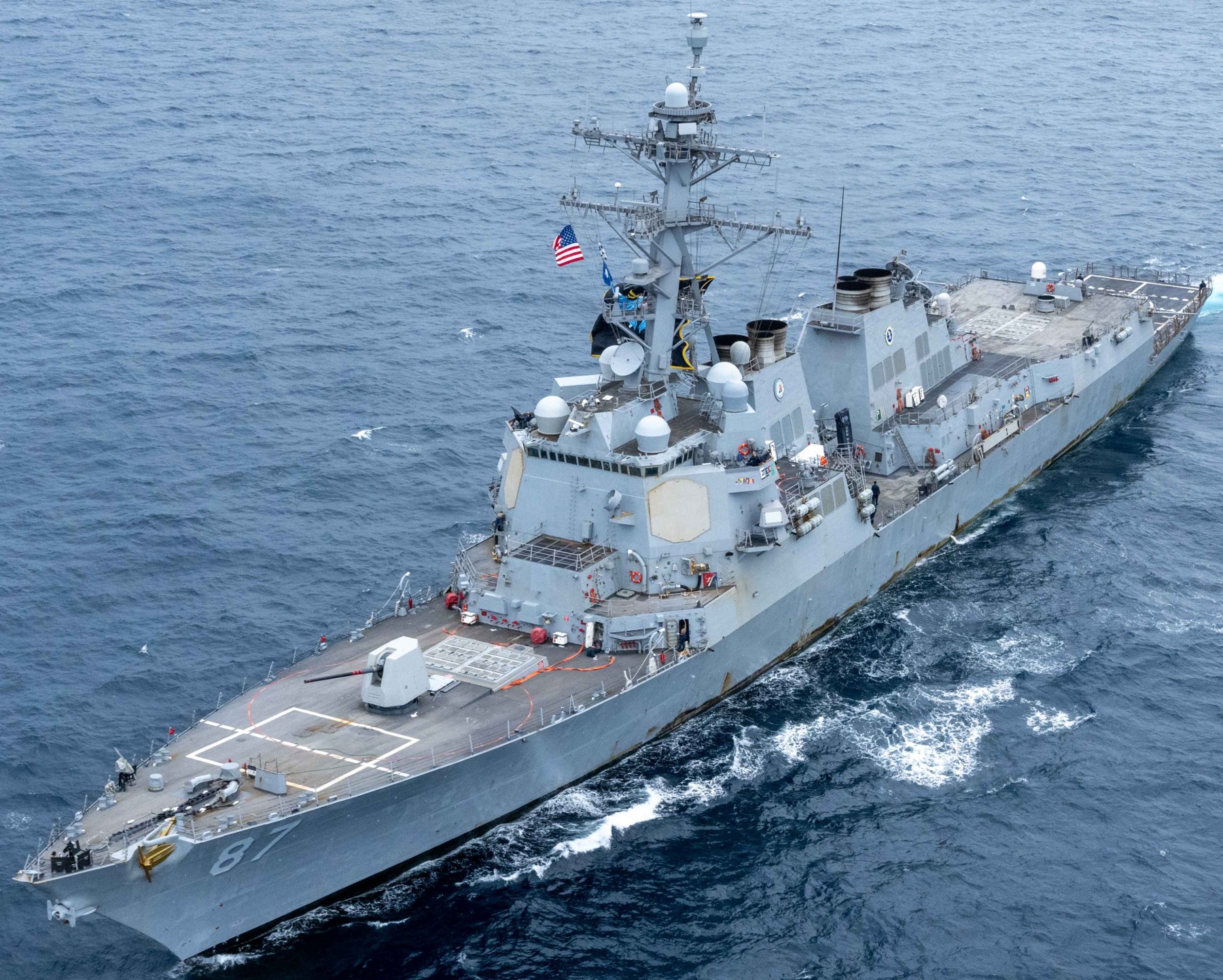 Red Sea - January 2024 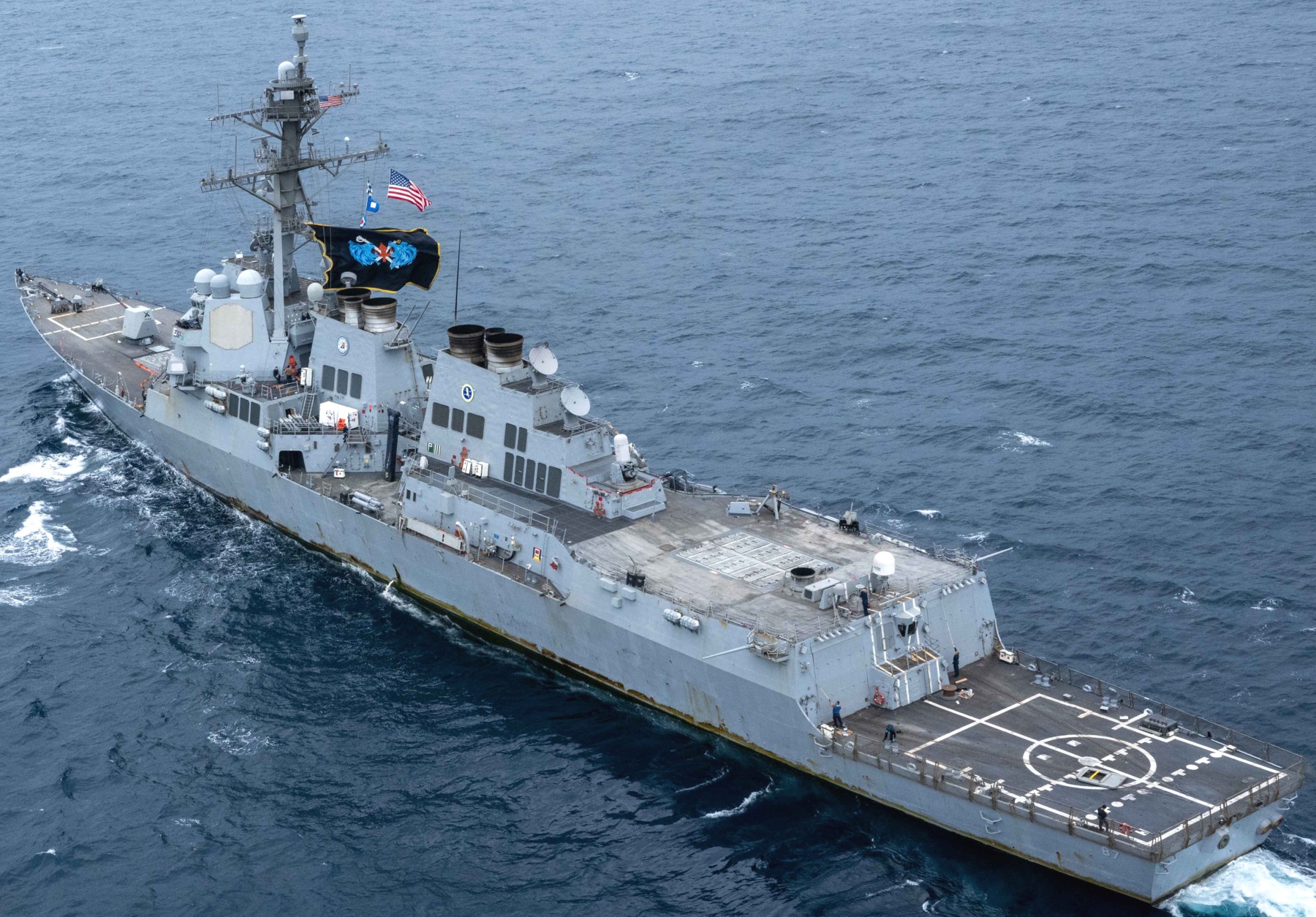 Red Sea - January 2024 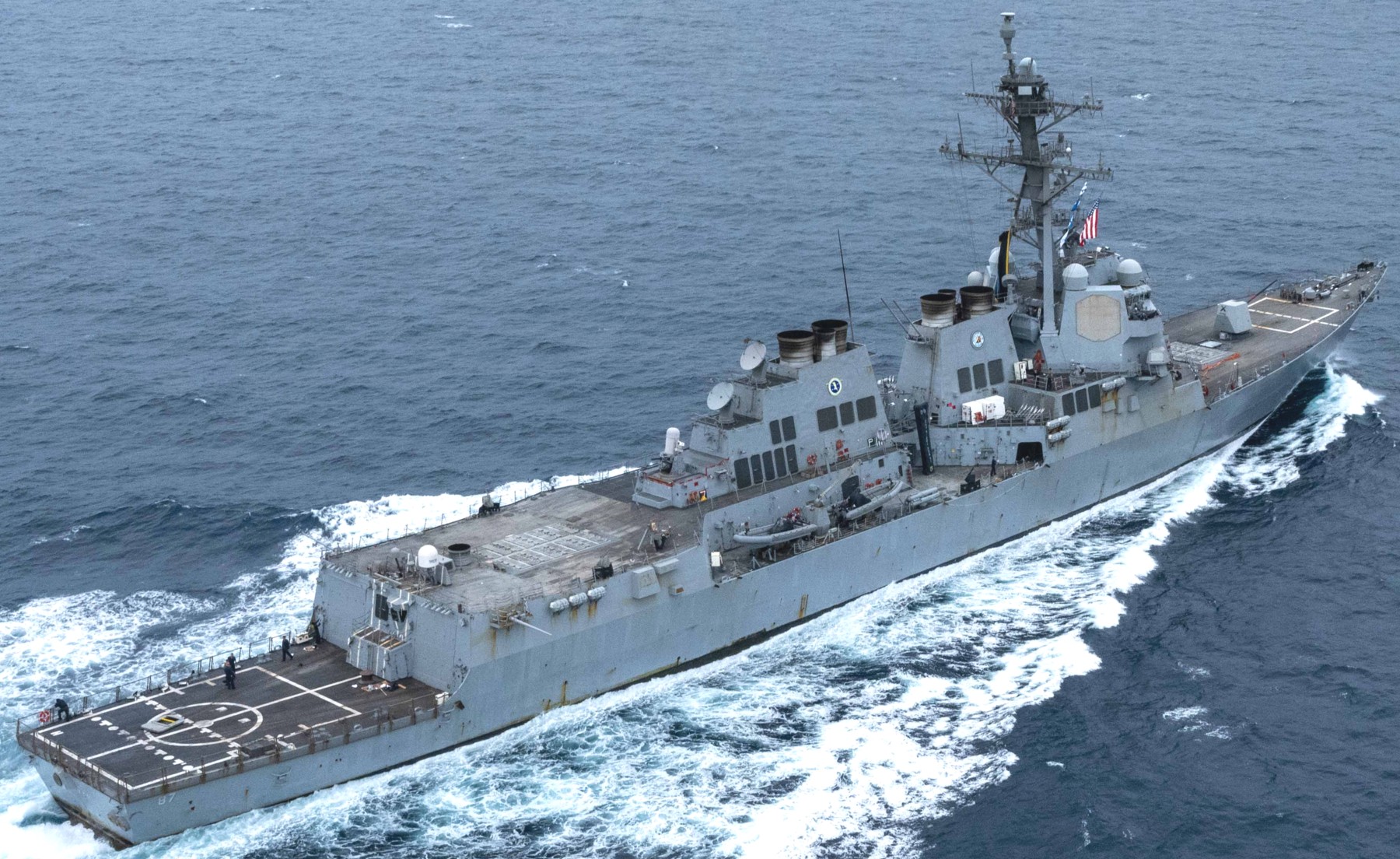 Red Sea - January 2024 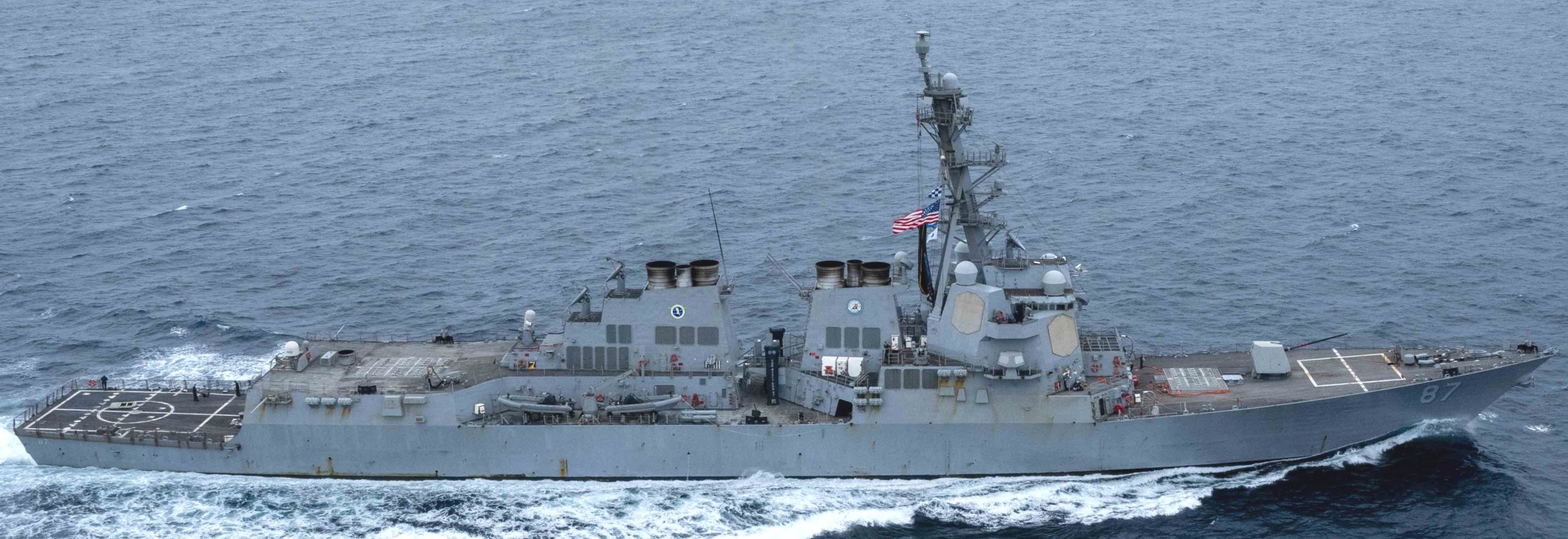 Red Sea - January 2024 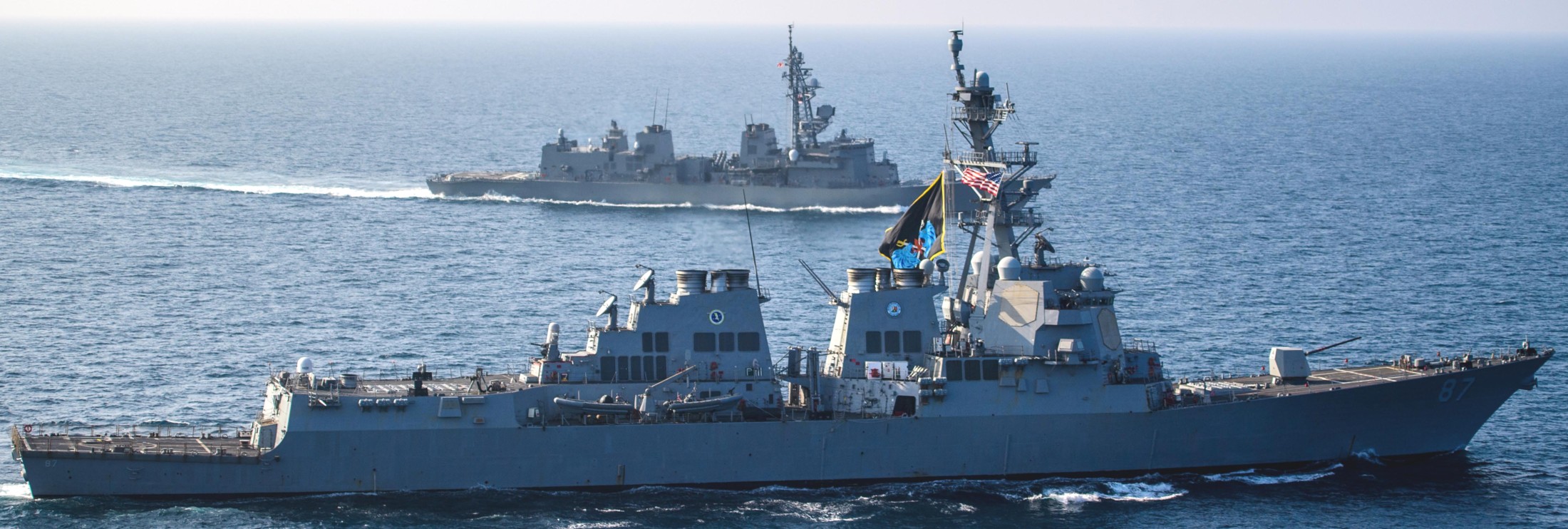 Gulf of Aden - November 2023 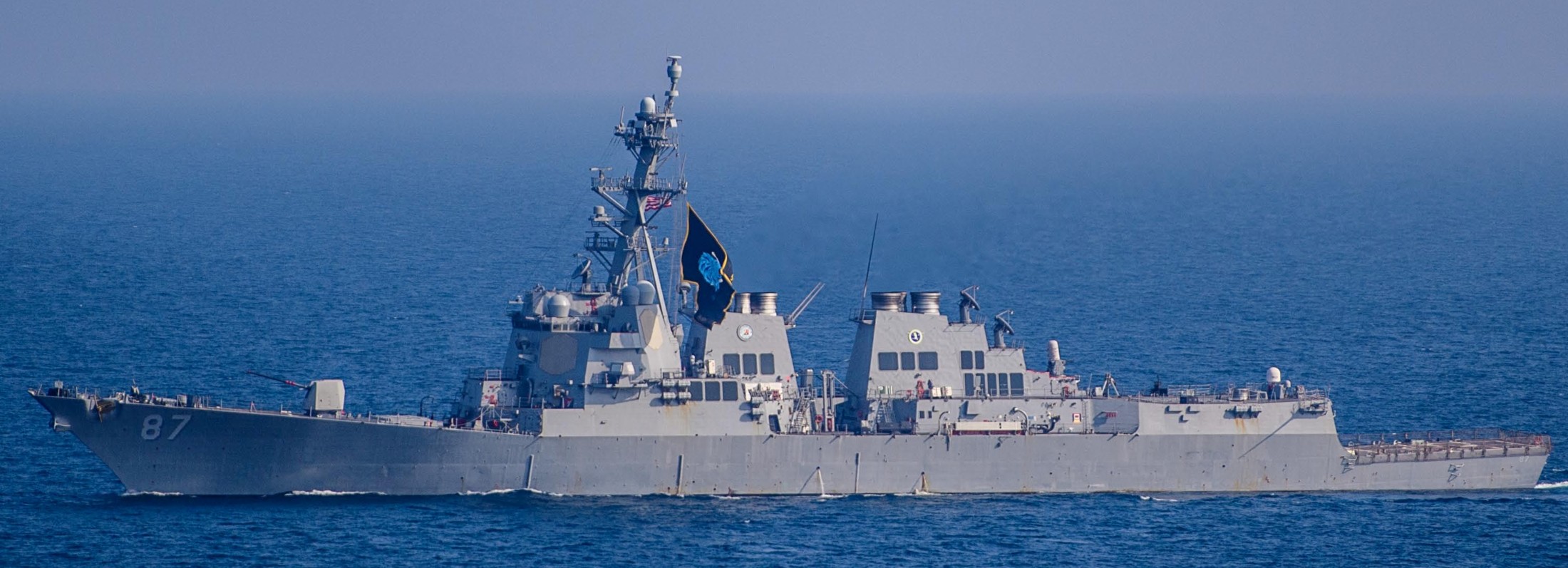 Gulf of Aden - November 2023 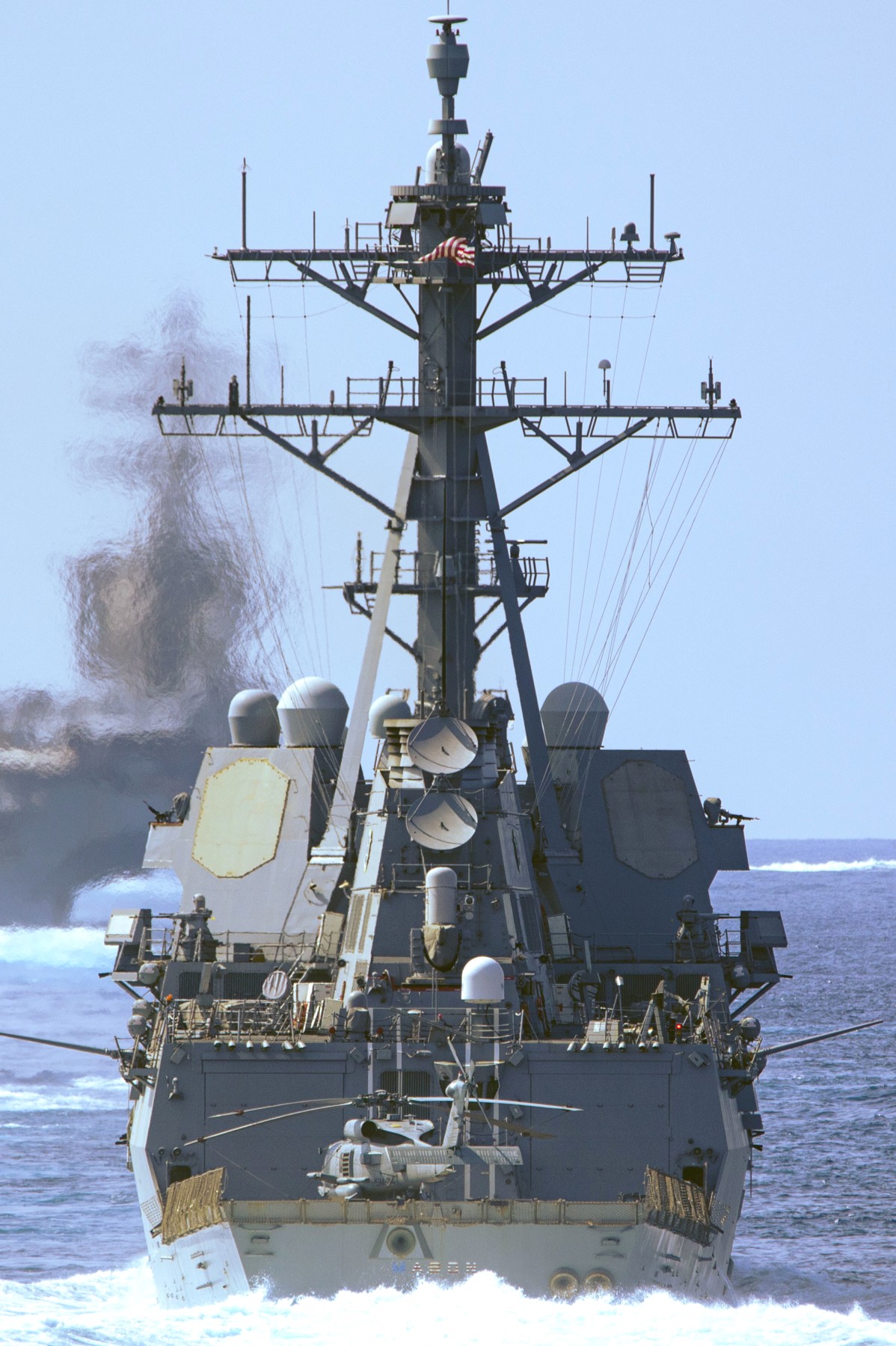 Atlantic Ocean - July 2023 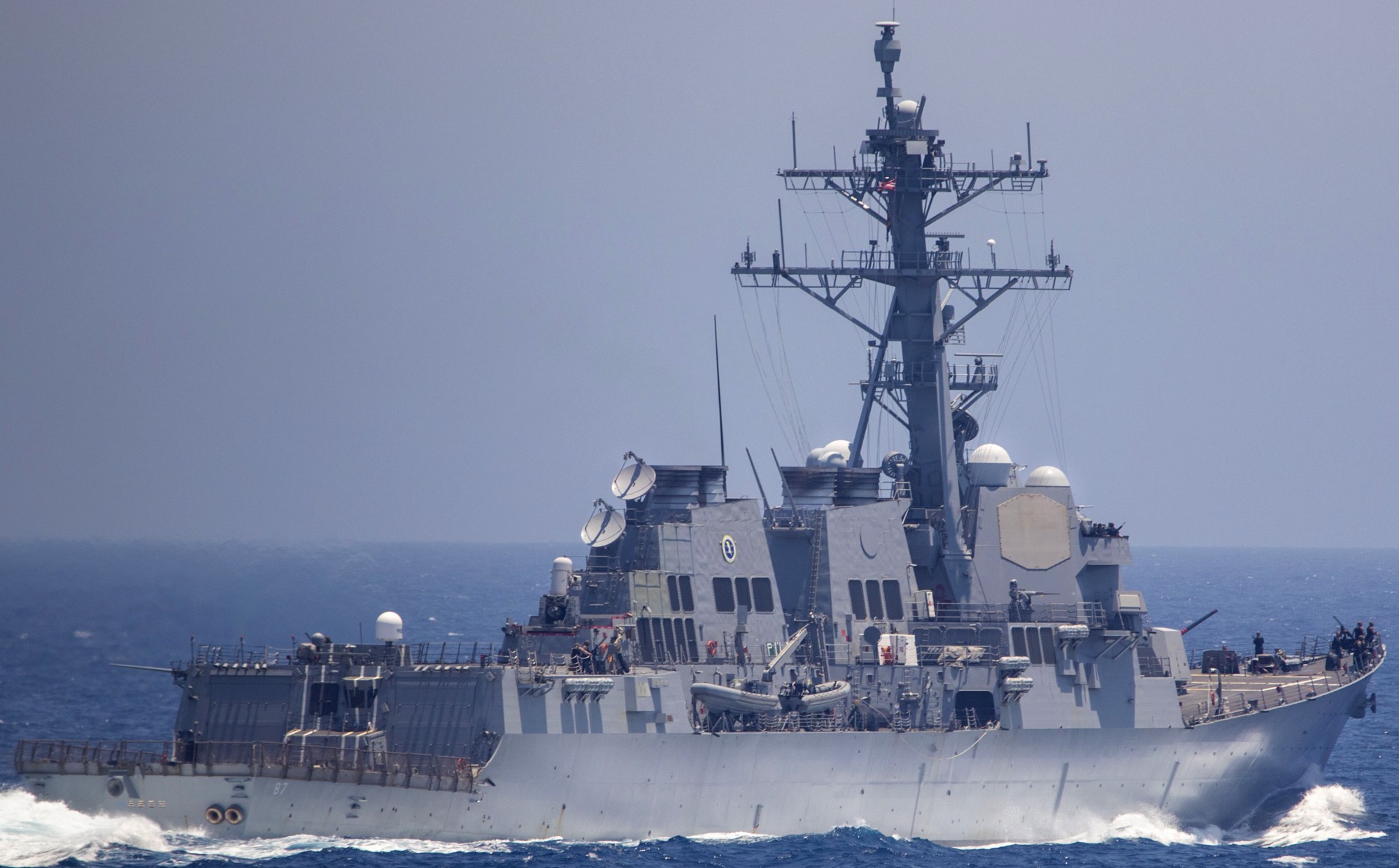 Atlantic Ocean - June 2023 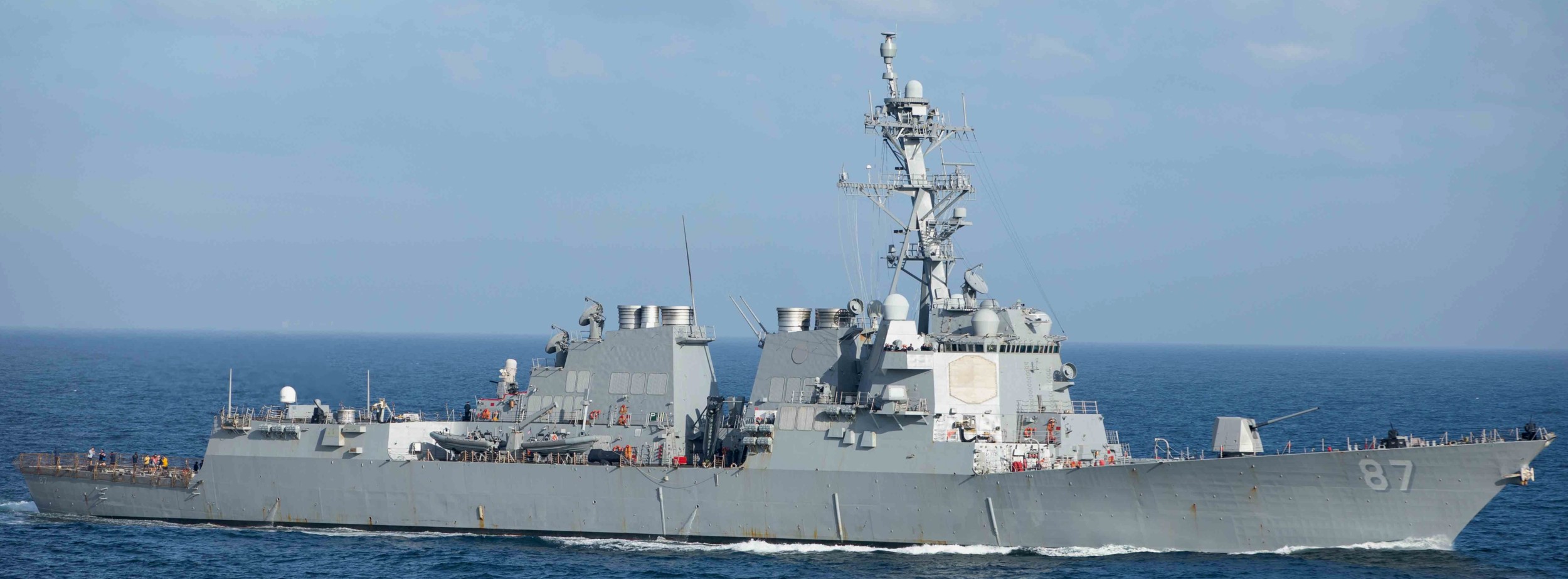 Atlantic Ocean - October 2022 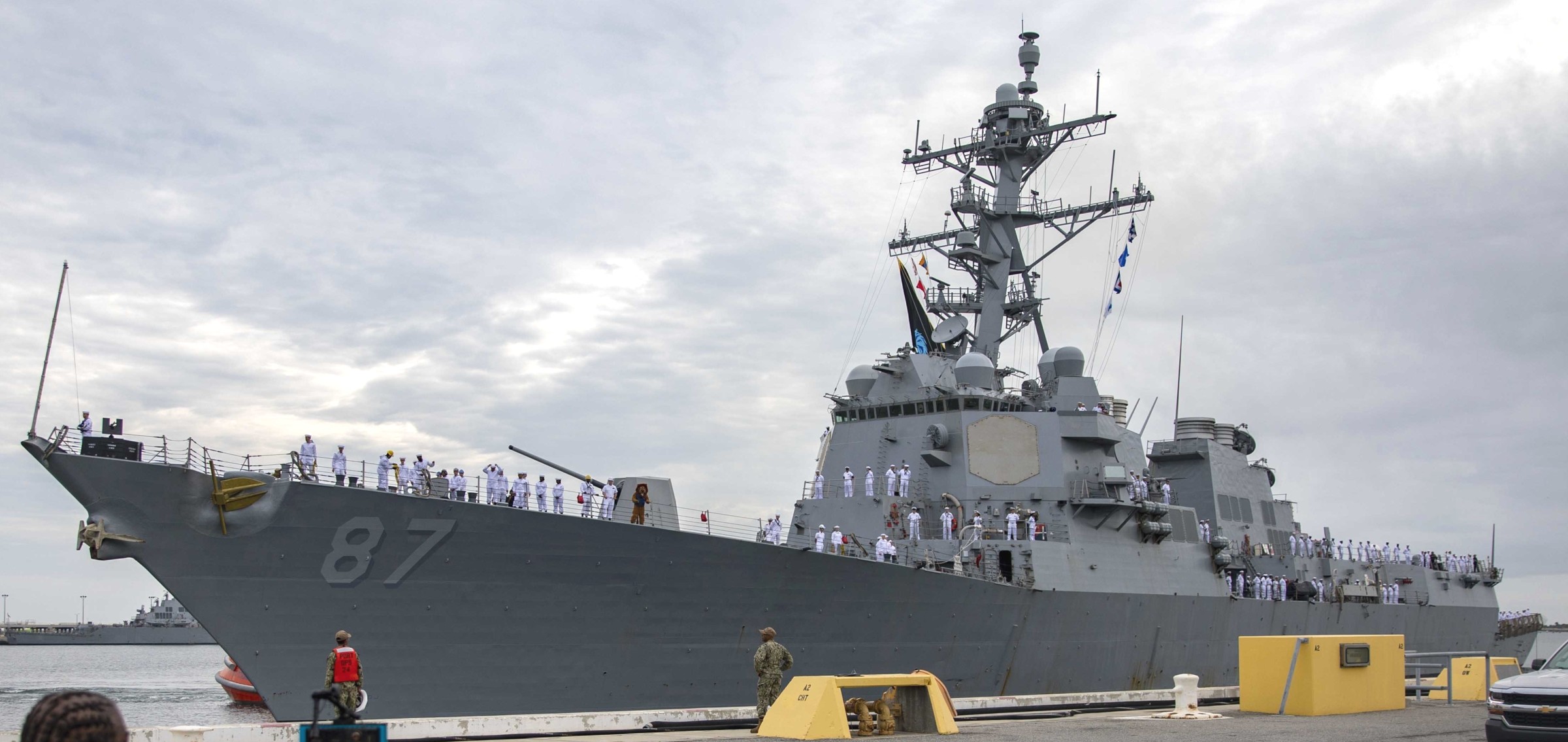 arriving at her new homeport, Naval Station Mayport, Florida after a homeport change from Norfolk, Virginia - August 22, 2022 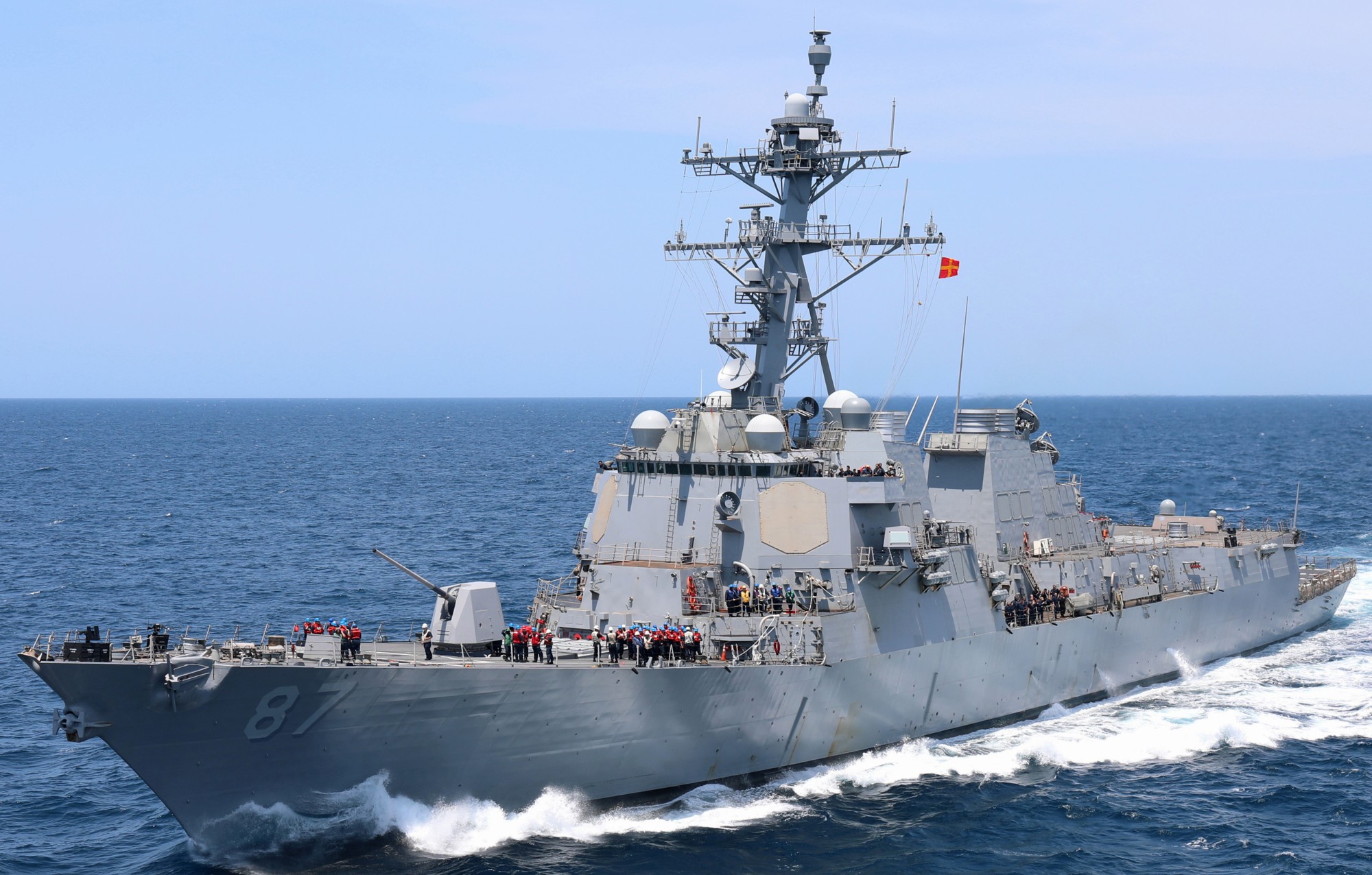 Atlantic Ocean - July 2021  Atlantic Ocean - July 2021 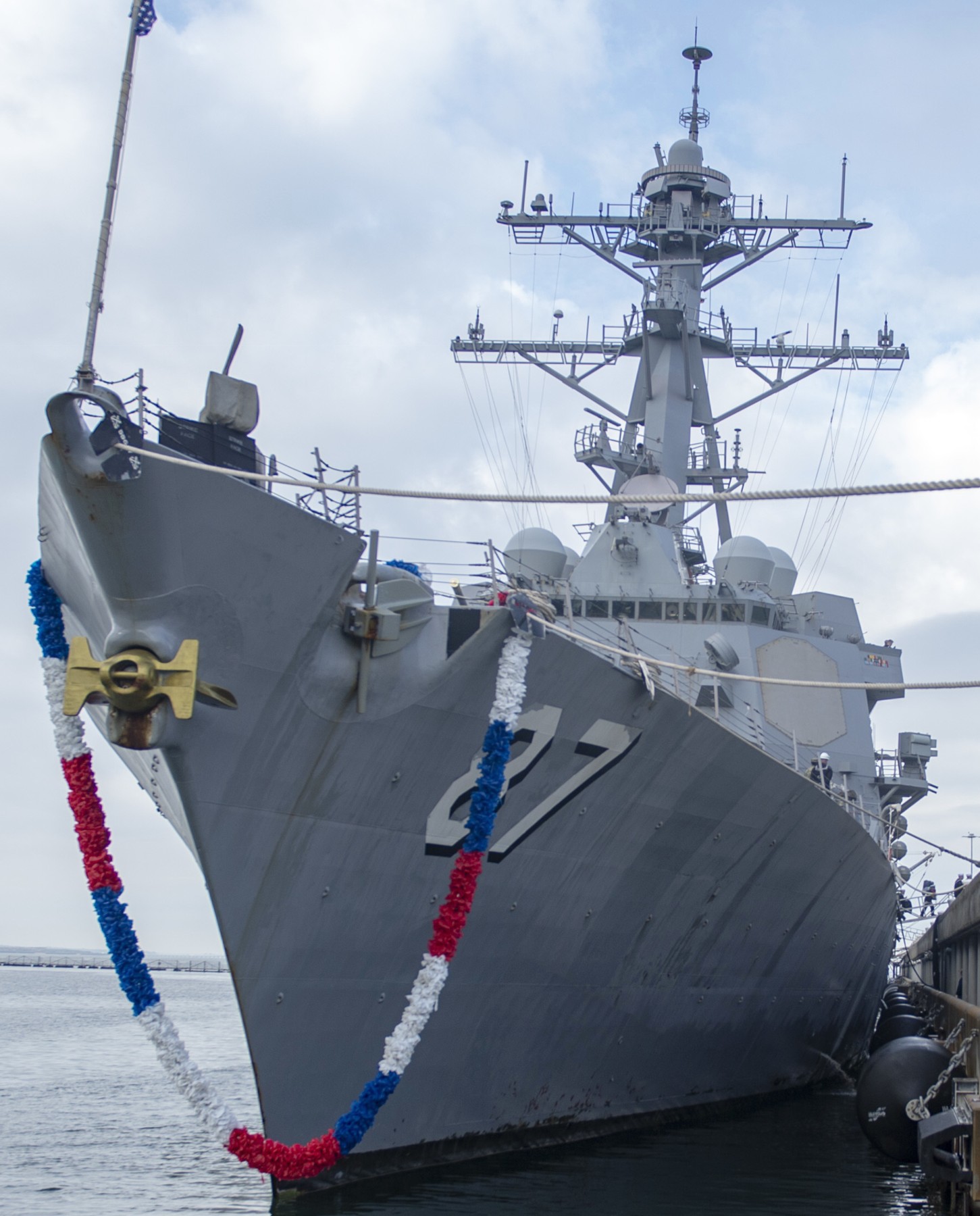 returning to Naval Station Norfolk, Virginia - November 5, 2019 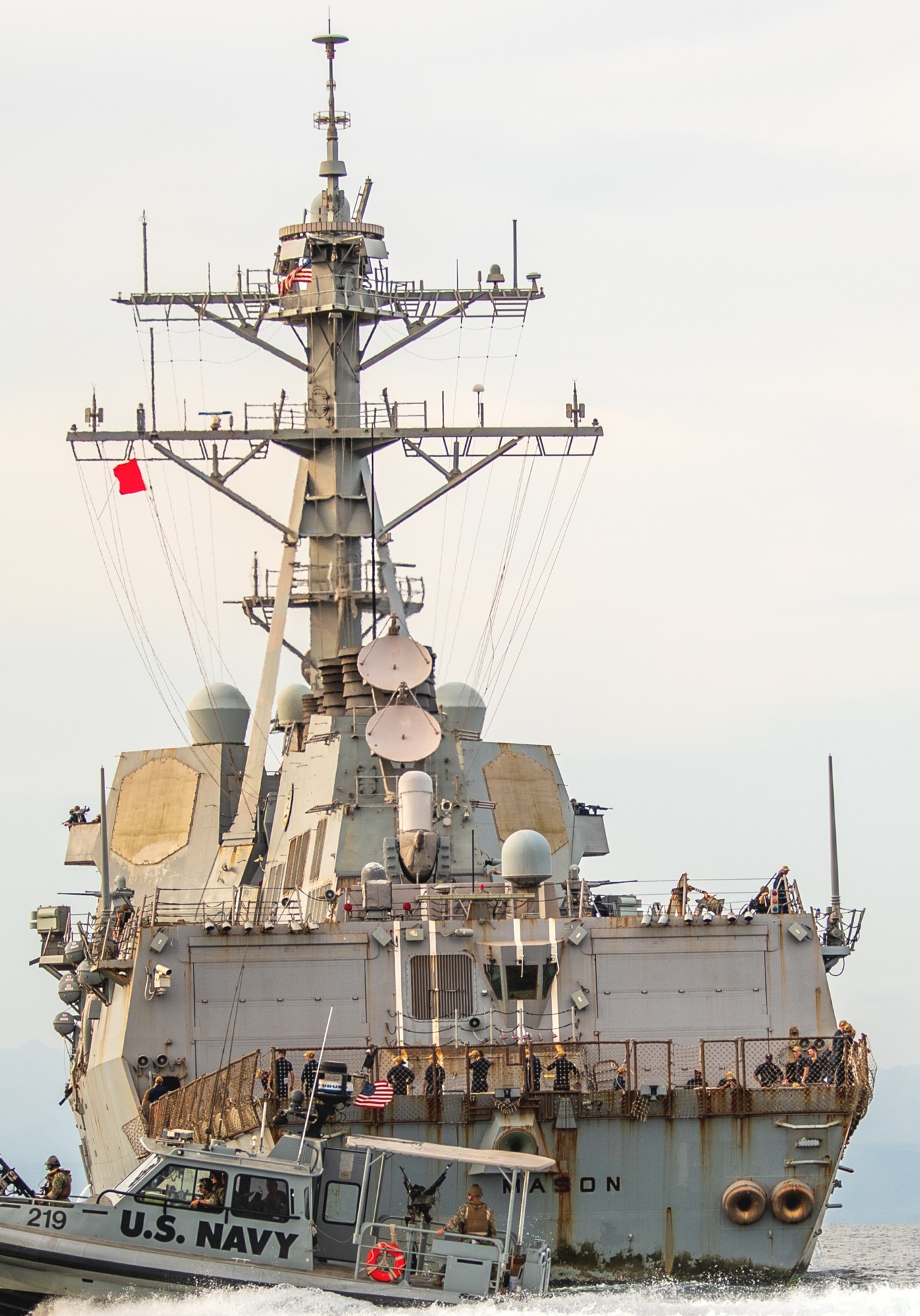 off Djibouti - October 2019 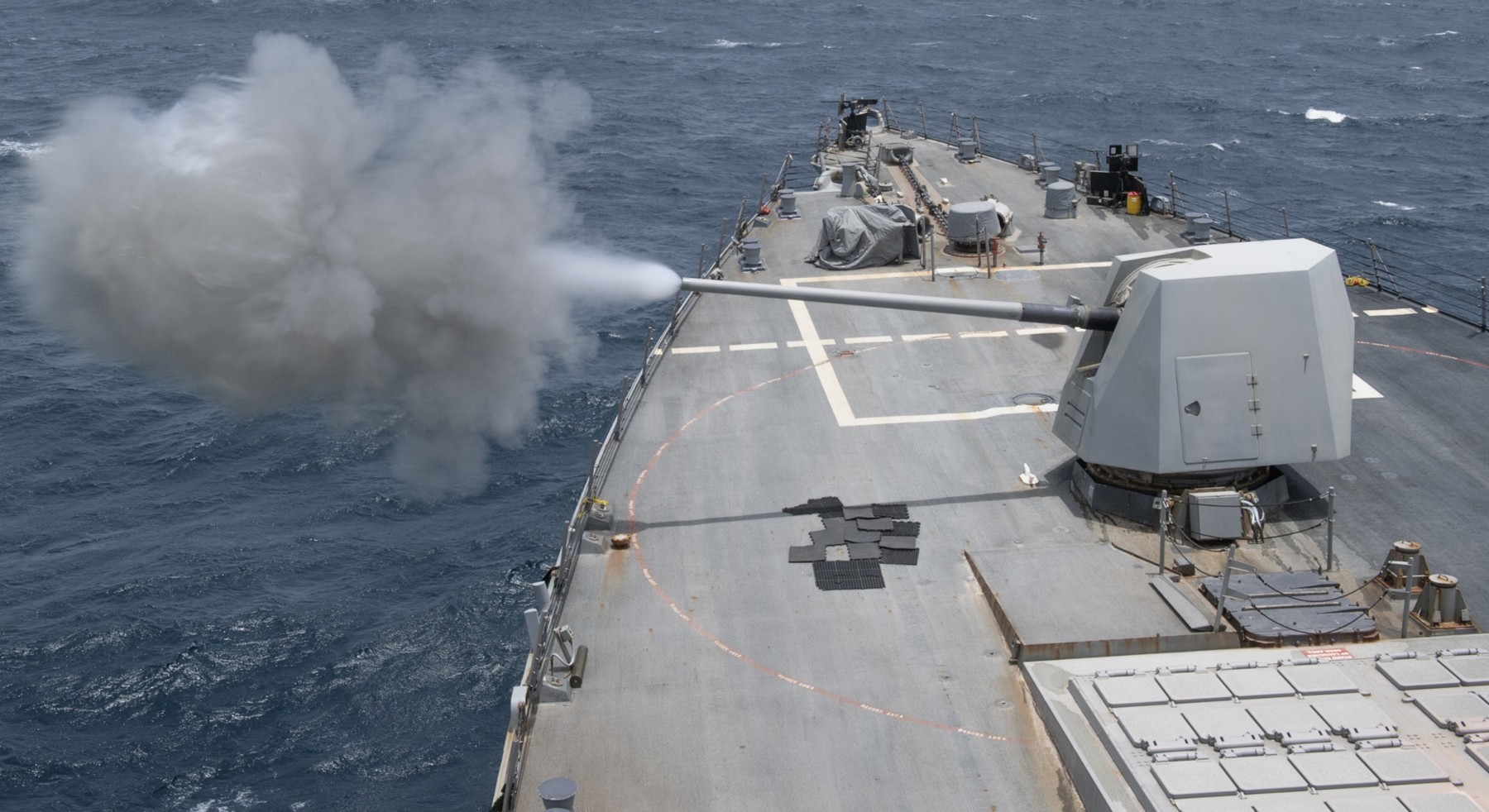 Mk.45 Mod.4 gun fire - Arabian Sea - June 2019 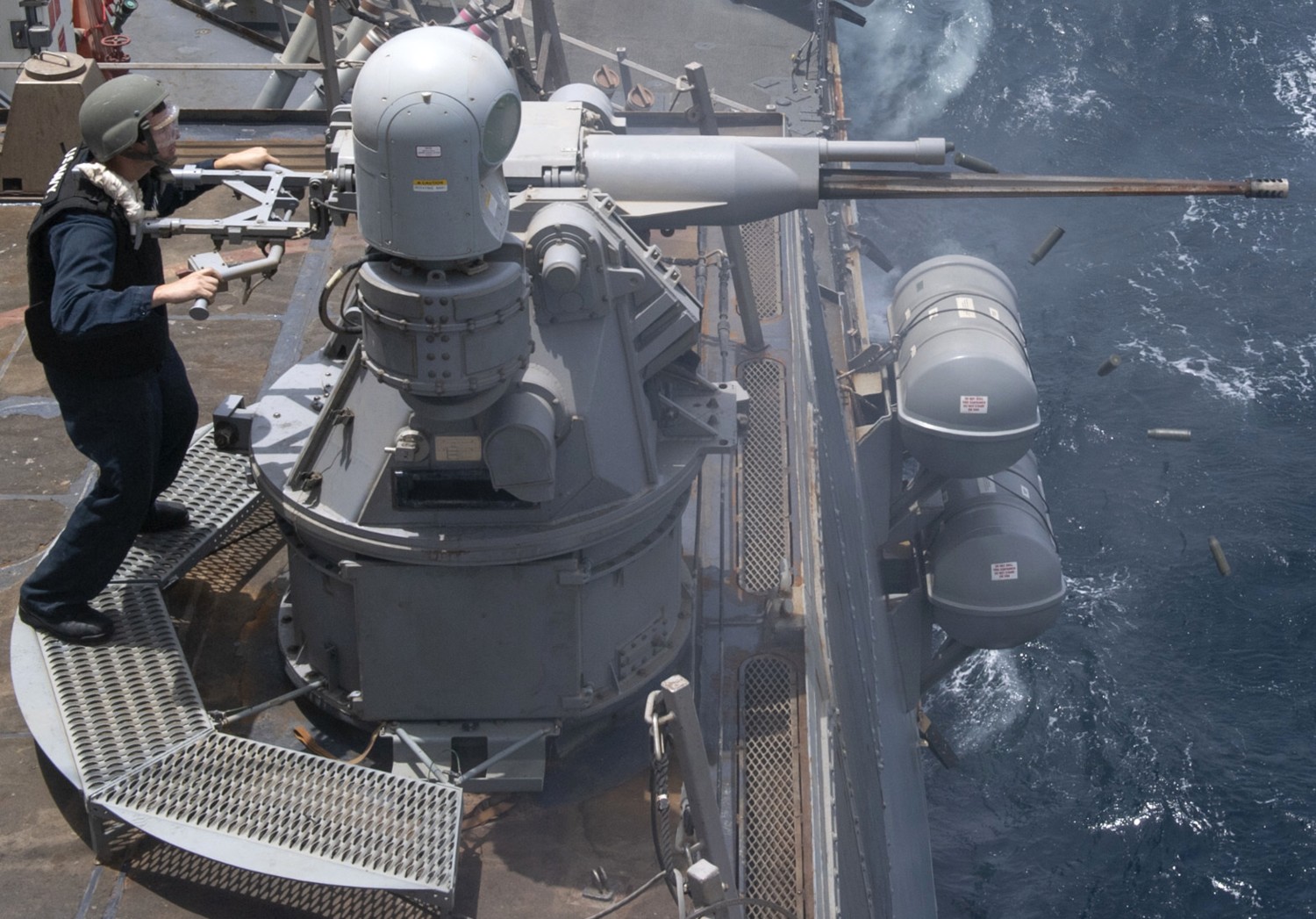 Mk.38 Mod.2 machine gun fire - Arabian Sea - June 2019 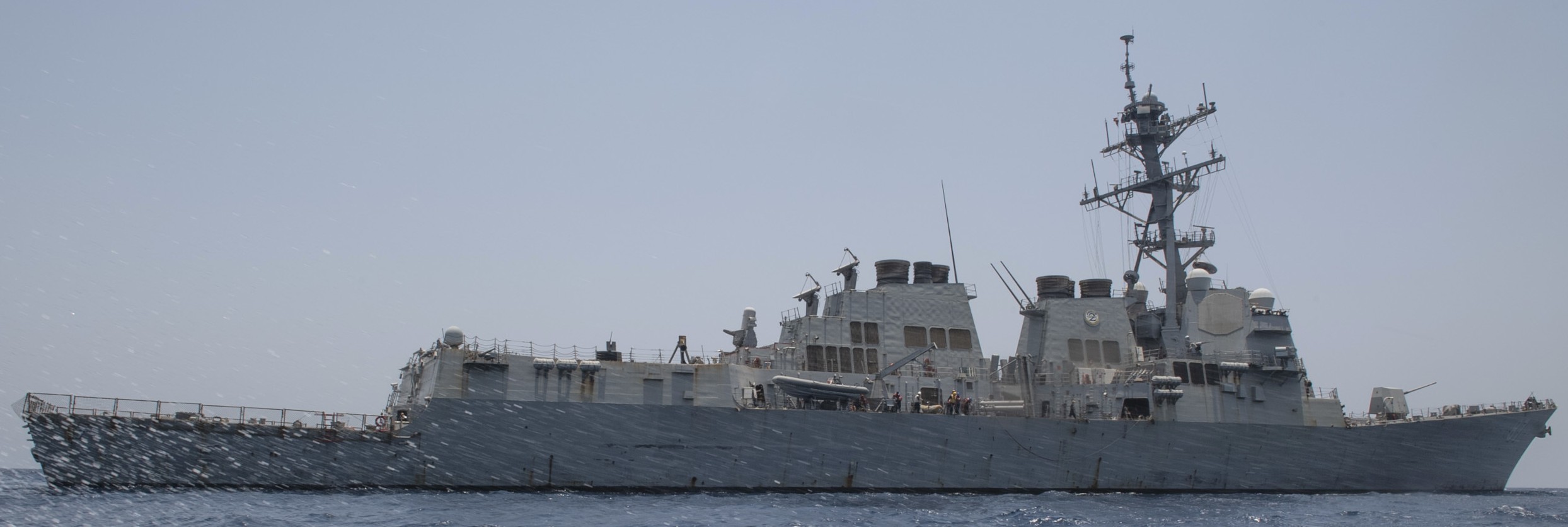 Gulf of Oman - June 2019 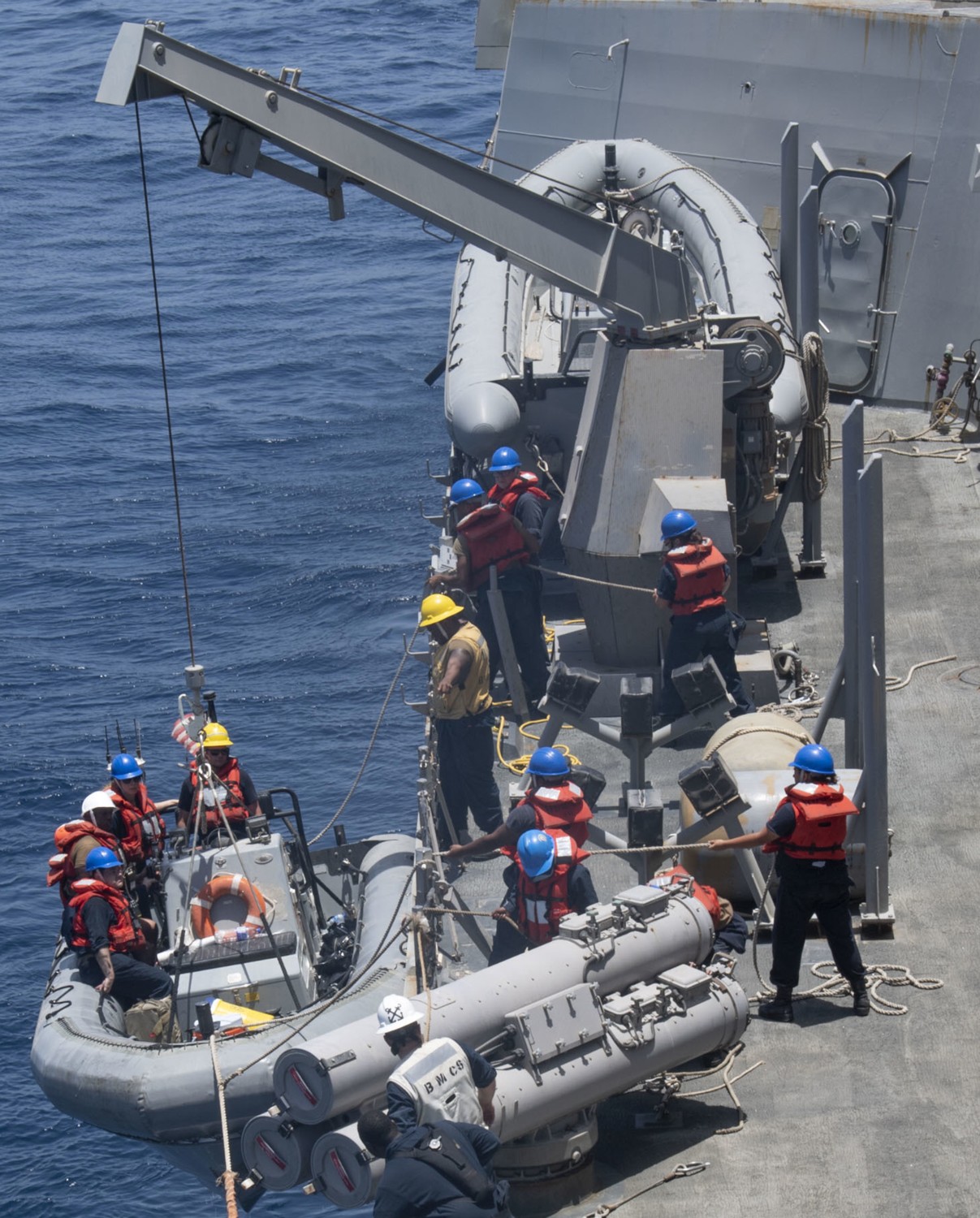 small boat operations - Gulf of Oman - June 2019 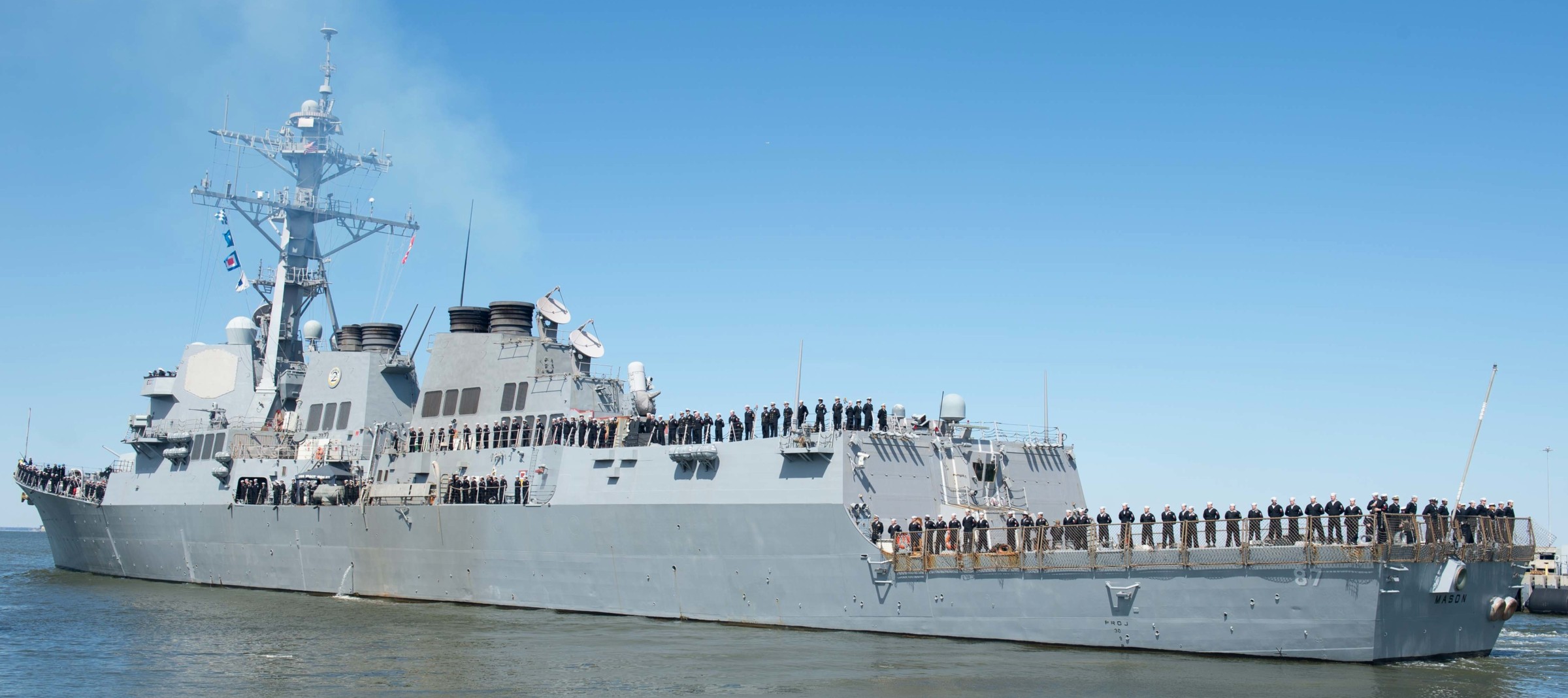 departing Naval Station Norfolk, Virginia - April 1, 2019 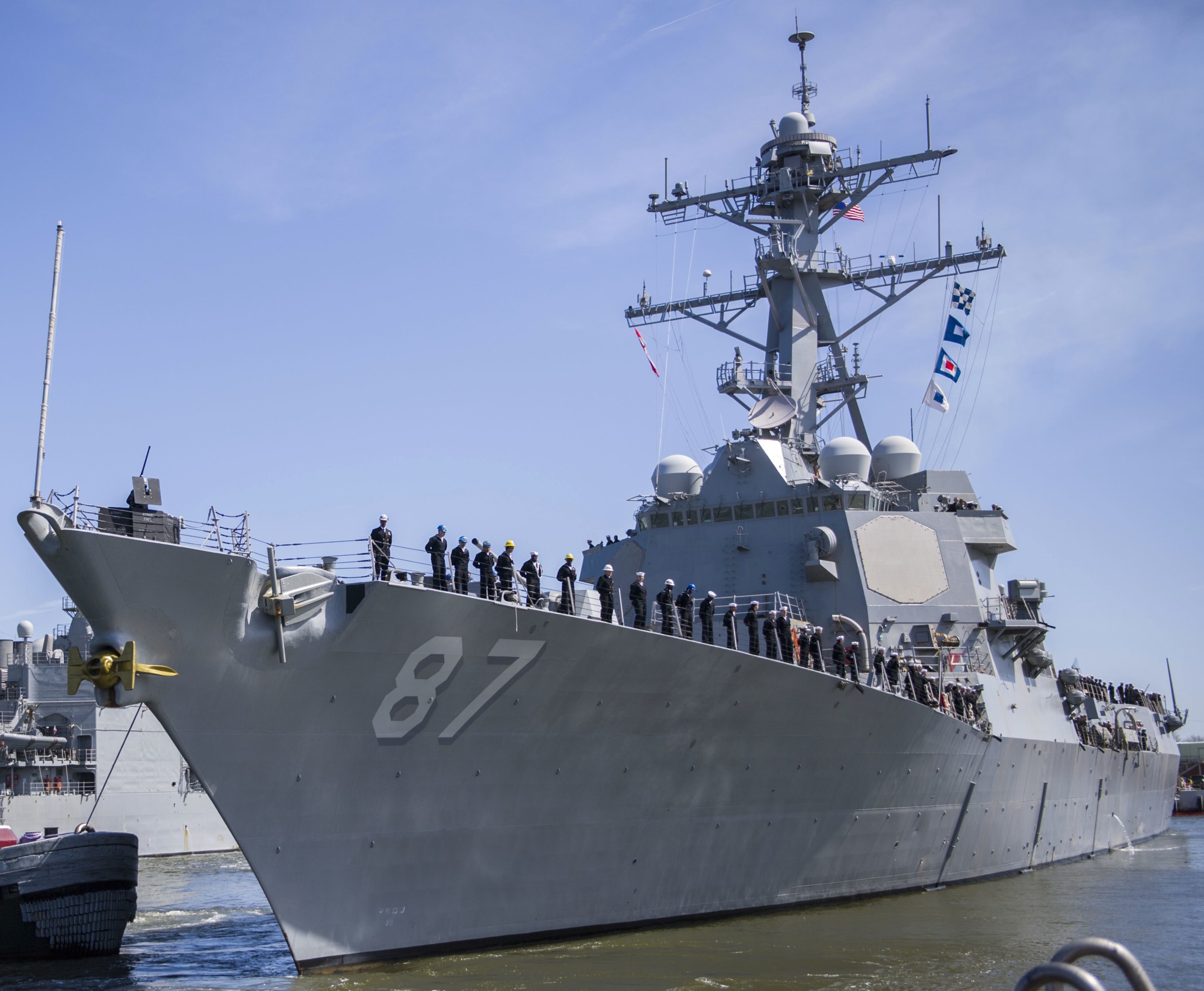 departing Naval Station Norfolk, Virginia - April 1, 2019 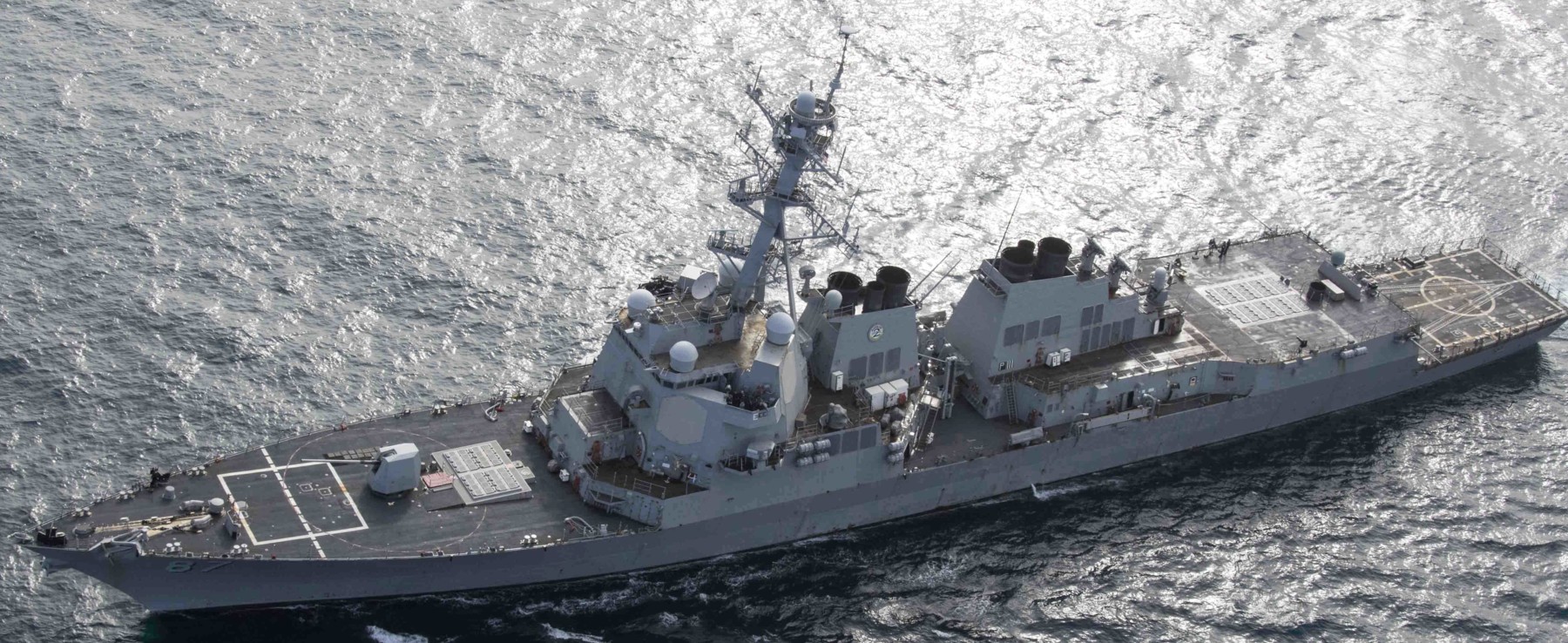 Atlantic Ocean - February 2019  Atlantic Ocean - February 2019 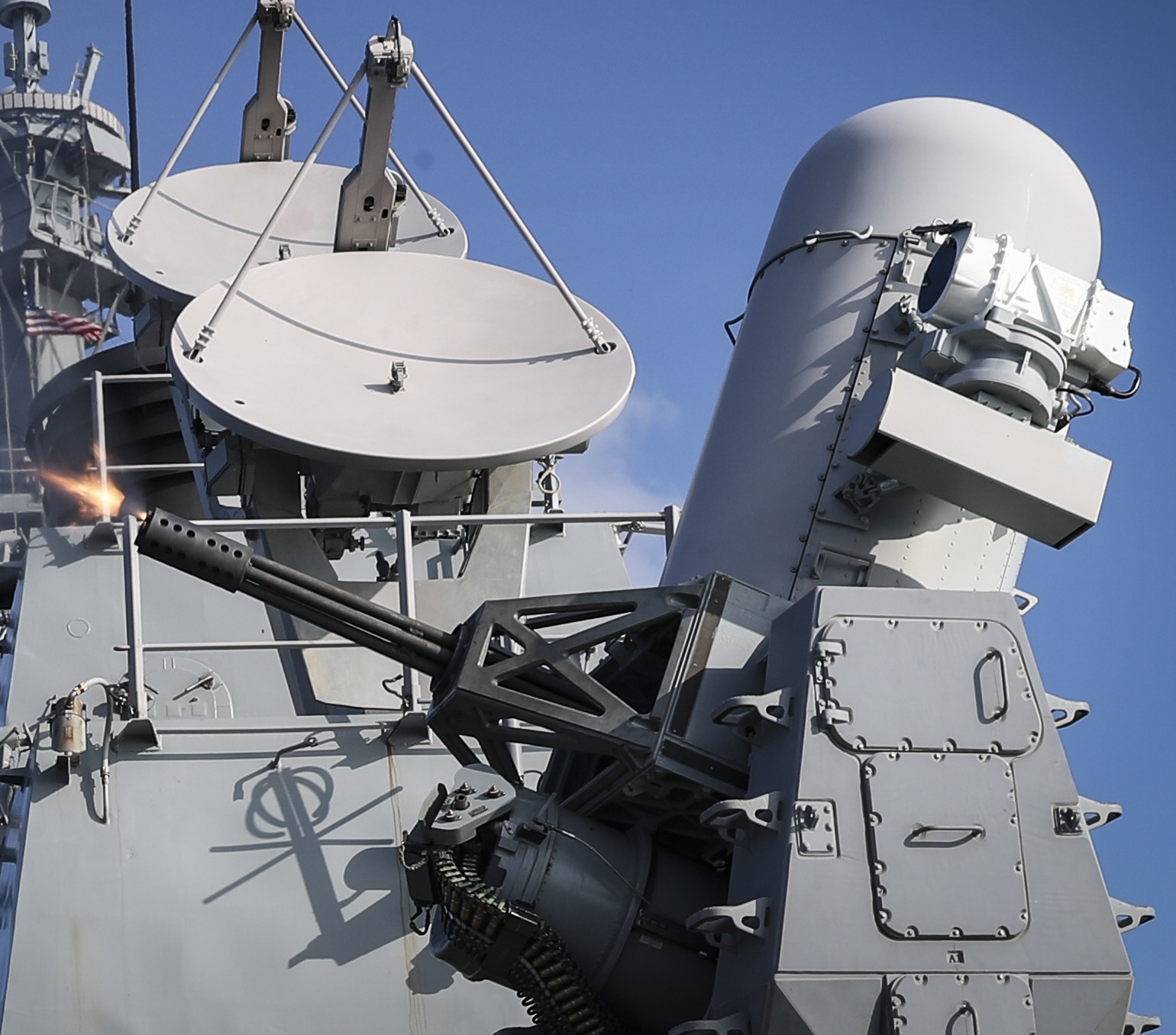 Mk.15 Phalanx close-in weapon system (CIWS) fire exercise - Atlantic Ocean - November 2018 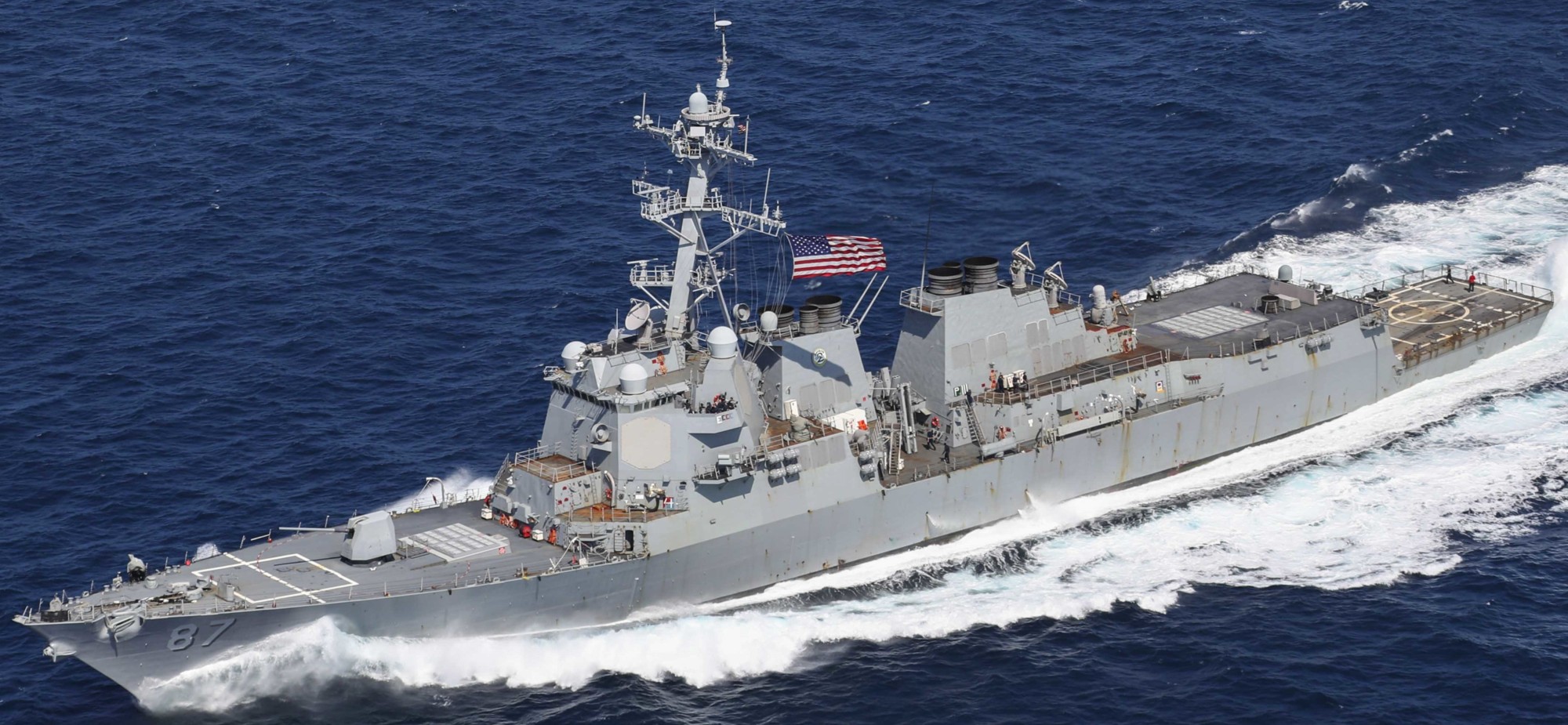 Atlantic Ocean - August 2018 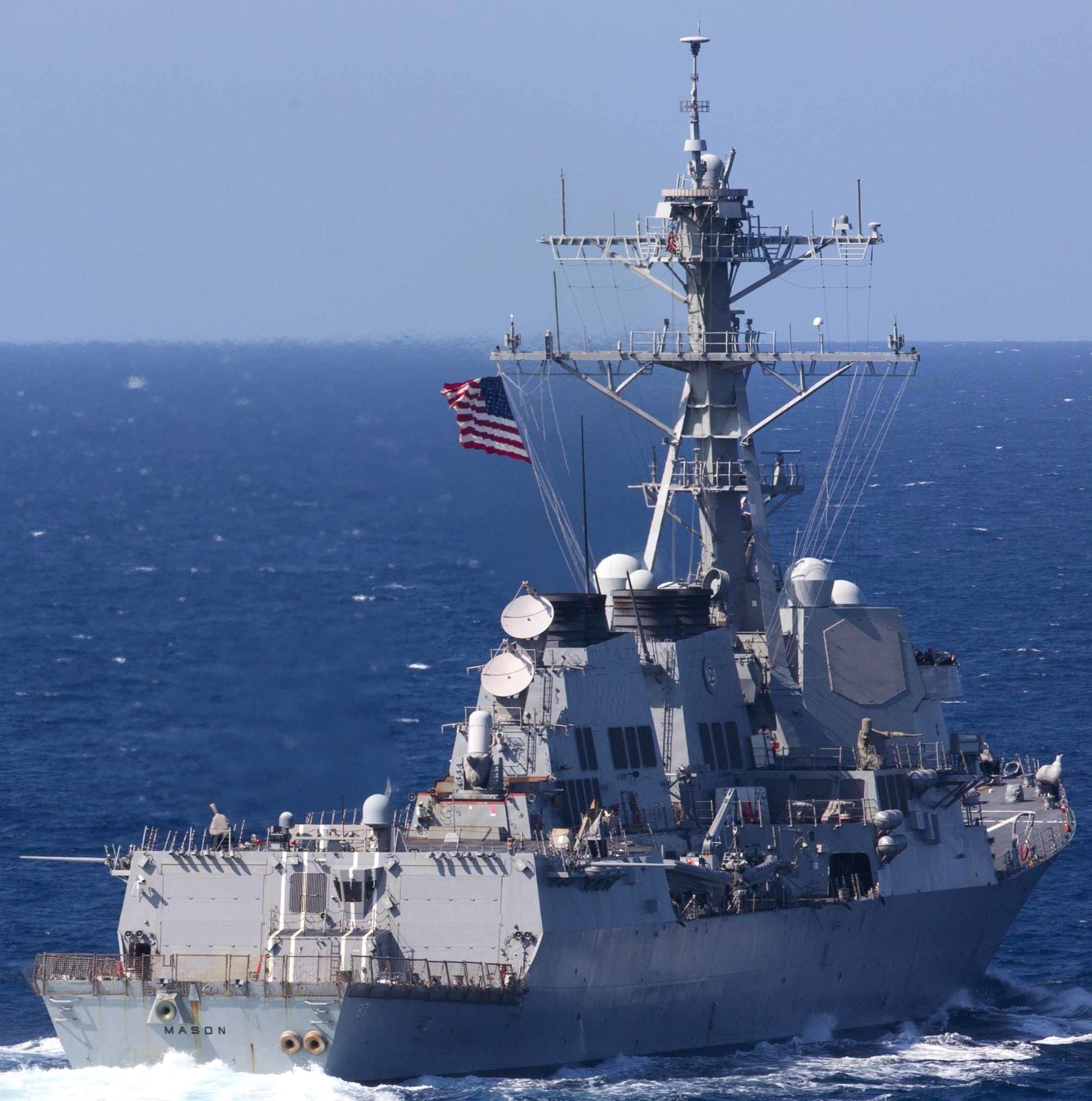 Atlantic Ocean - August 2018 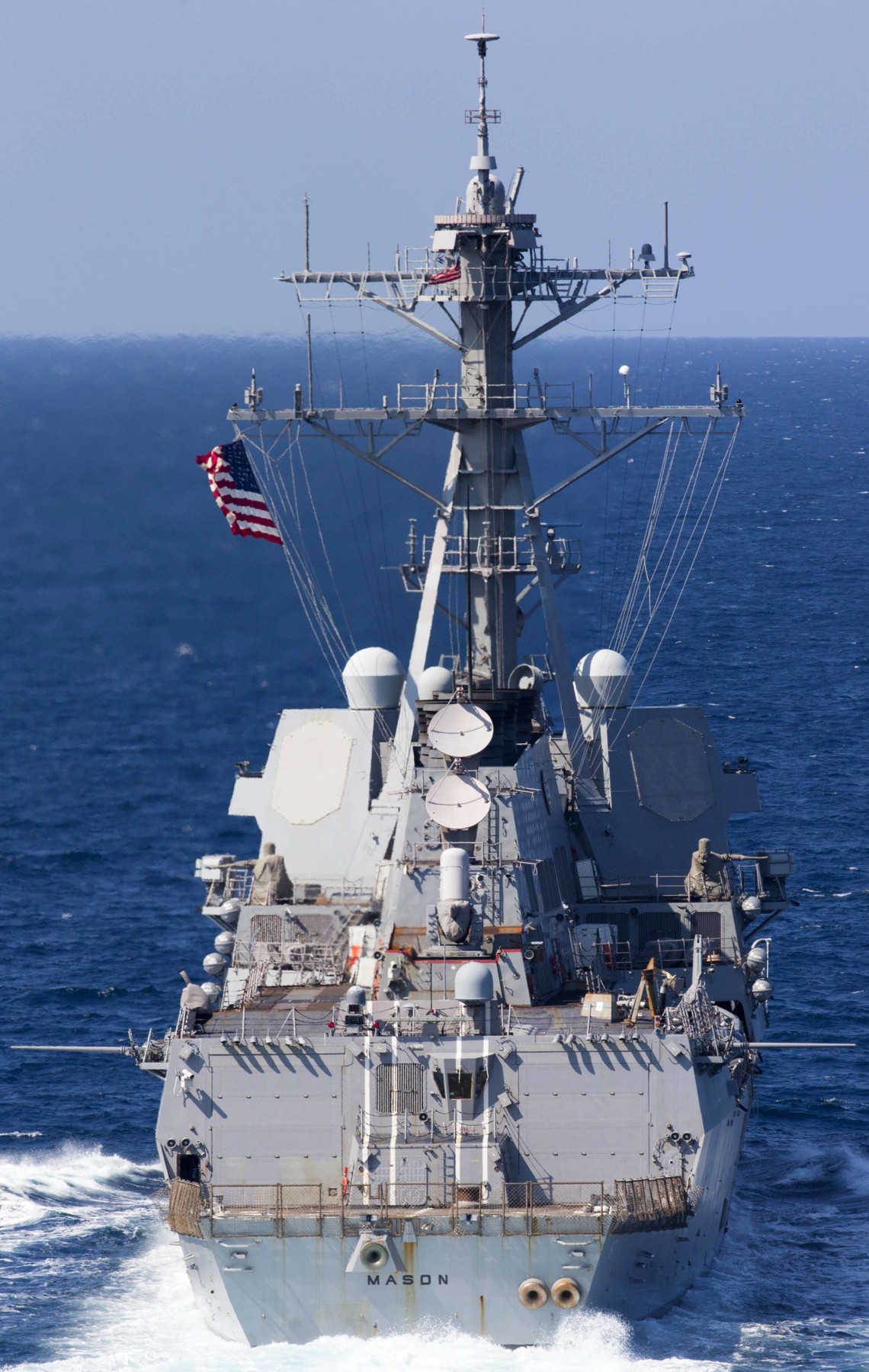 Atlantic Ocean - August 2018 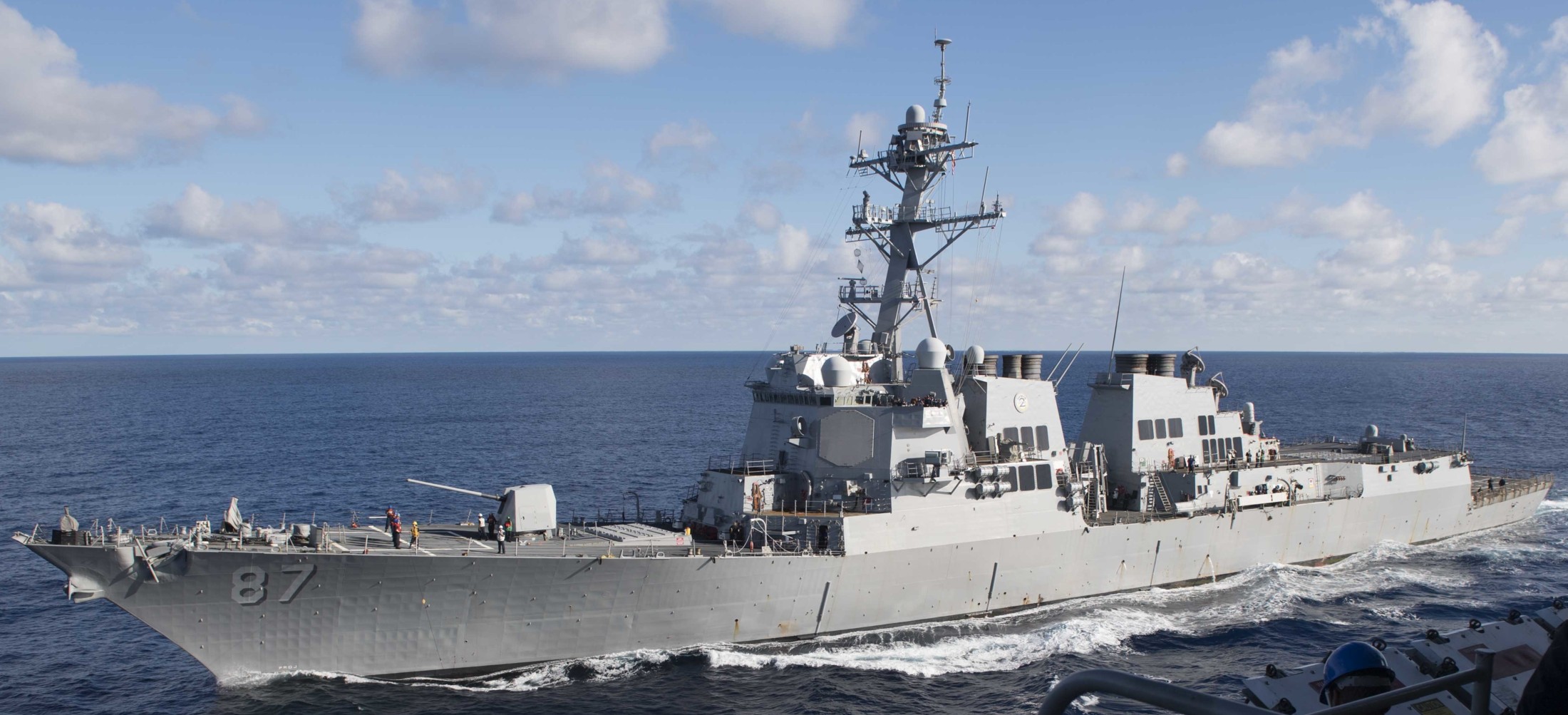 Atlantic Ocean - August 2018 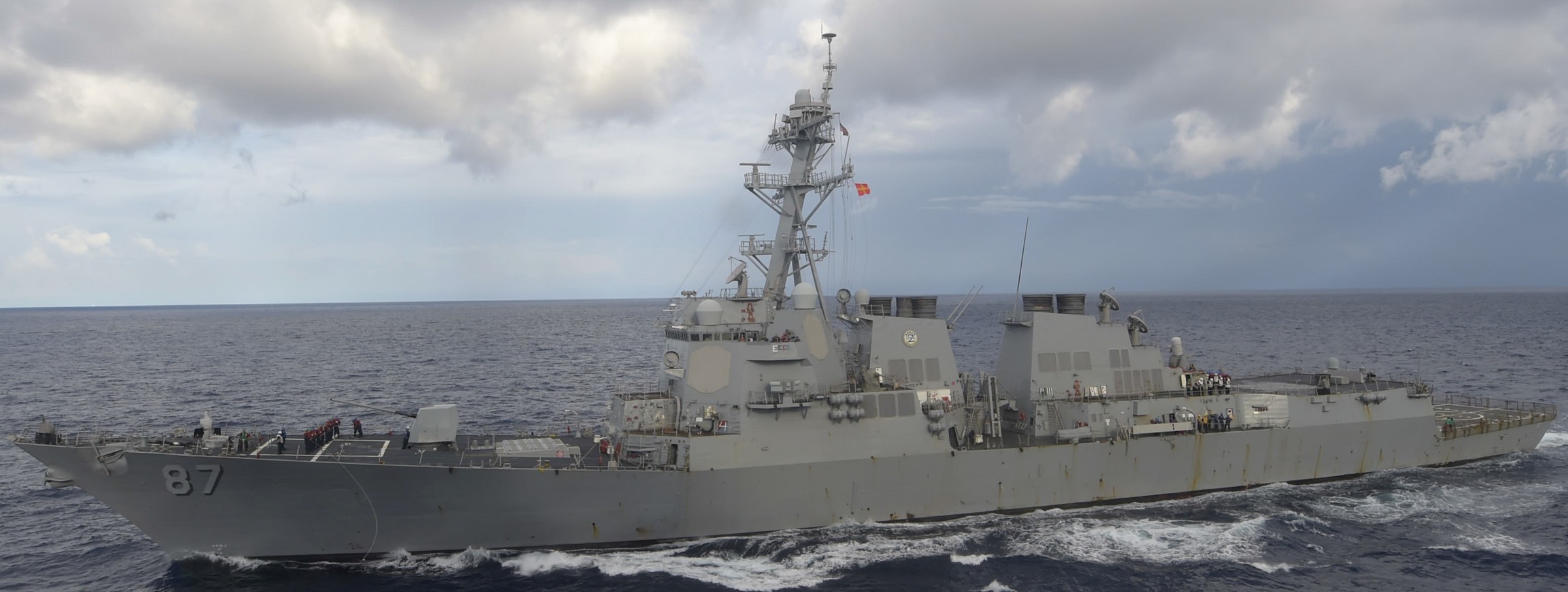 Atlantic Ocean - August 2018 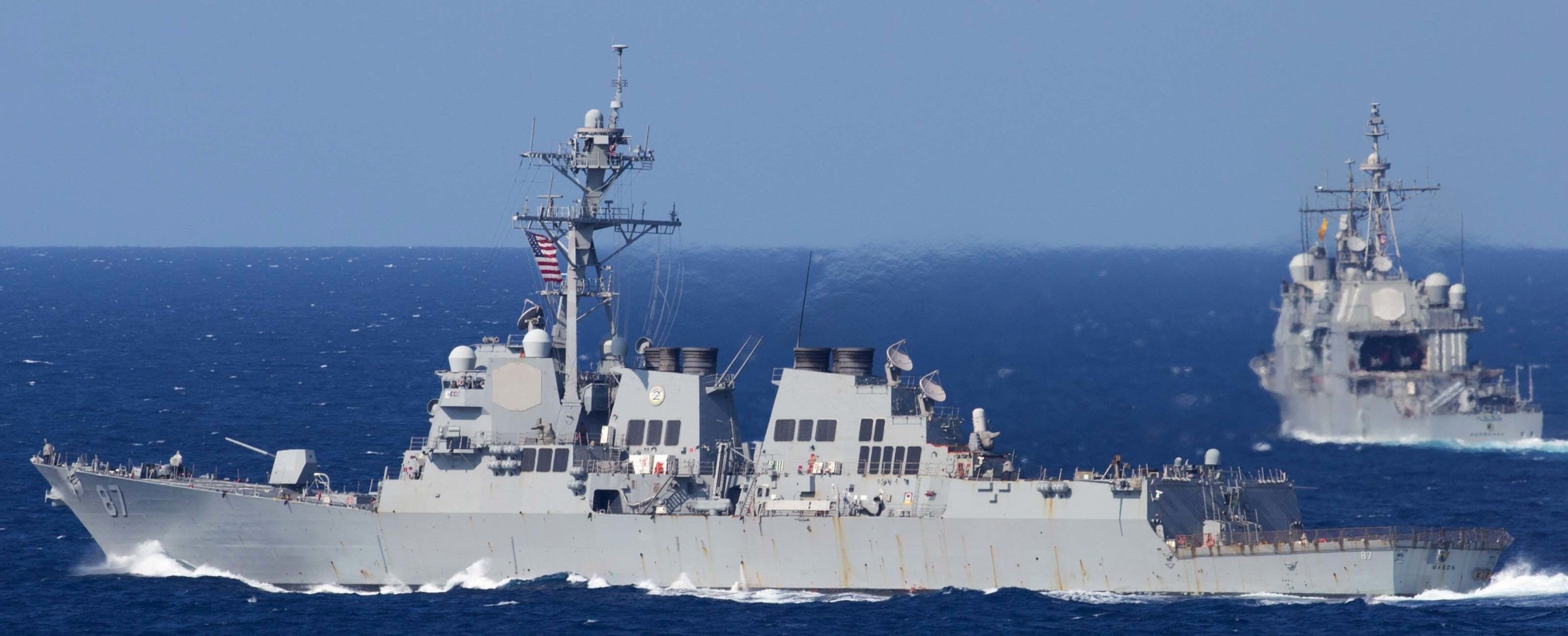 Atlantic Ocean - August 2018 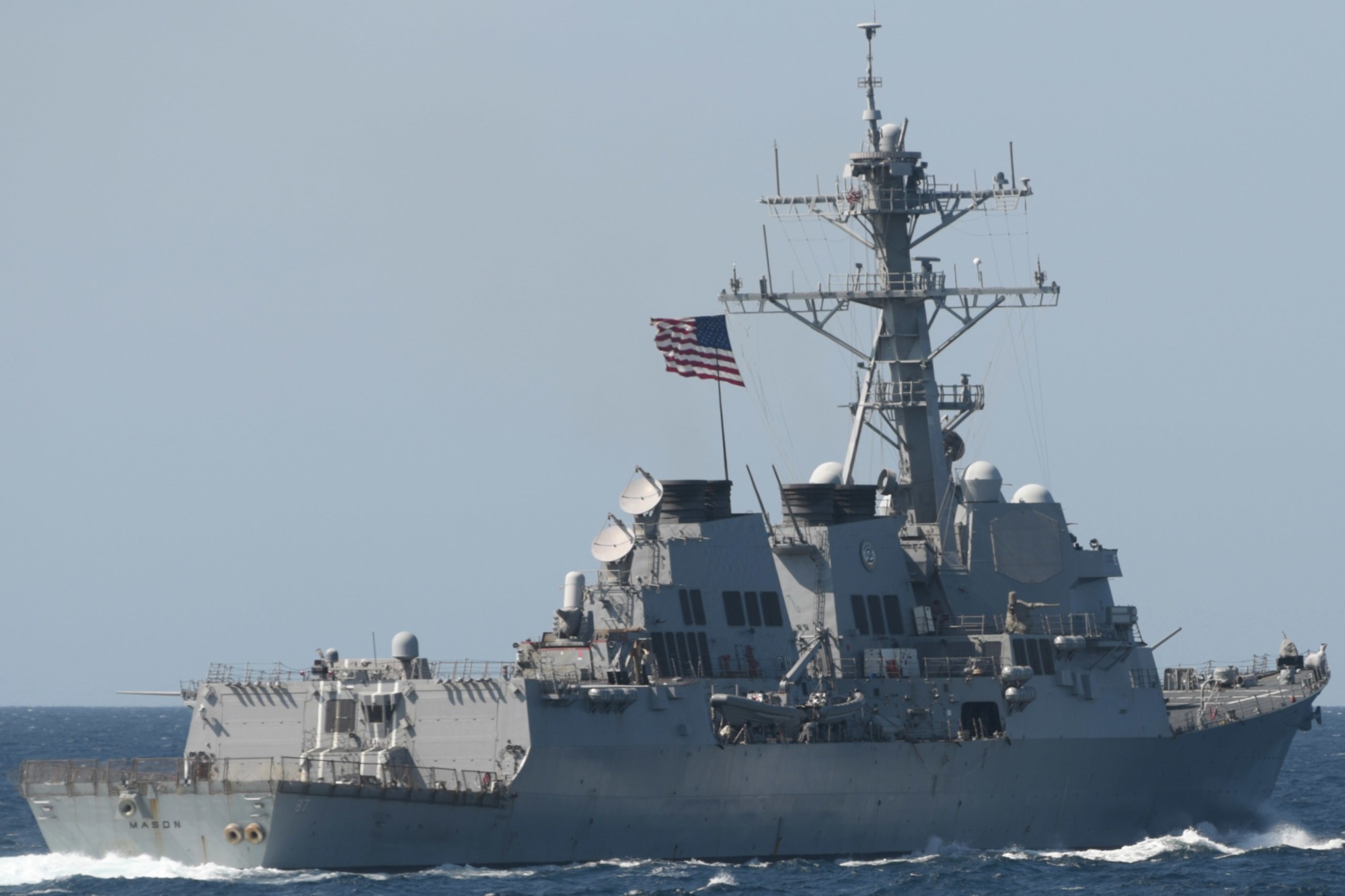 Atlantic Ocean - August 2018  returning to Naval Station Norfolk, Virginia - December 30, 2016 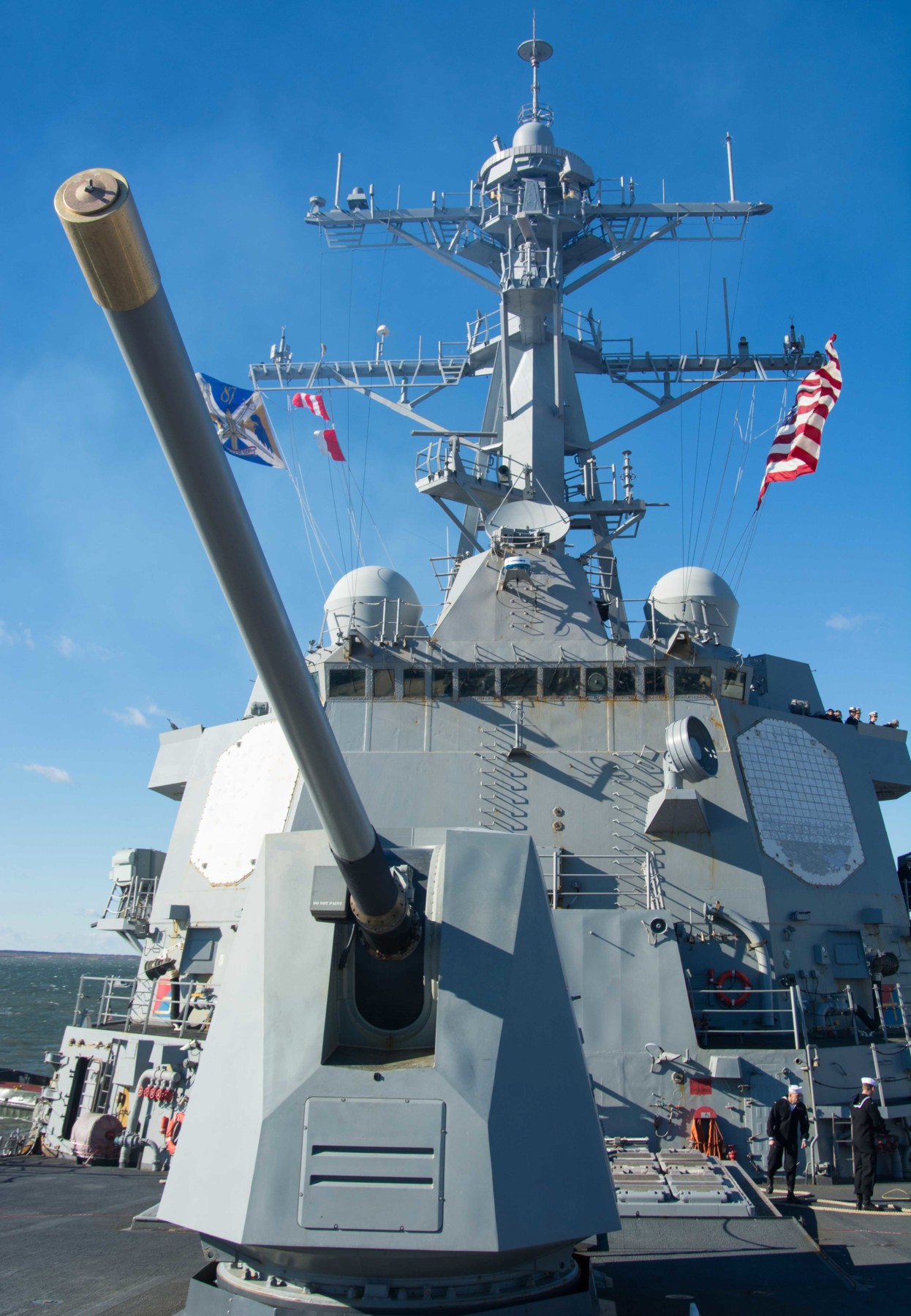 returning to Naval Station Norfolk, Virginia - December 30, 2016  5th Fleet AOR - November 2016 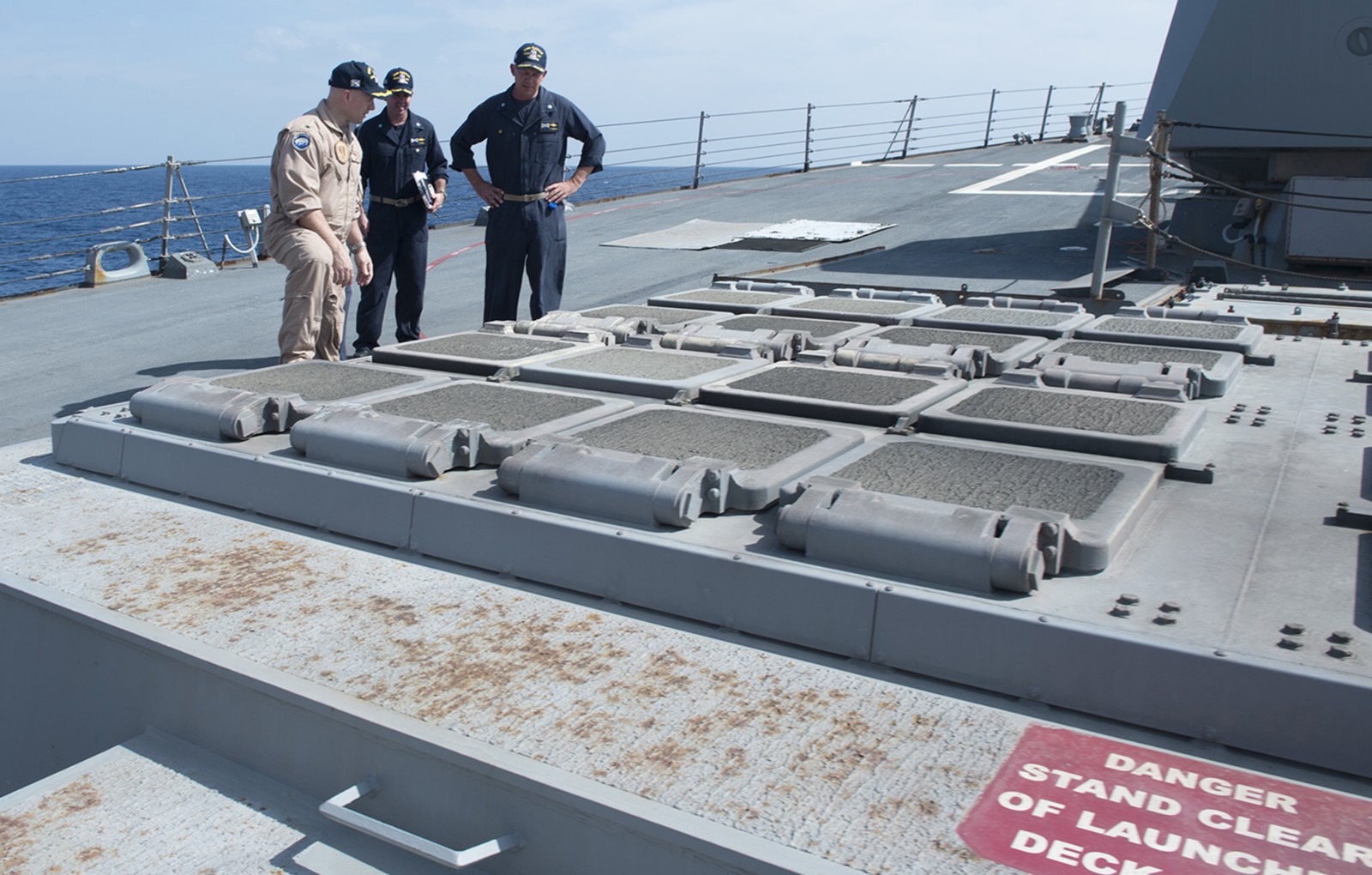 5th Fleet AOR - November 2016 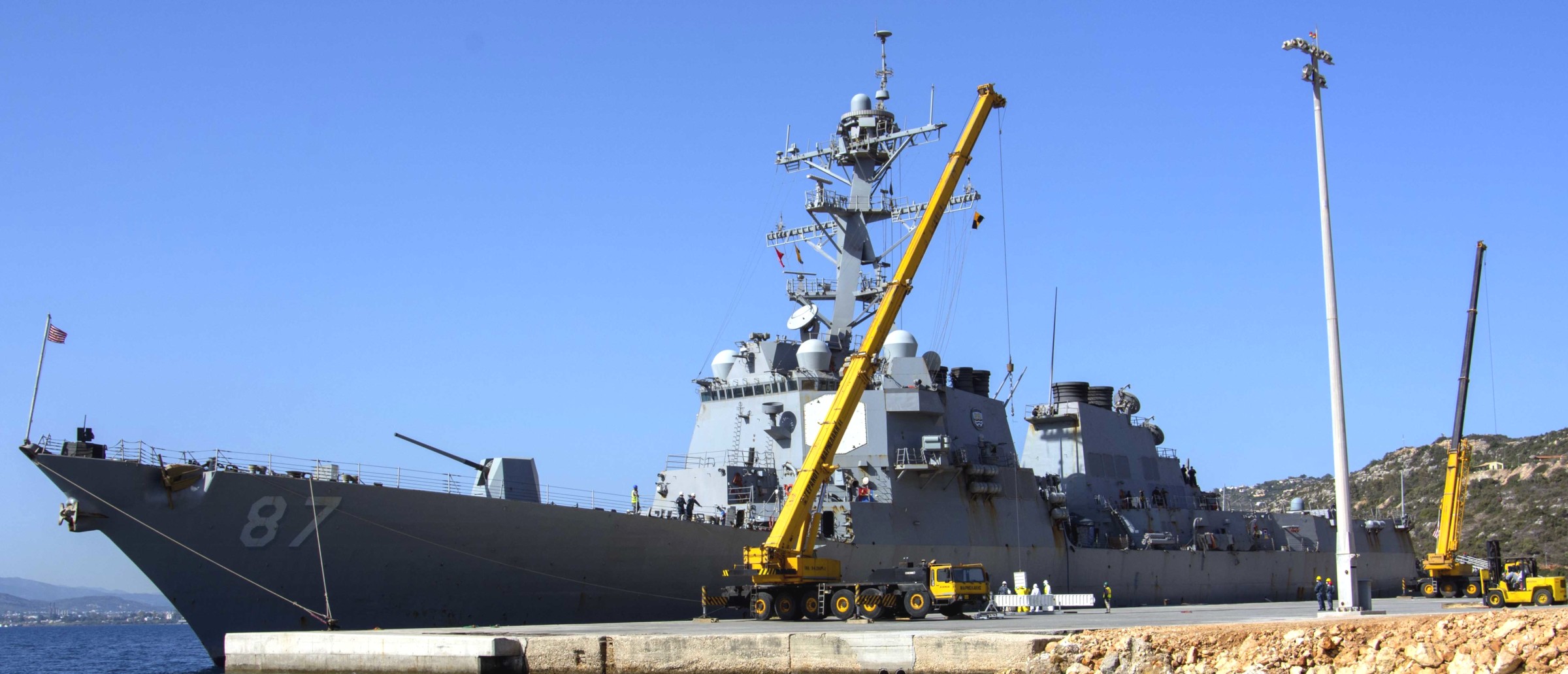 Naval Support Activity Souda Bay, Crete, Greece - October 2016  Gulf of Oman - September 2016 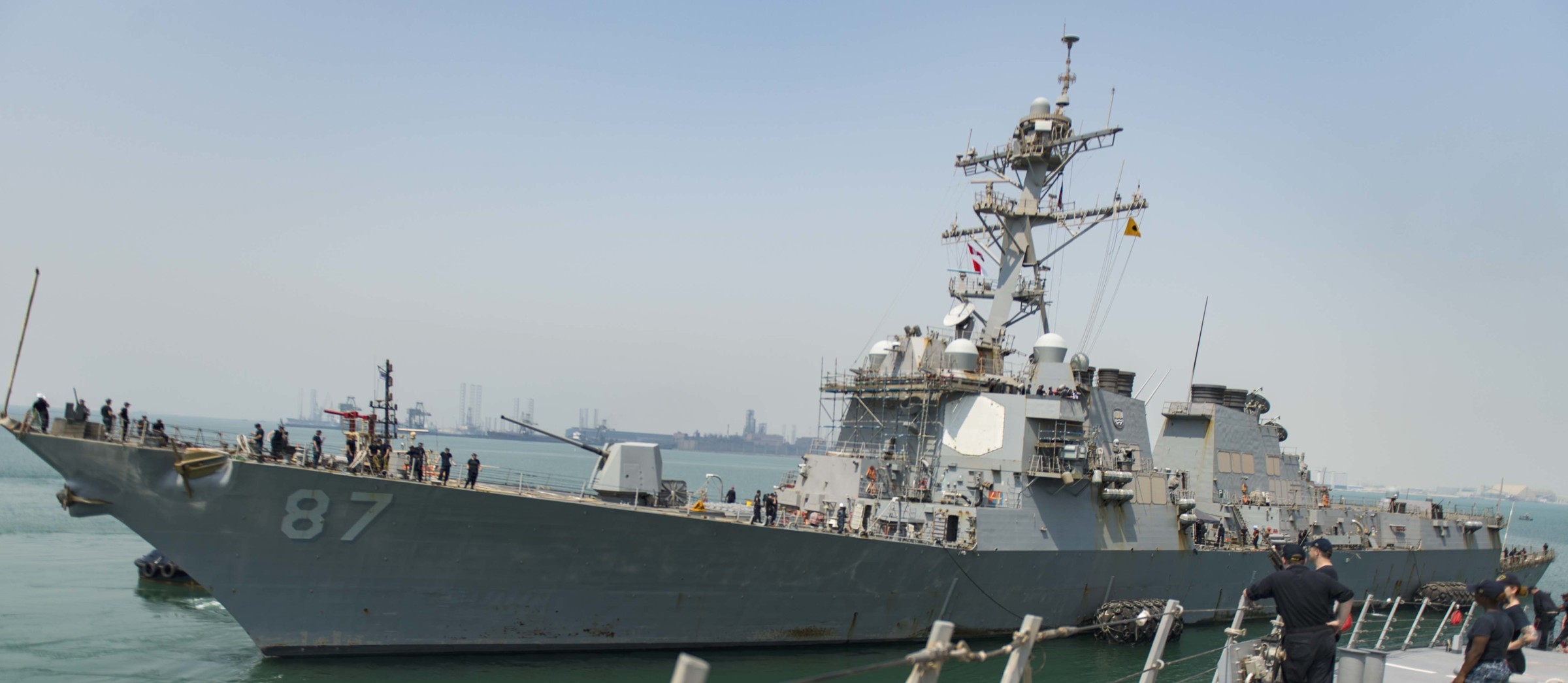 Manama, Bahrain - September 2016 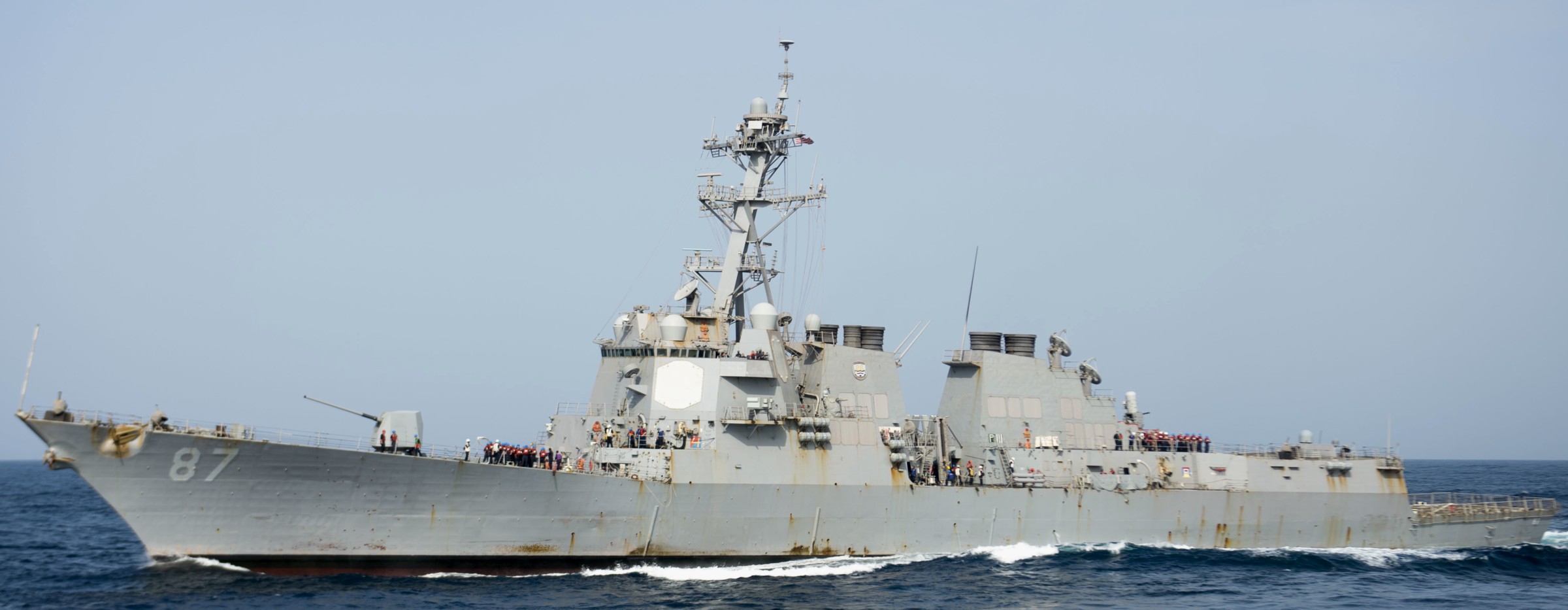 Gulf of Aden - August 2016 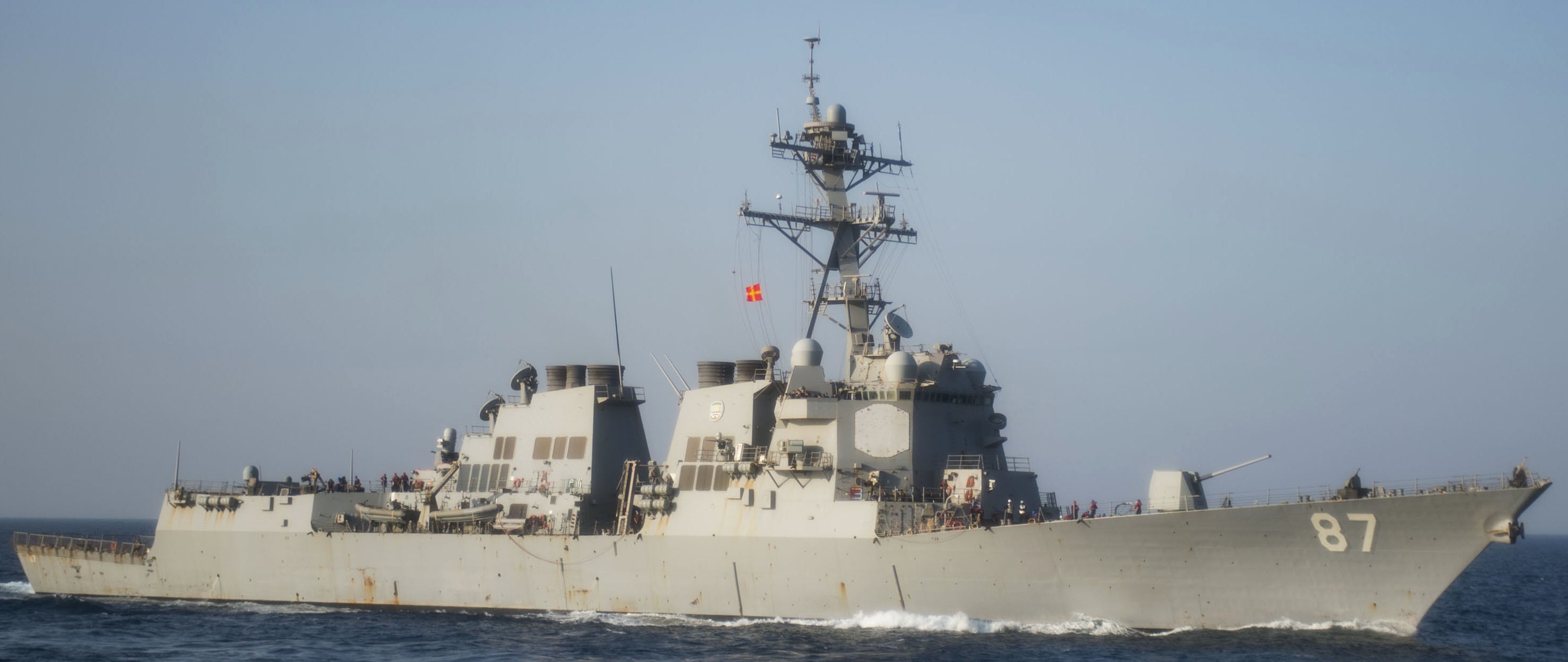 Arabian Gulf - August 2016 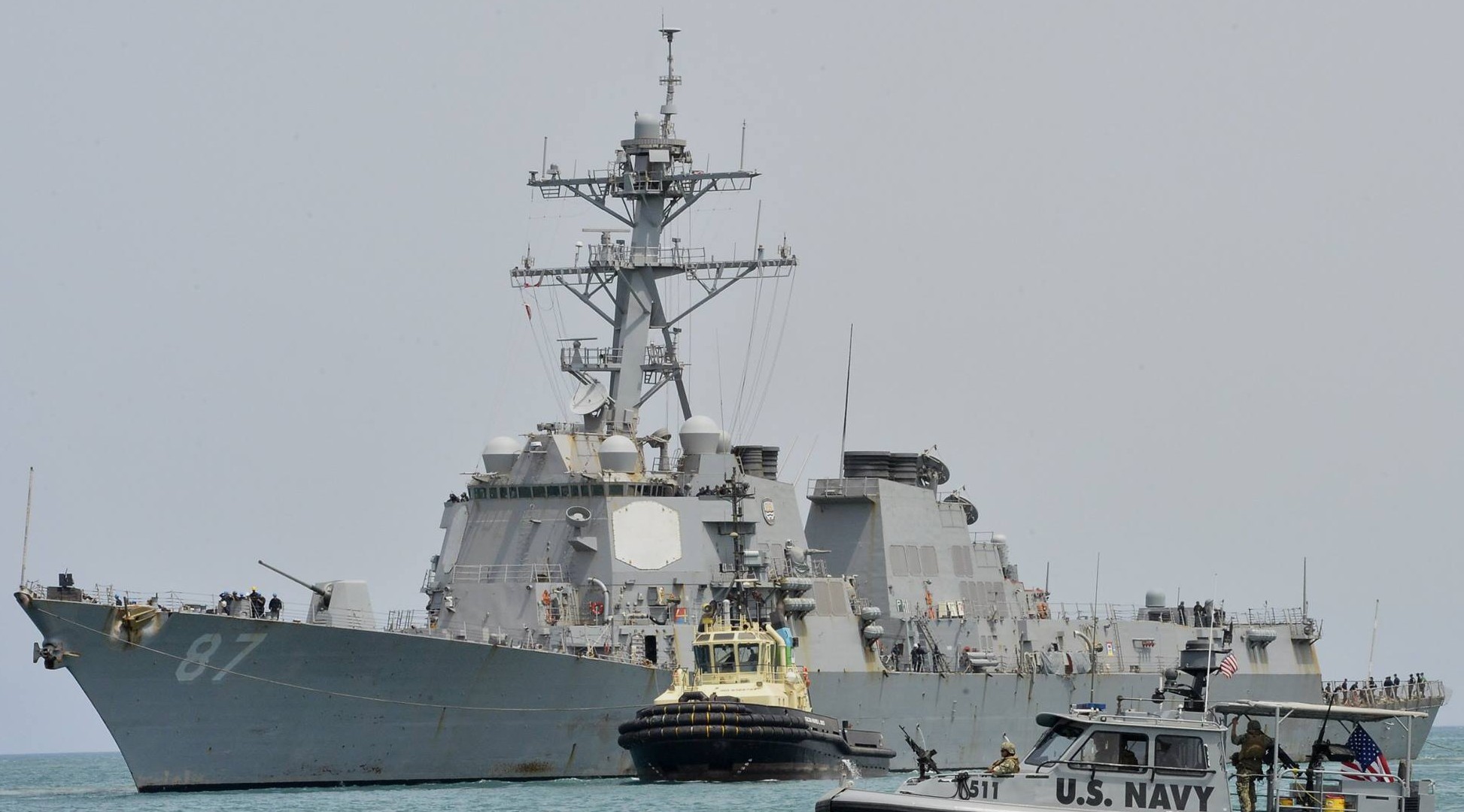 Djibouti - July 2016 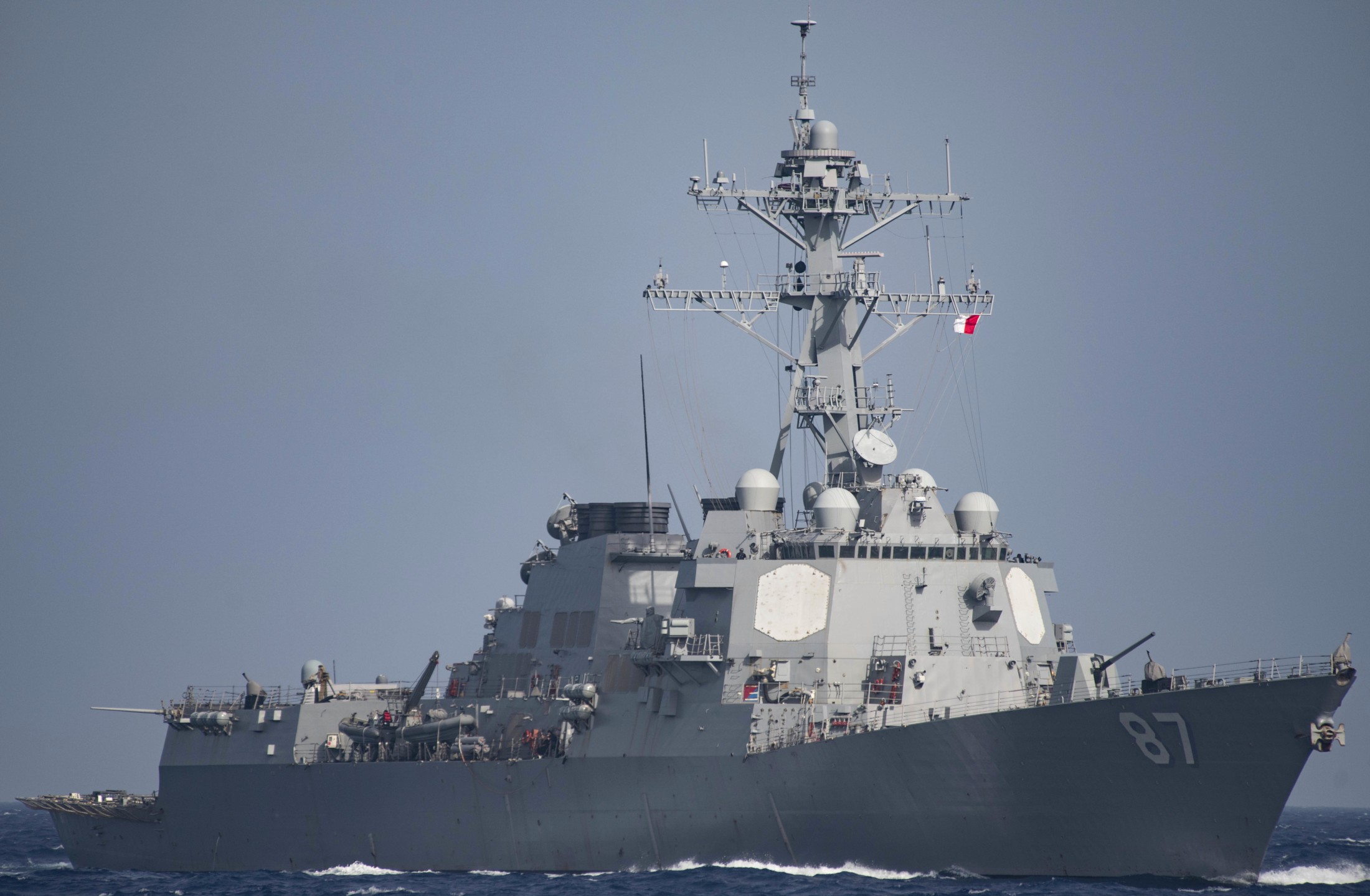 Mediterranean Sea - June 2016 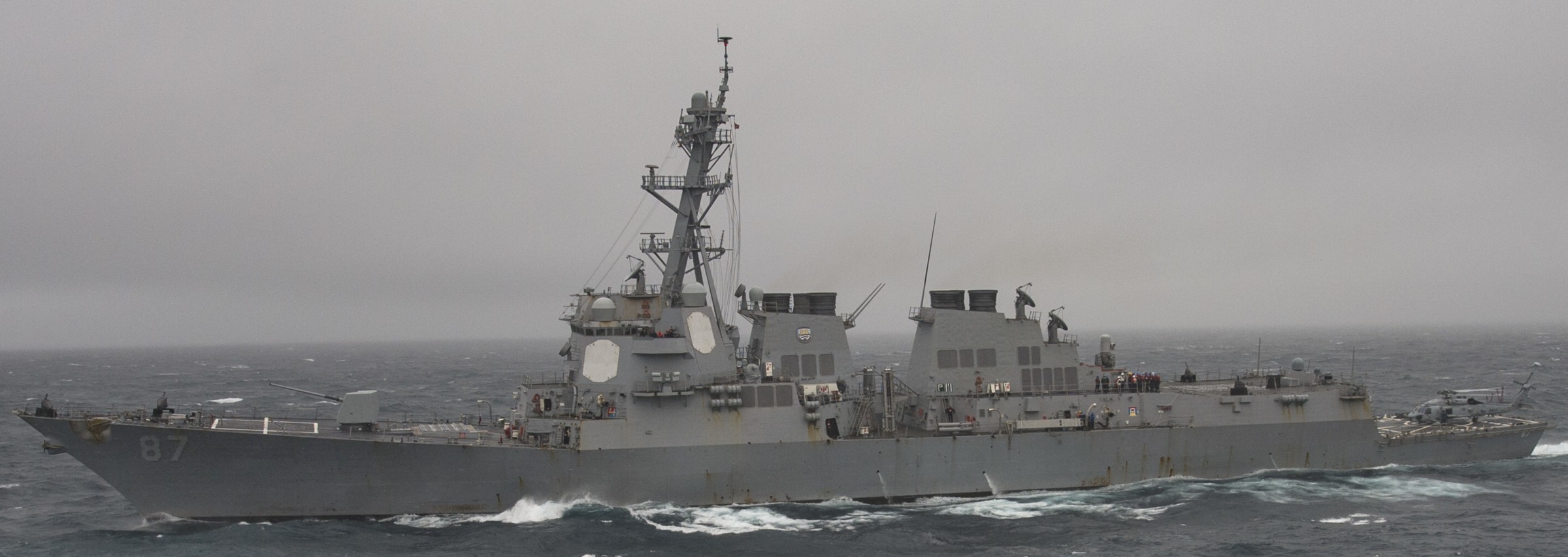 Atlantic Ocean - June 2016 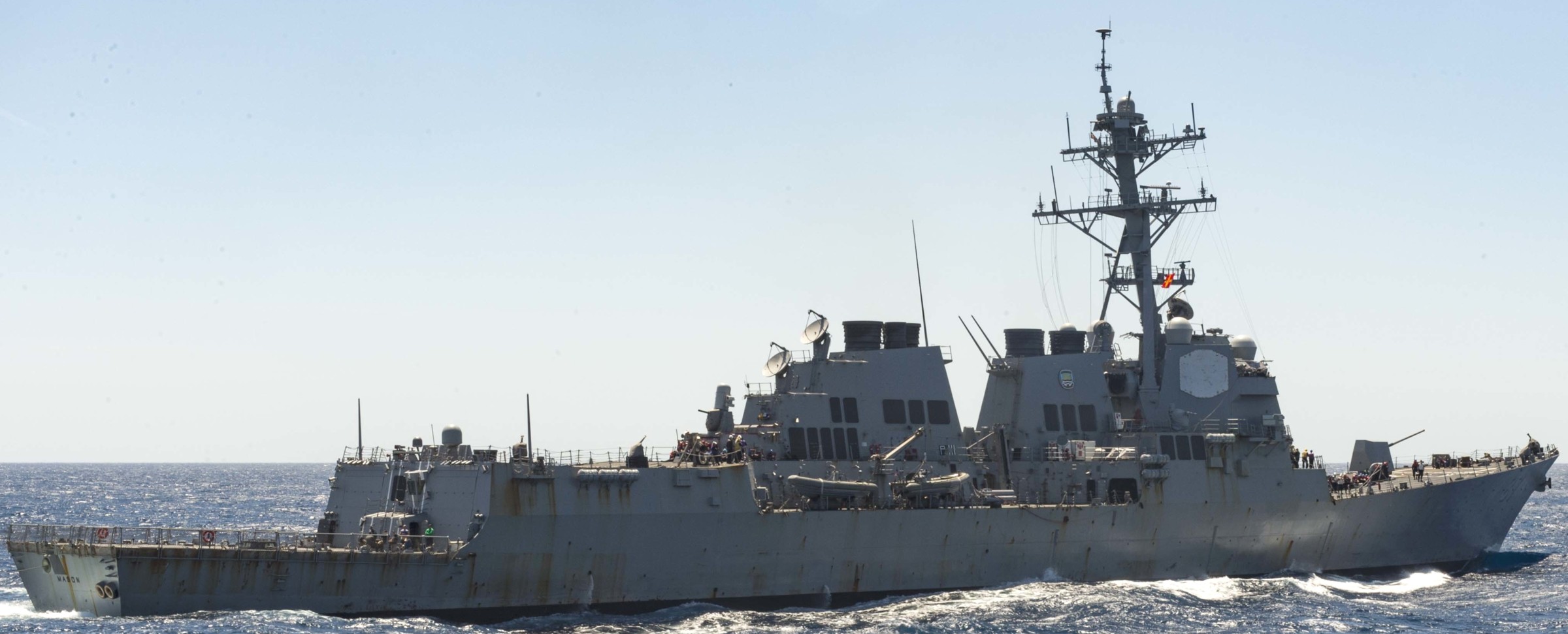 Atlantic Ocean - April 2016 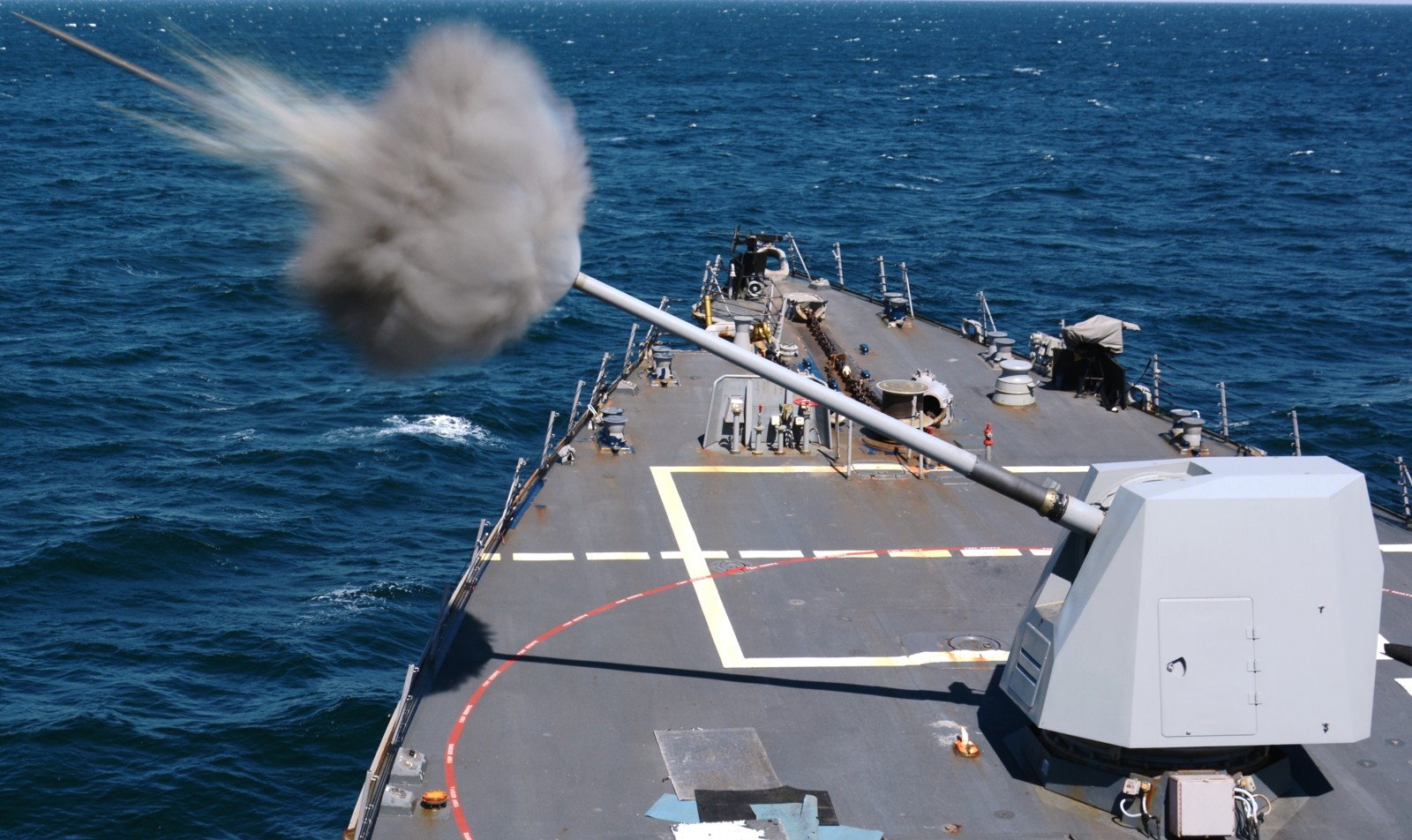 Mk.45 Mod.4 gun fire - Atlantic Ocean - April 2016  Atlantic Ocean - November 2015  Atlantic Ocean - November 2015 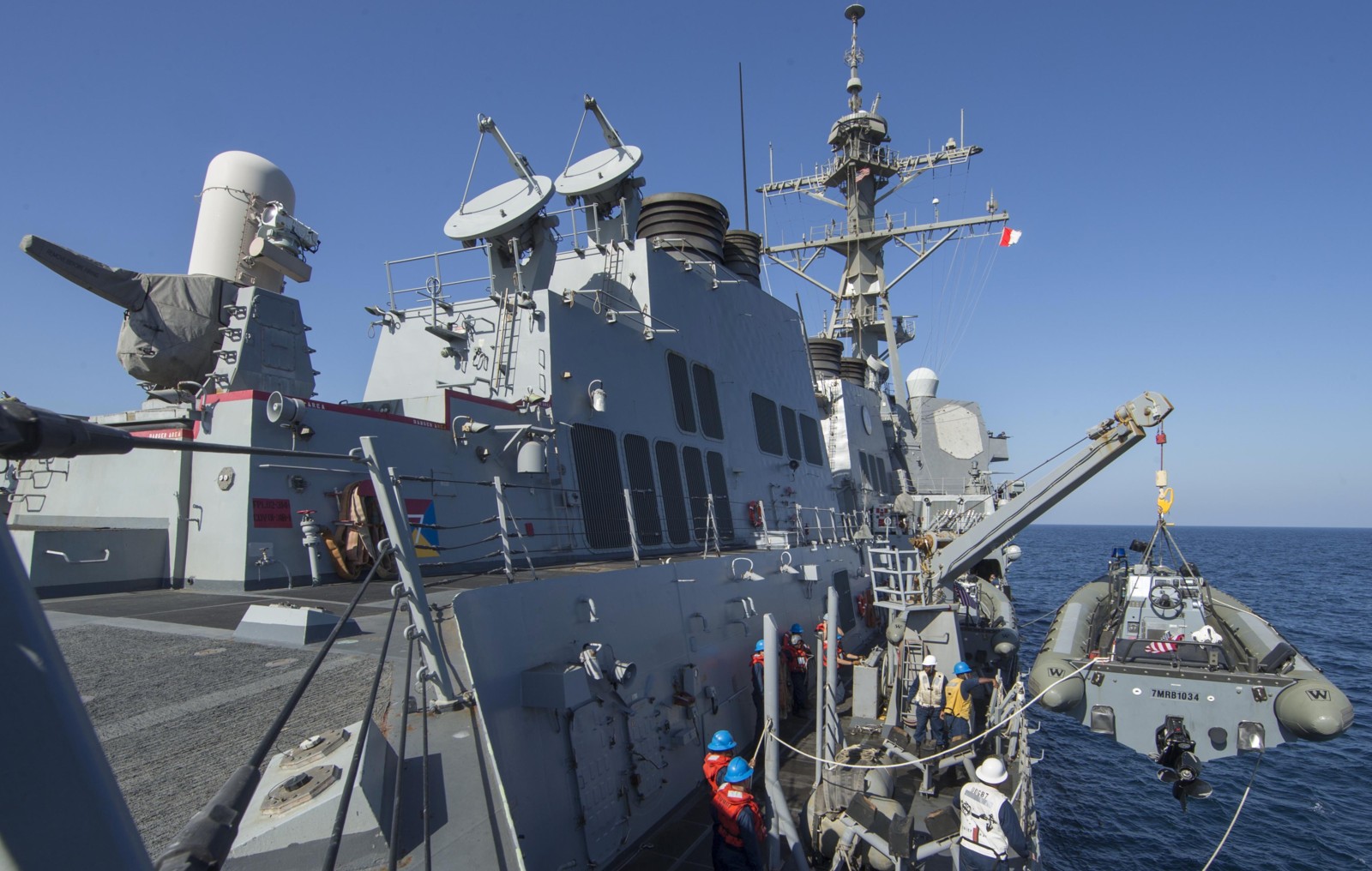 Gulf of Oman - December 2013 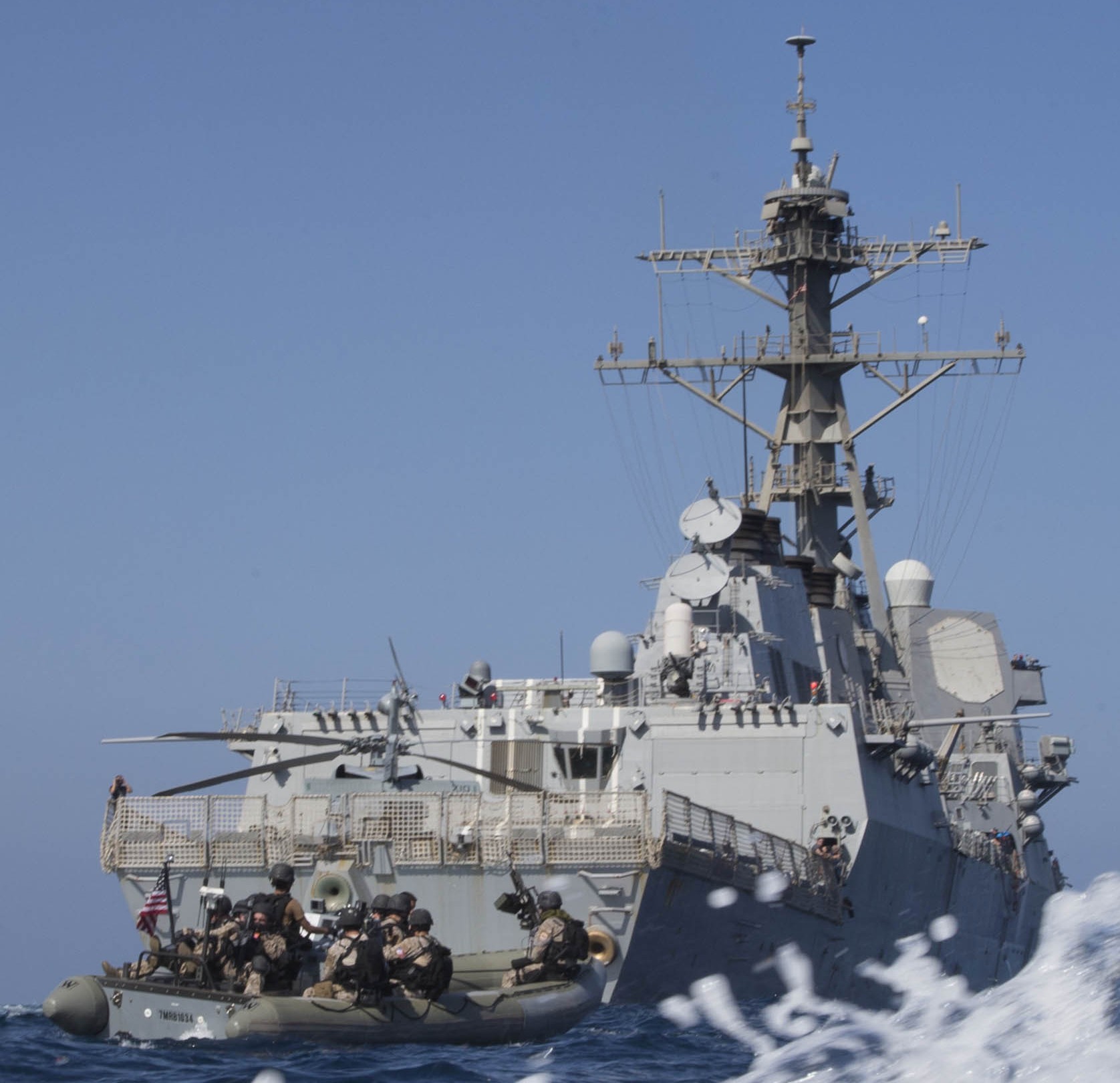 Gulf of Aden - November 2013 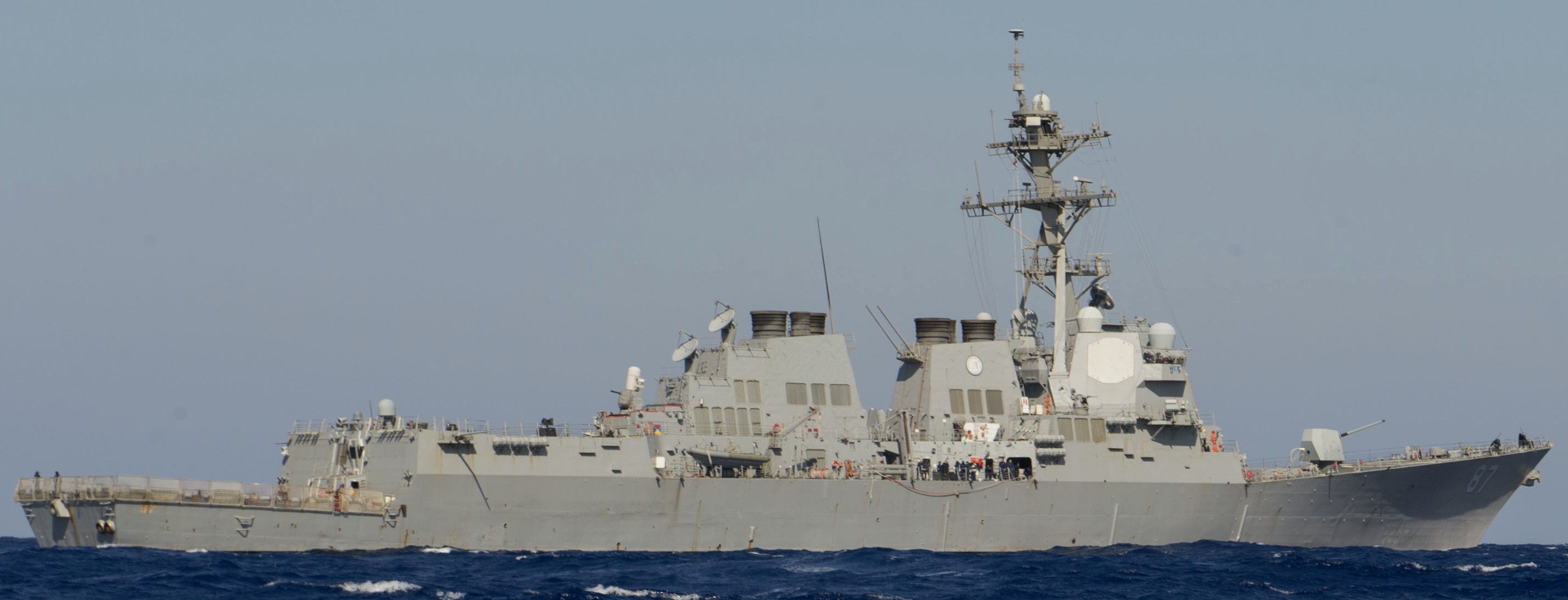 Mediterranean Sea - October 2013 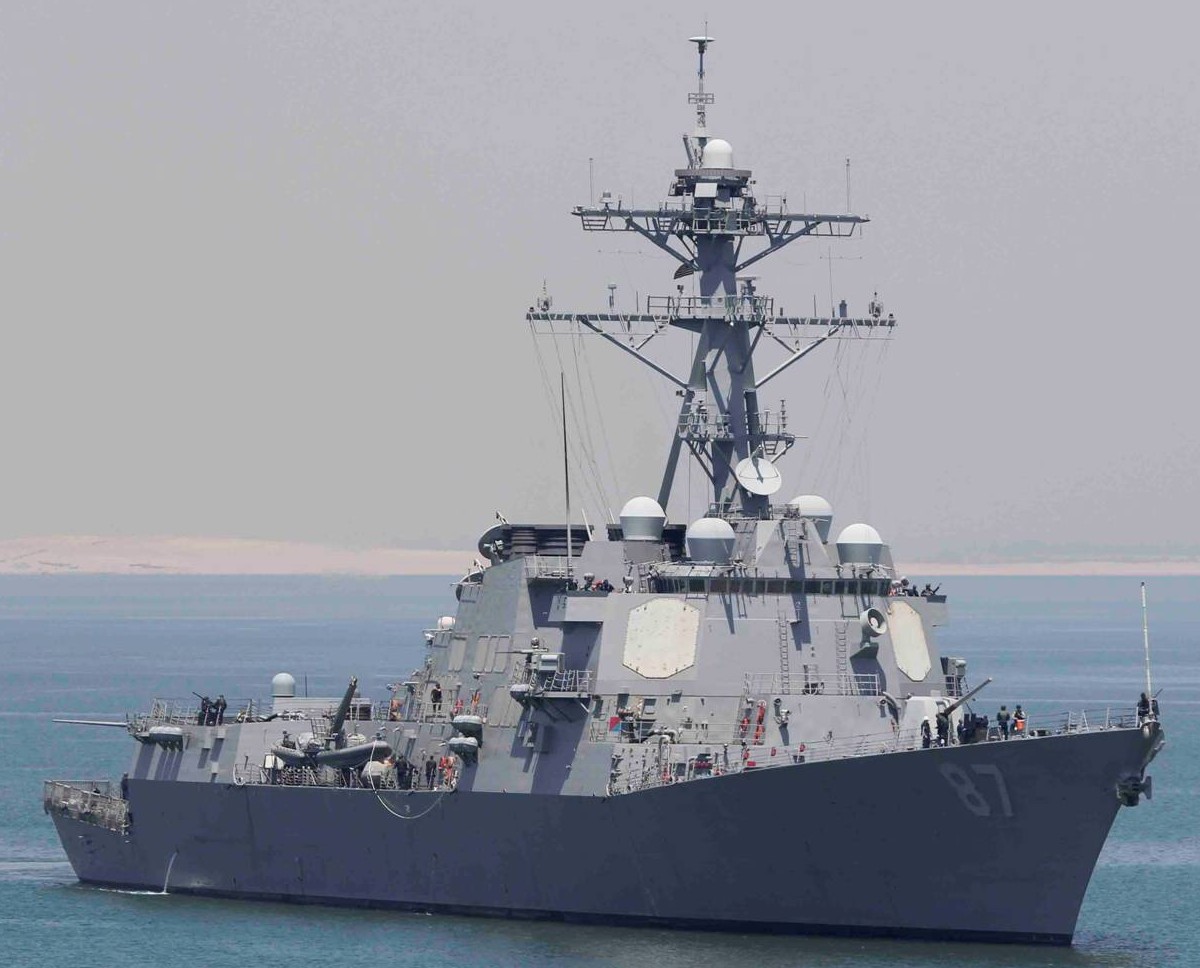 Suez Canal - August 2013 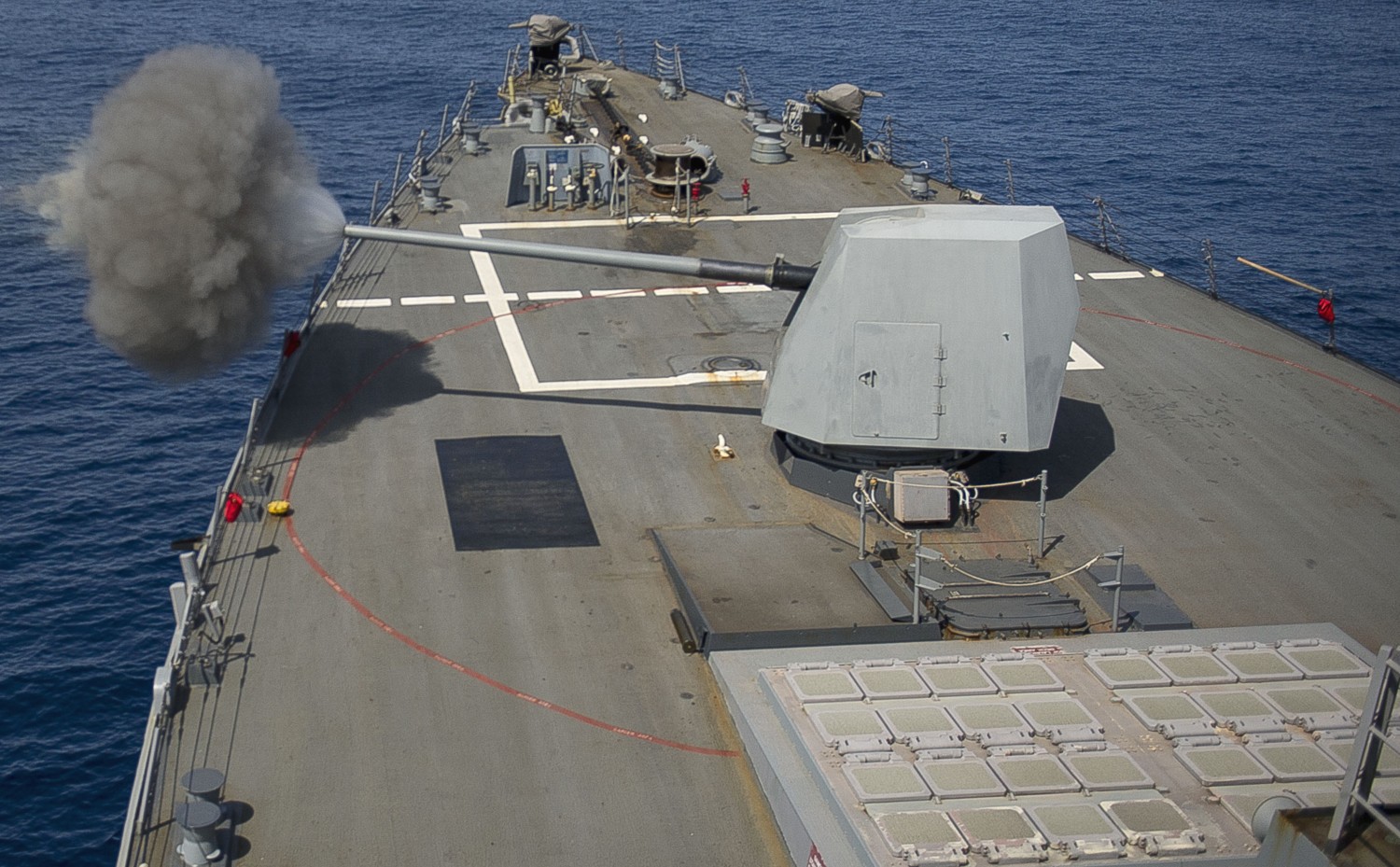 Mk.45 Mod.4 gun fire - Gulf of Aden - August 2013 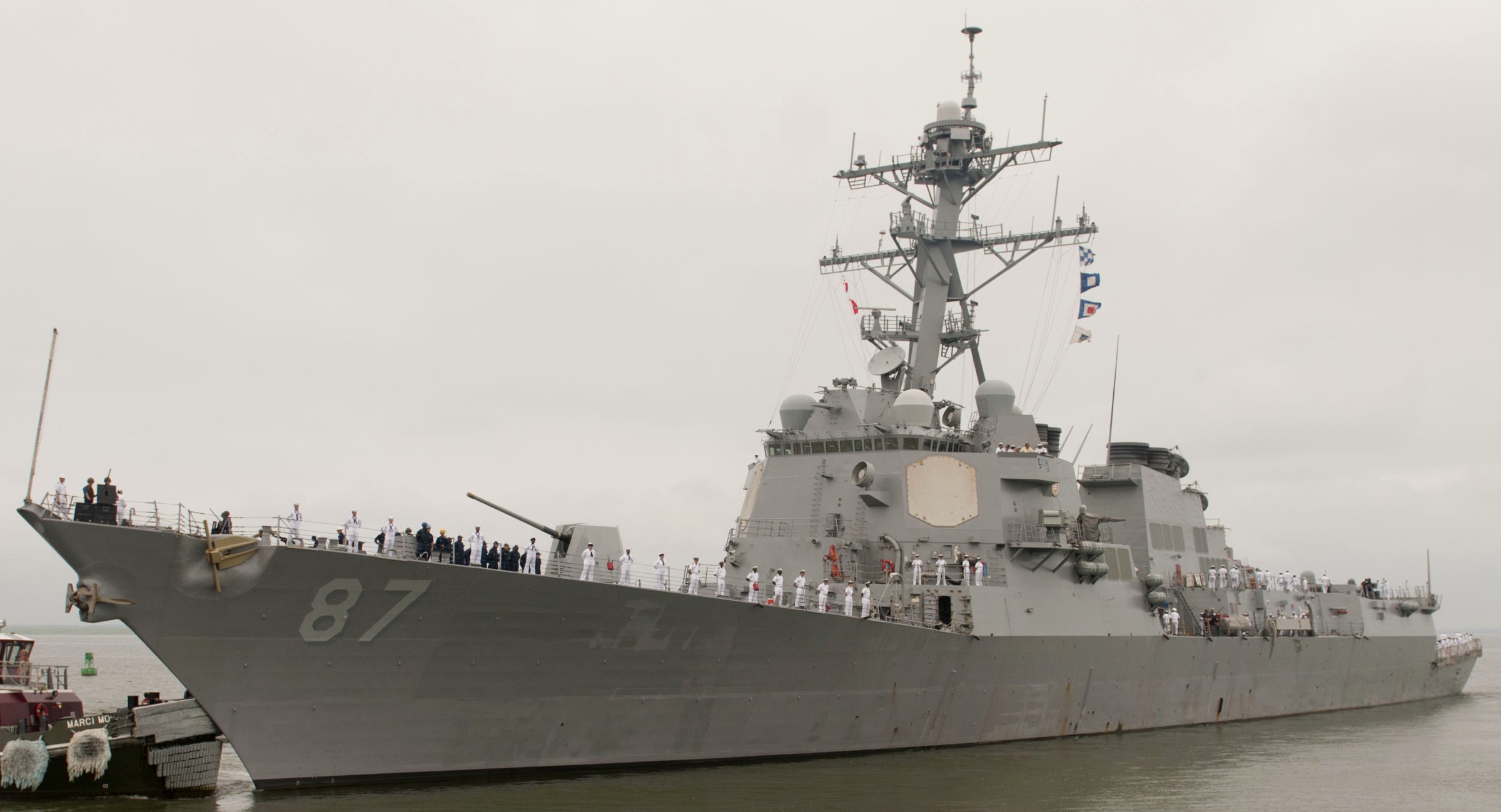 departing Naval Station Norfolk, Virginia - July 22, 2013  departing Naval Station Norfolk, Virginia - August 25, 2011 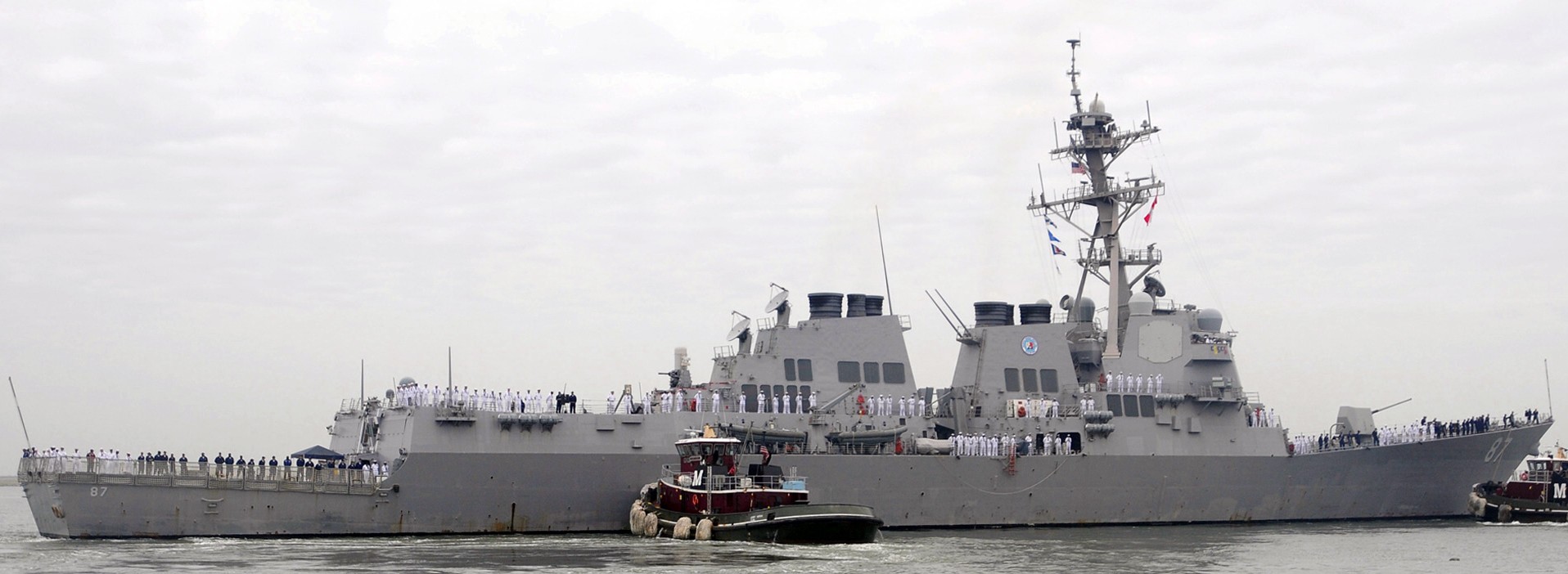 departing Naval Station Norfolk, Virginia - September 12, 2008 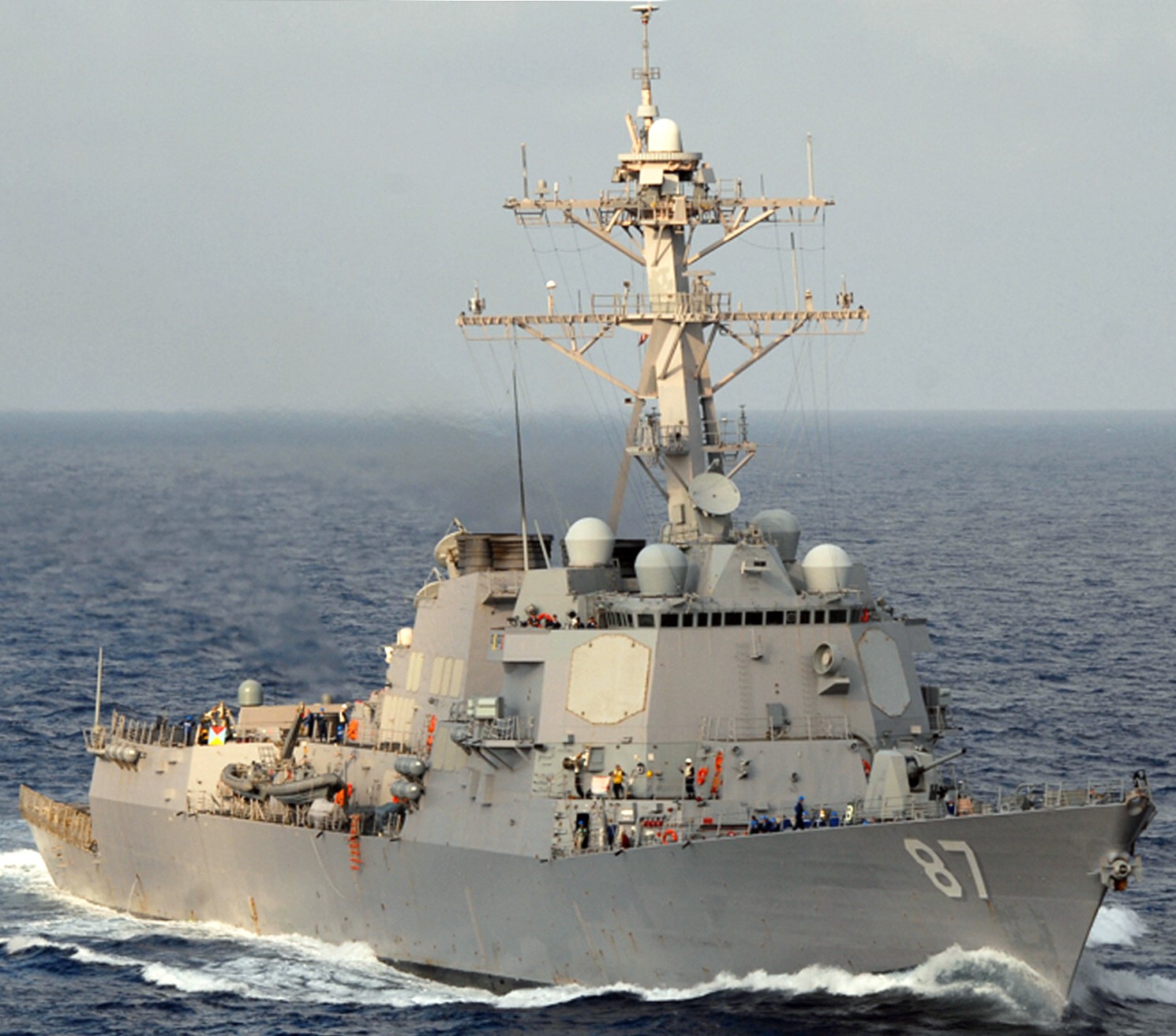 Atlantic Ocean - July 2008 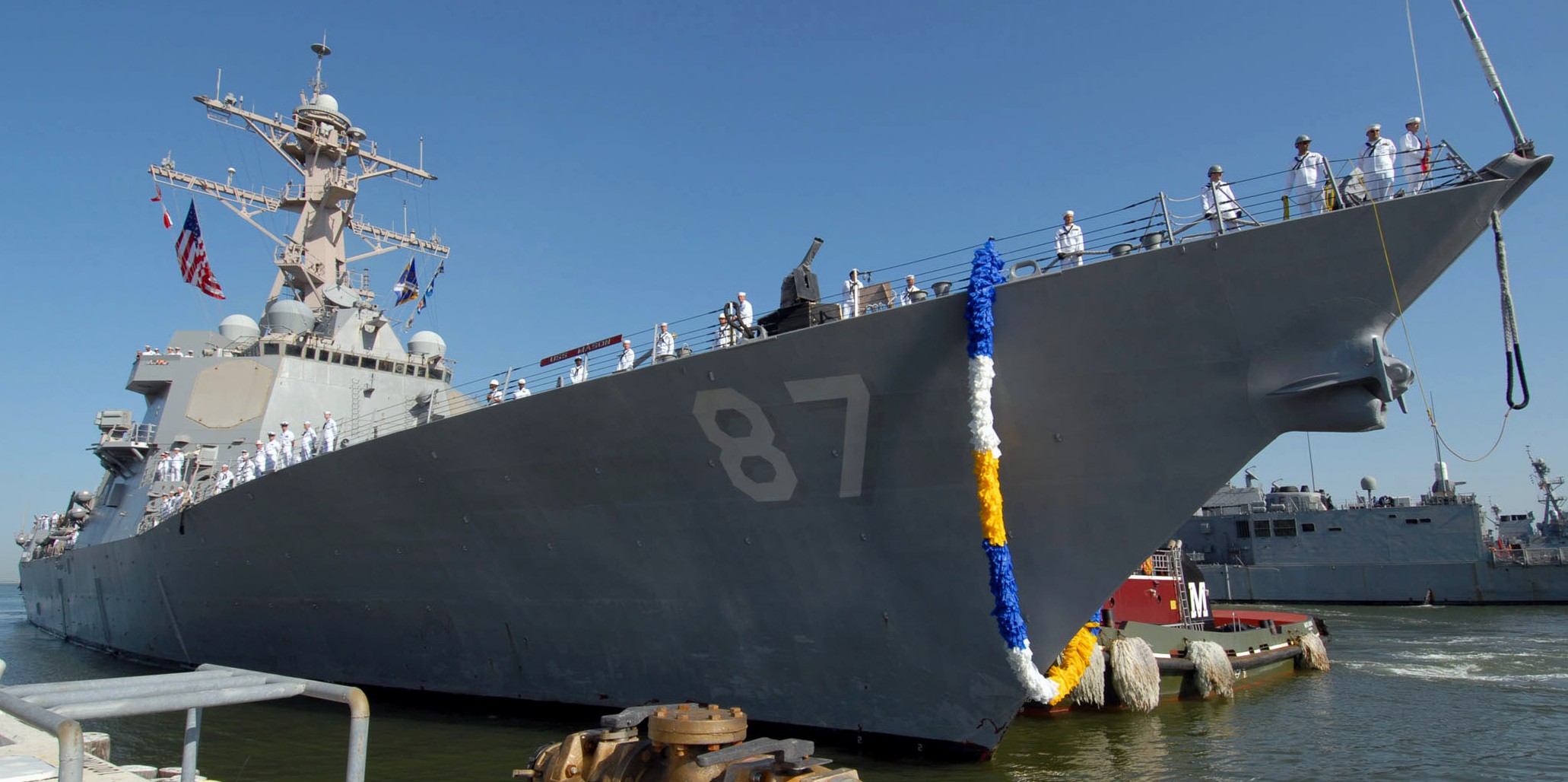 returning to Naval Station Norfolk, Virginia - May 23, 2007 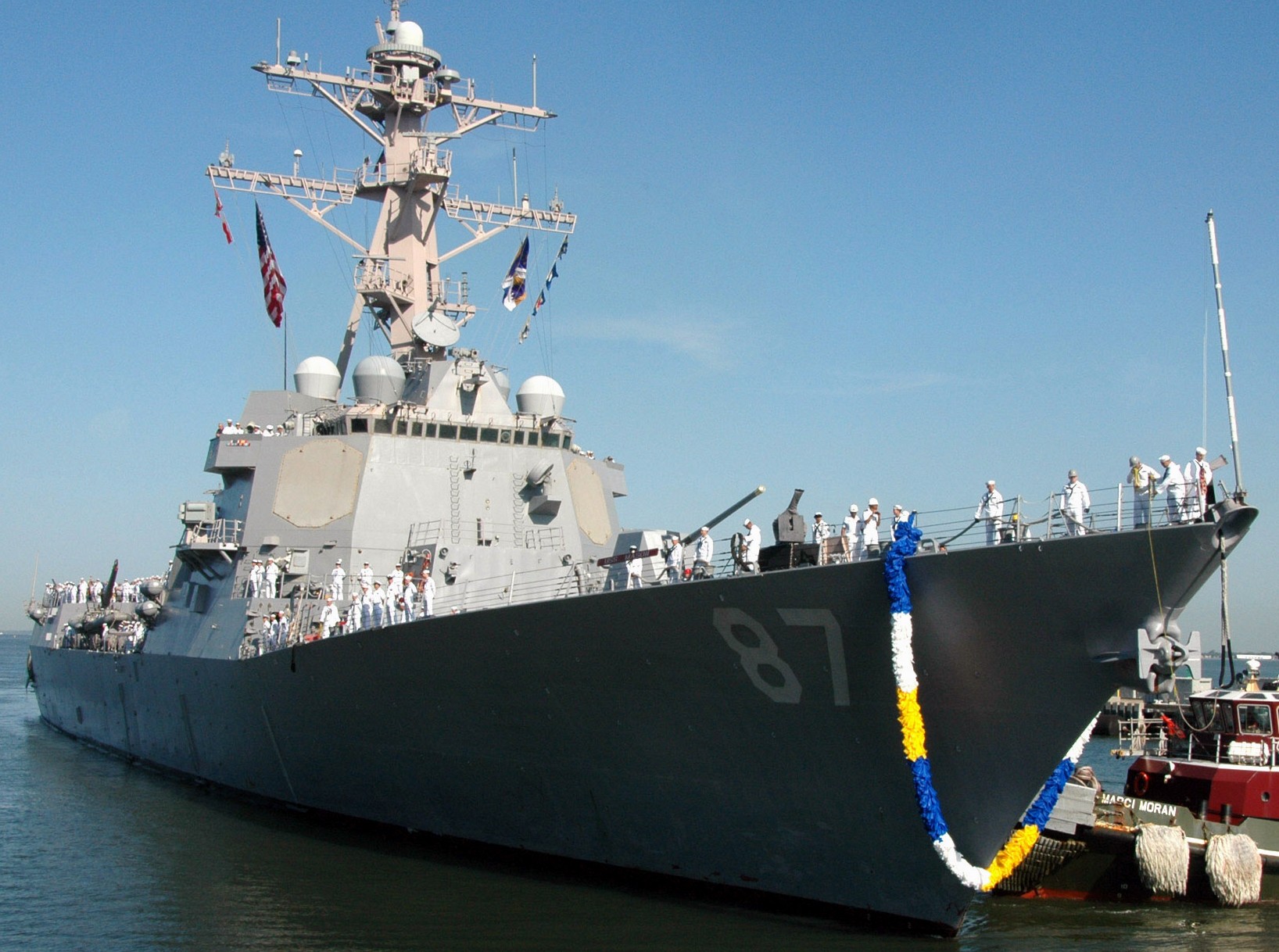 returning to Naval Station Norfolk, Virginia - May 23, 2007 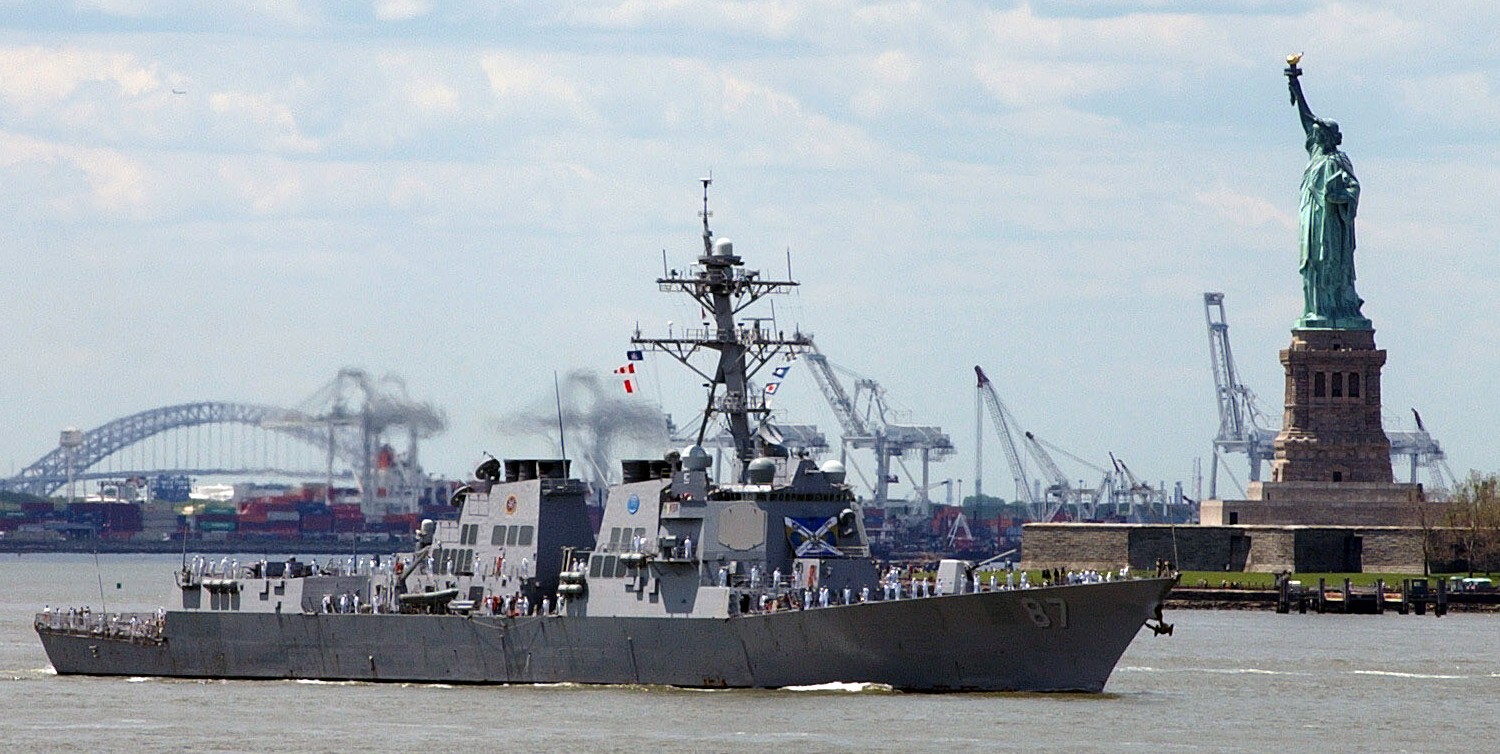 Fleet Week New York - May 2006 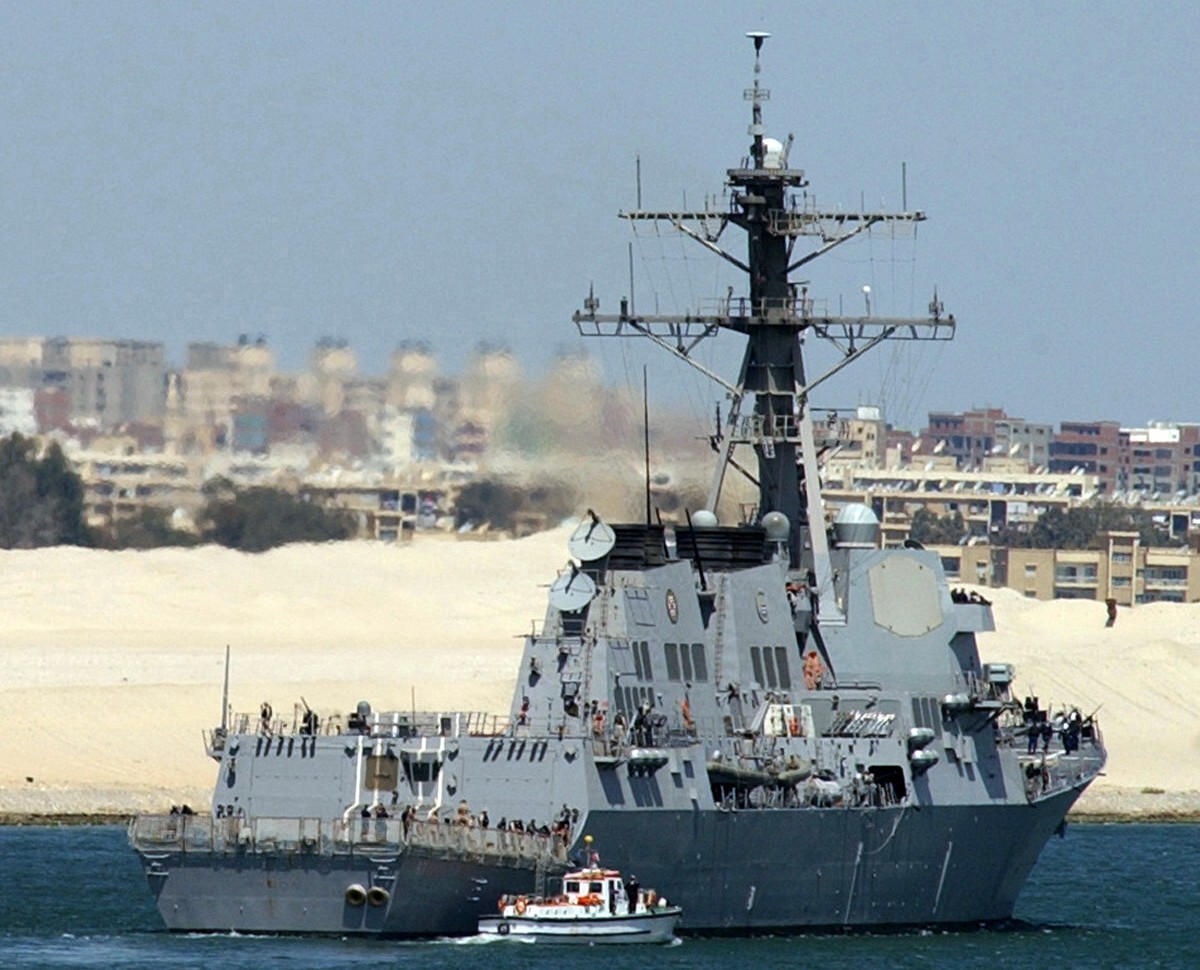 Suez Canal - March 2005 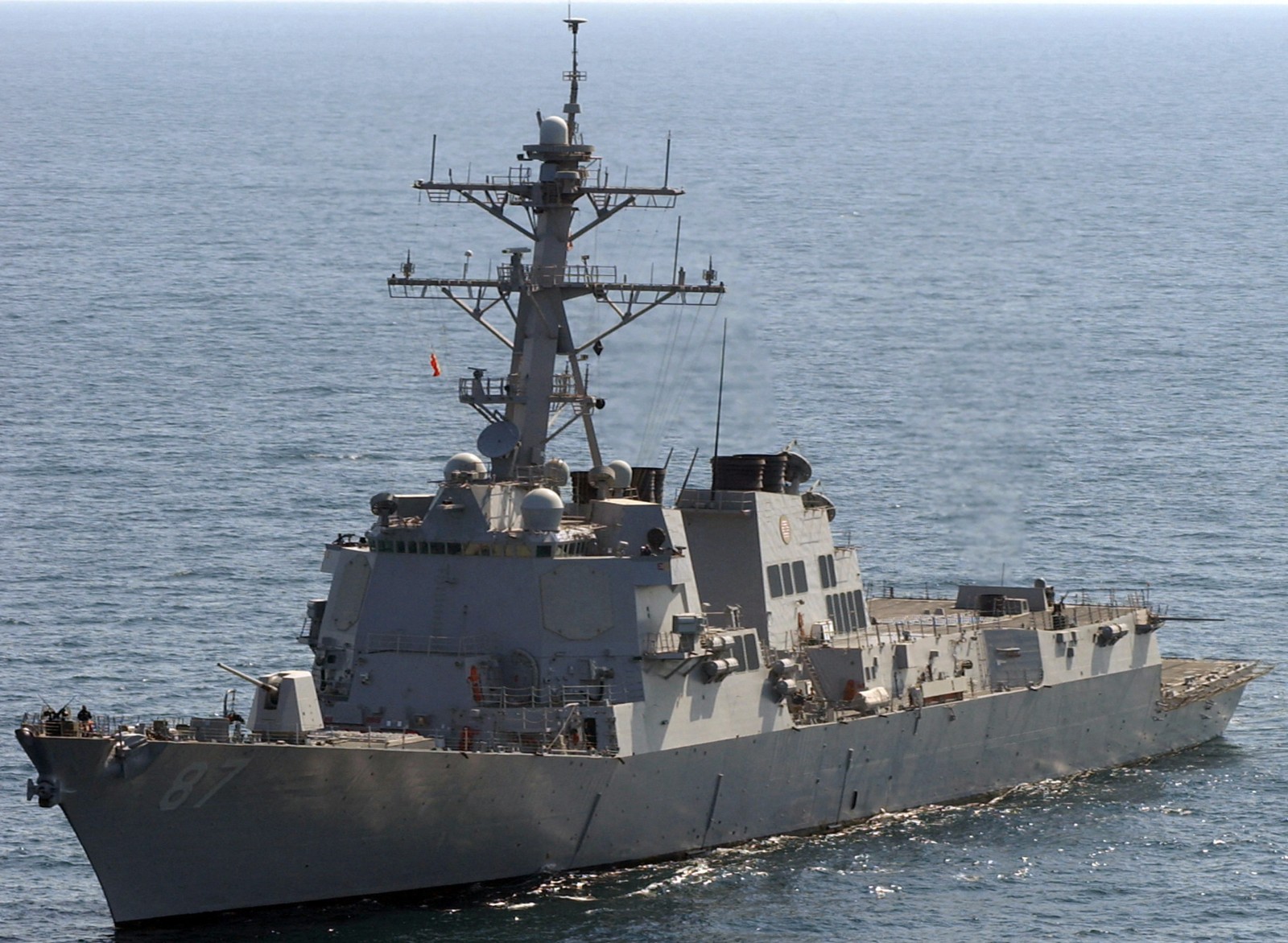 Persian Gulf - February 2005 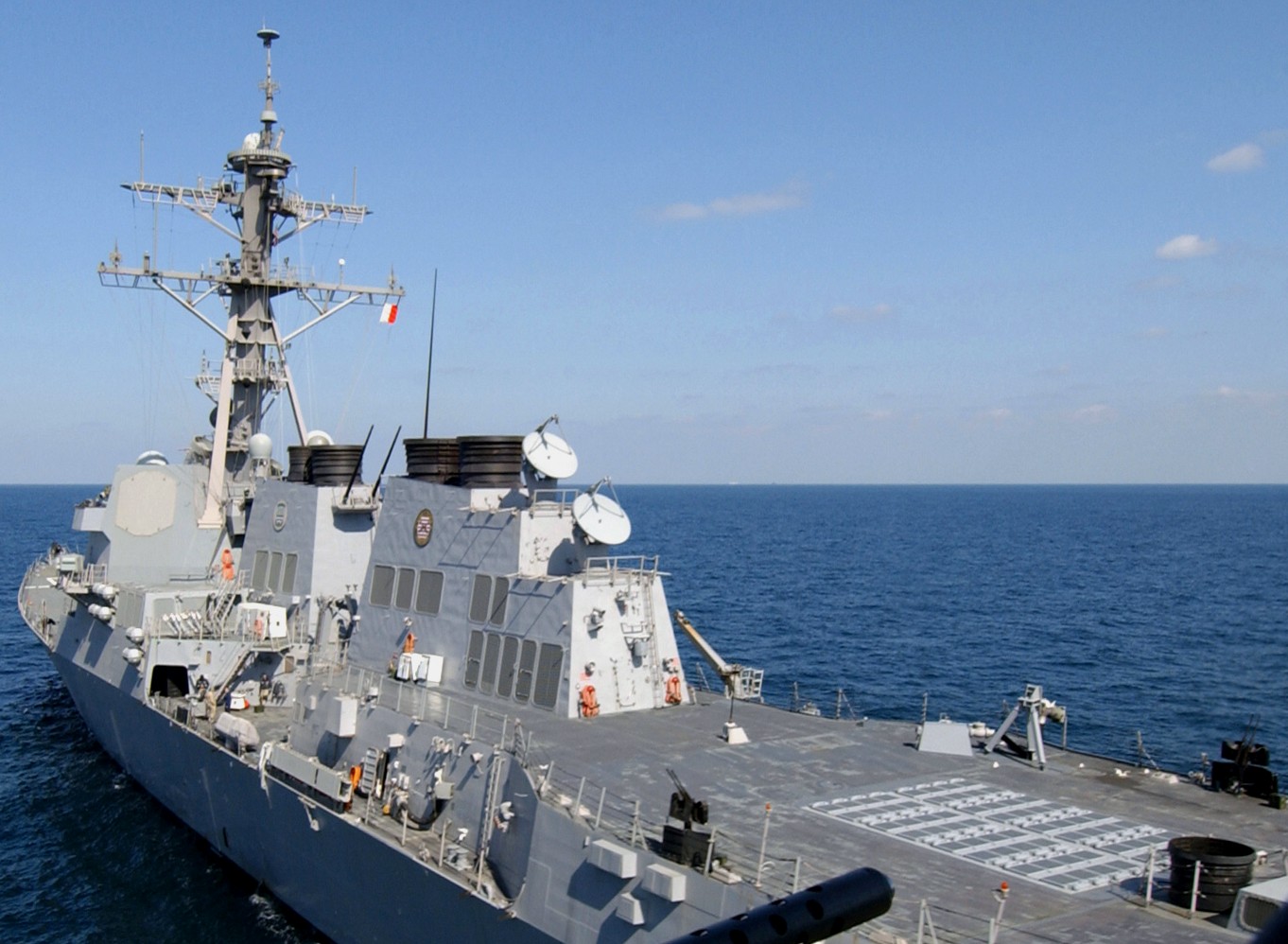 Persian Gulf - February 2005 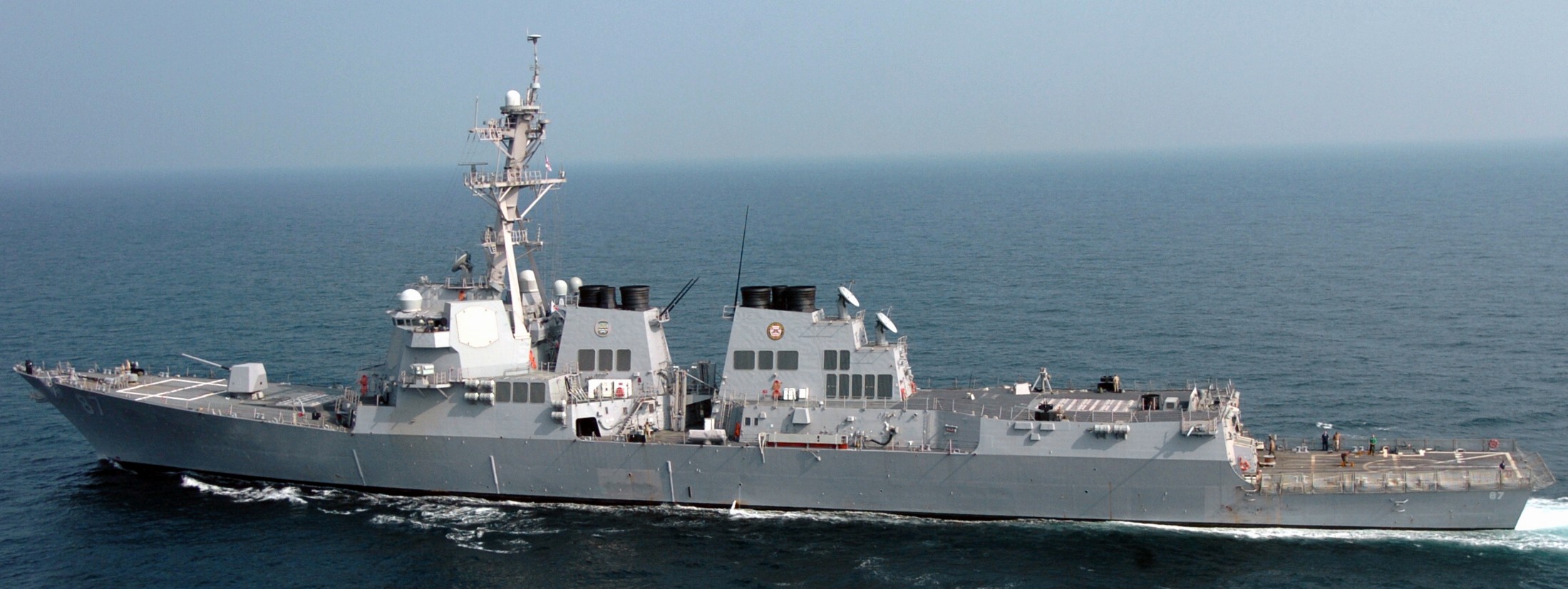 Persian Gulf - January 2005 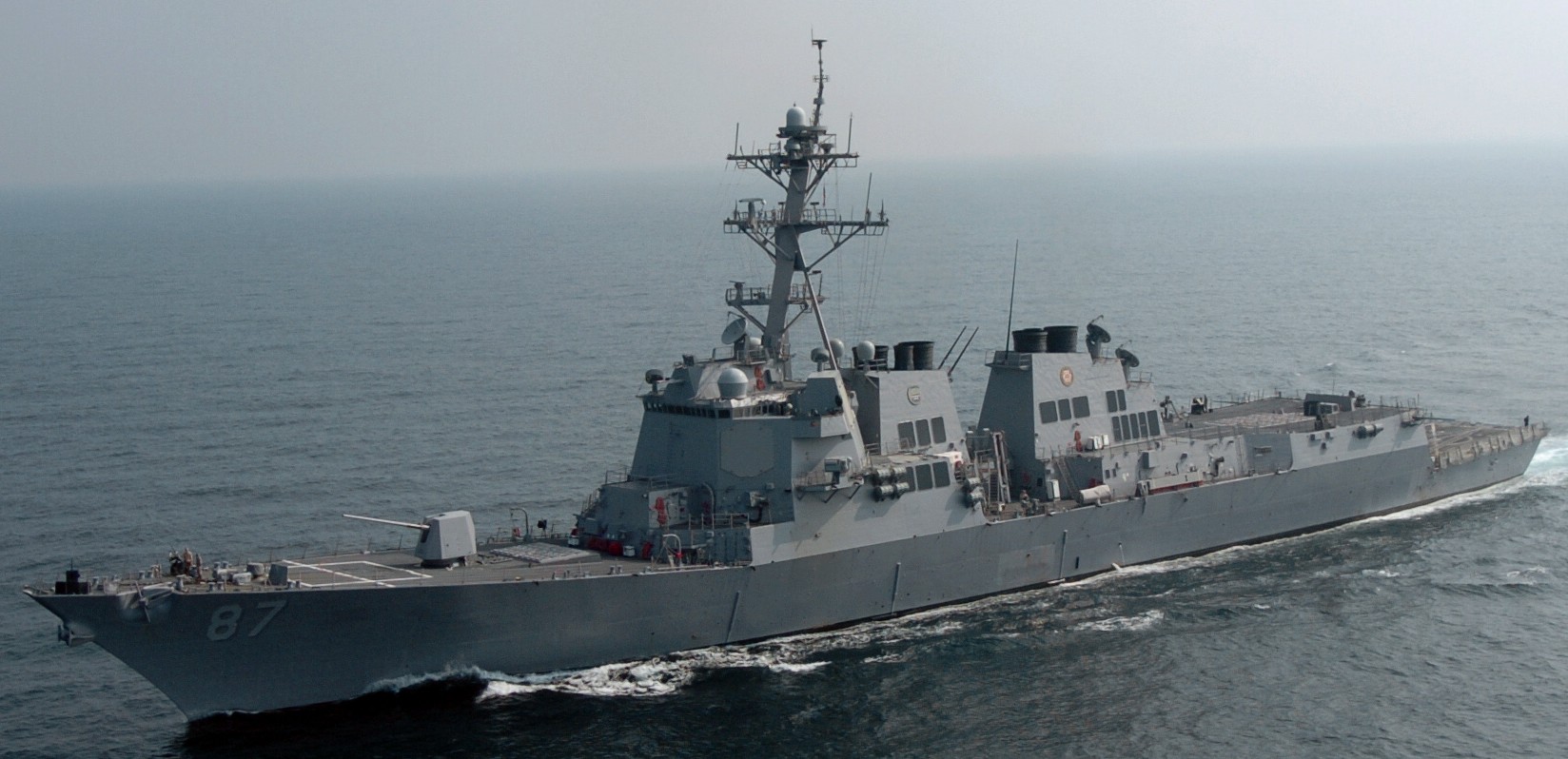 Persian Gulf - January 2005 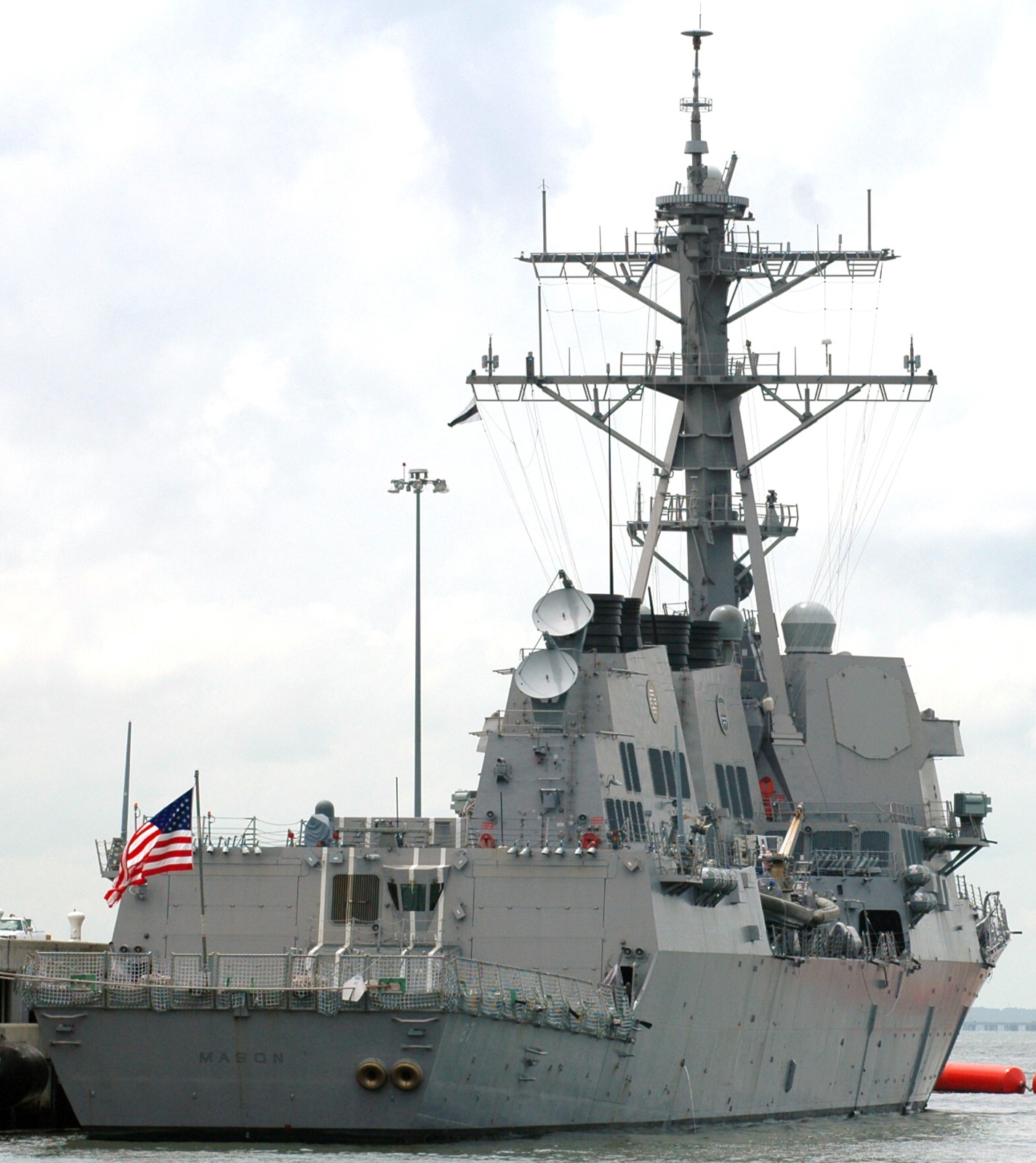 moored at Naval Station Norfolk, Virginia - August 2004 commissioning ceremony was held in Port Canaveral, Florida - April 12, 2003 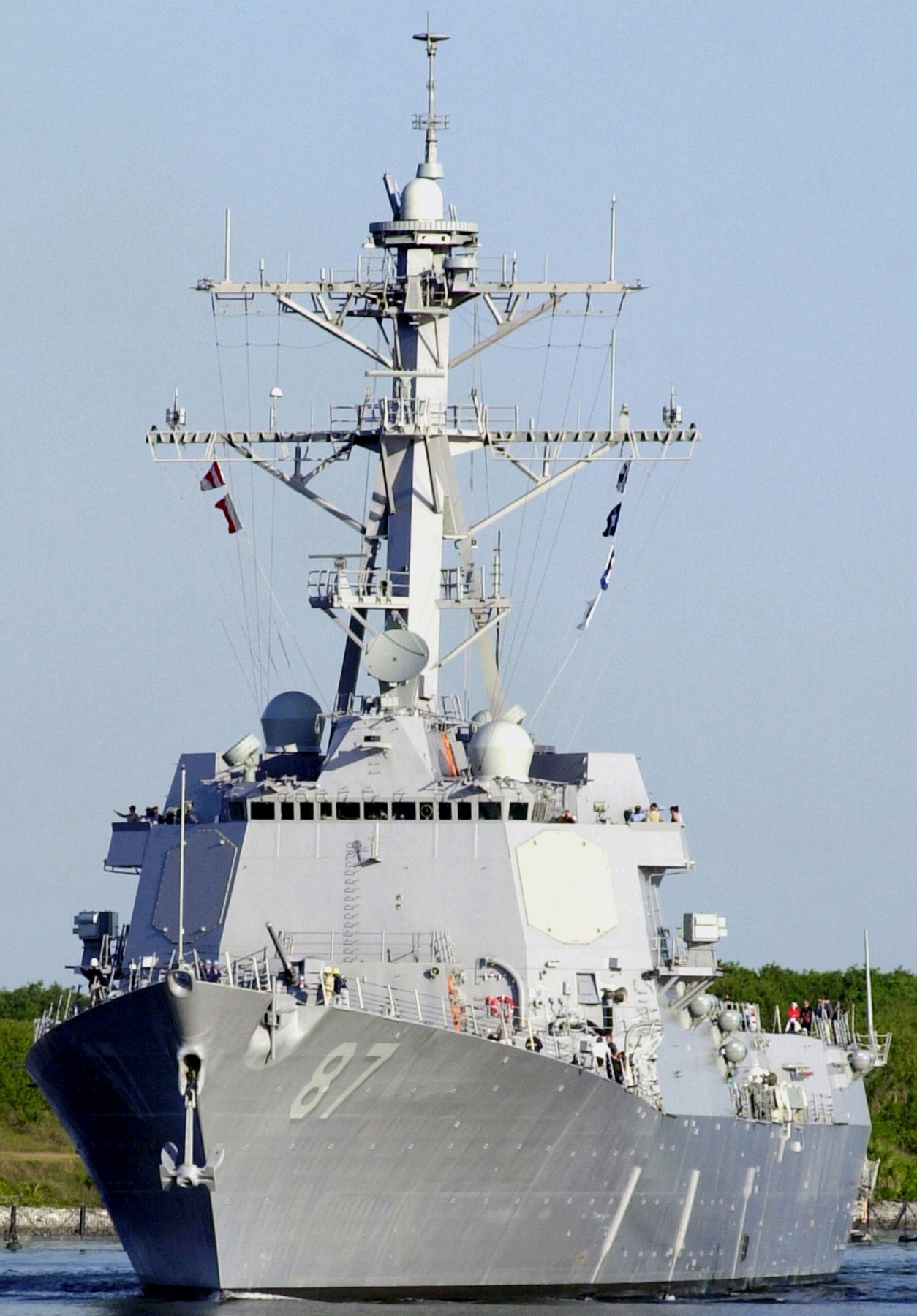 arriving in Port Canaveral, Florida for her upcoming commissioning - April 4, 2003 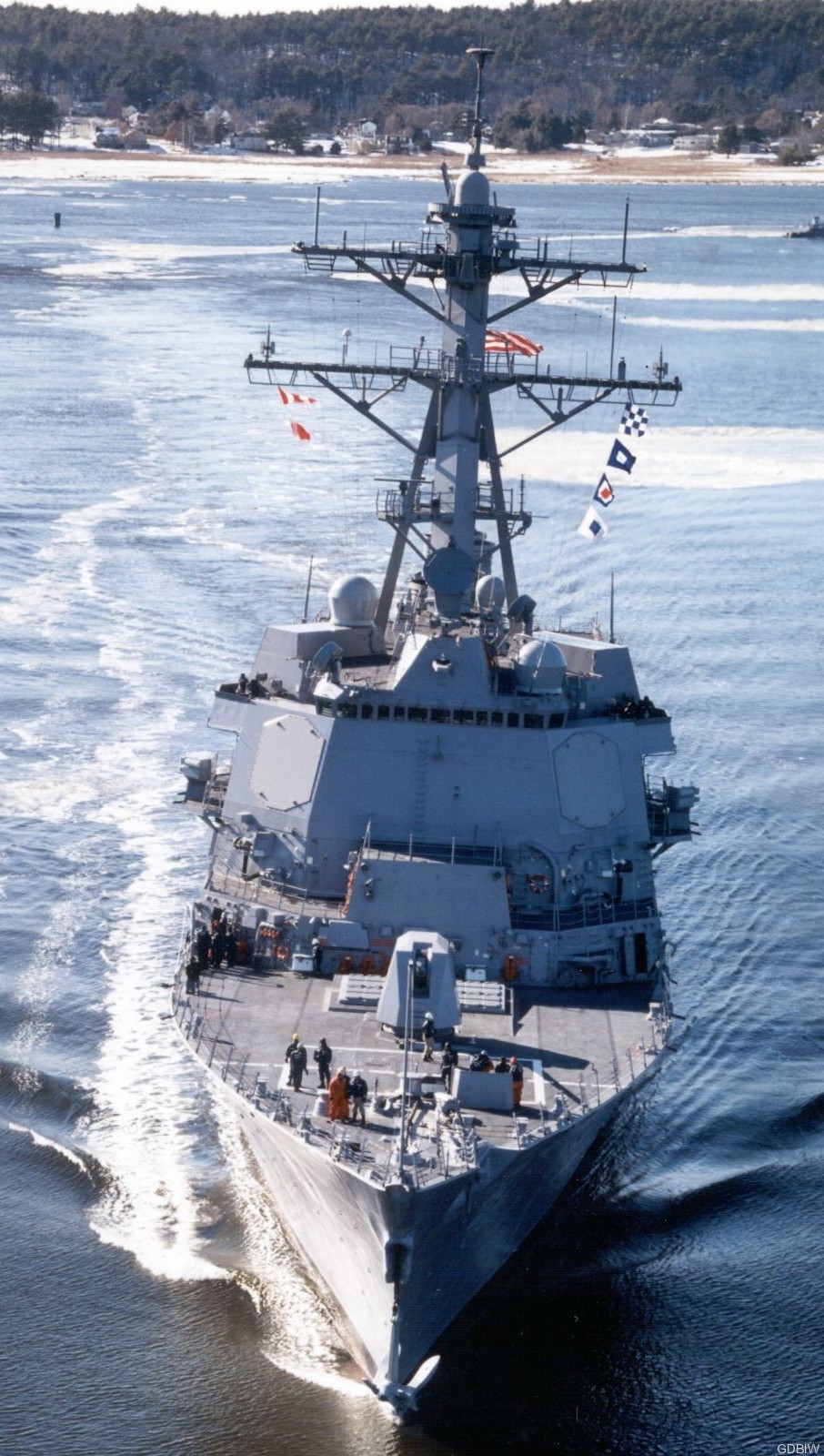 Kennebec River - undated 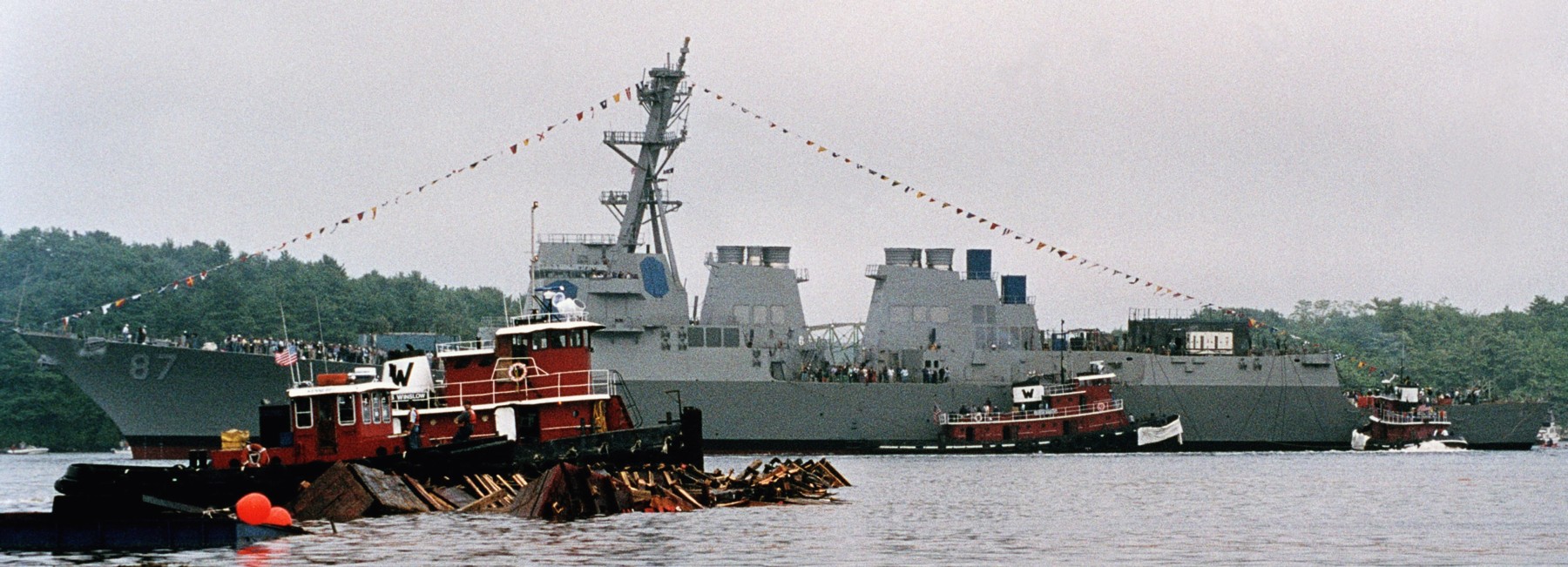 launching at General Dynamics Bath Iron Works, Maine - June 23, 2001 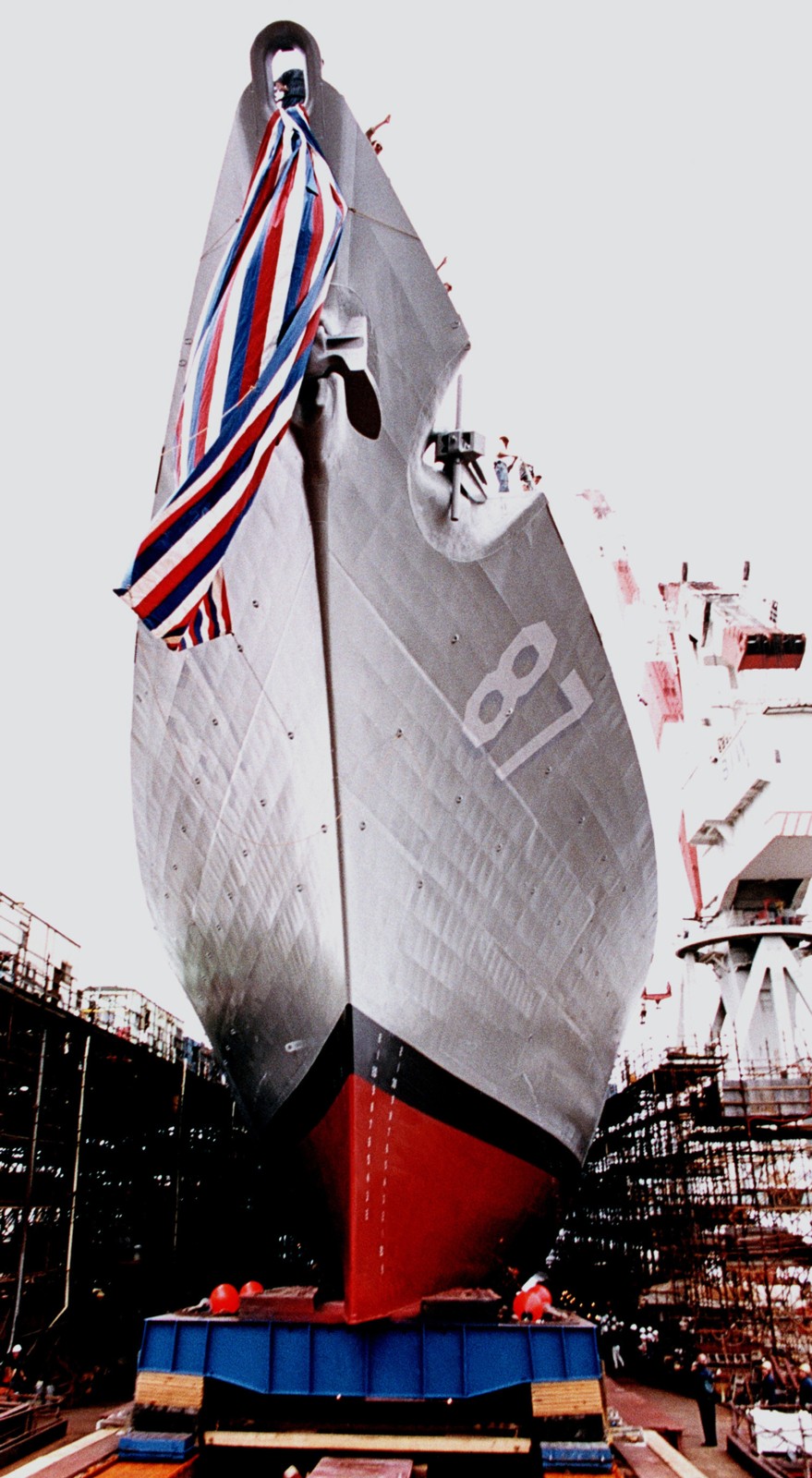
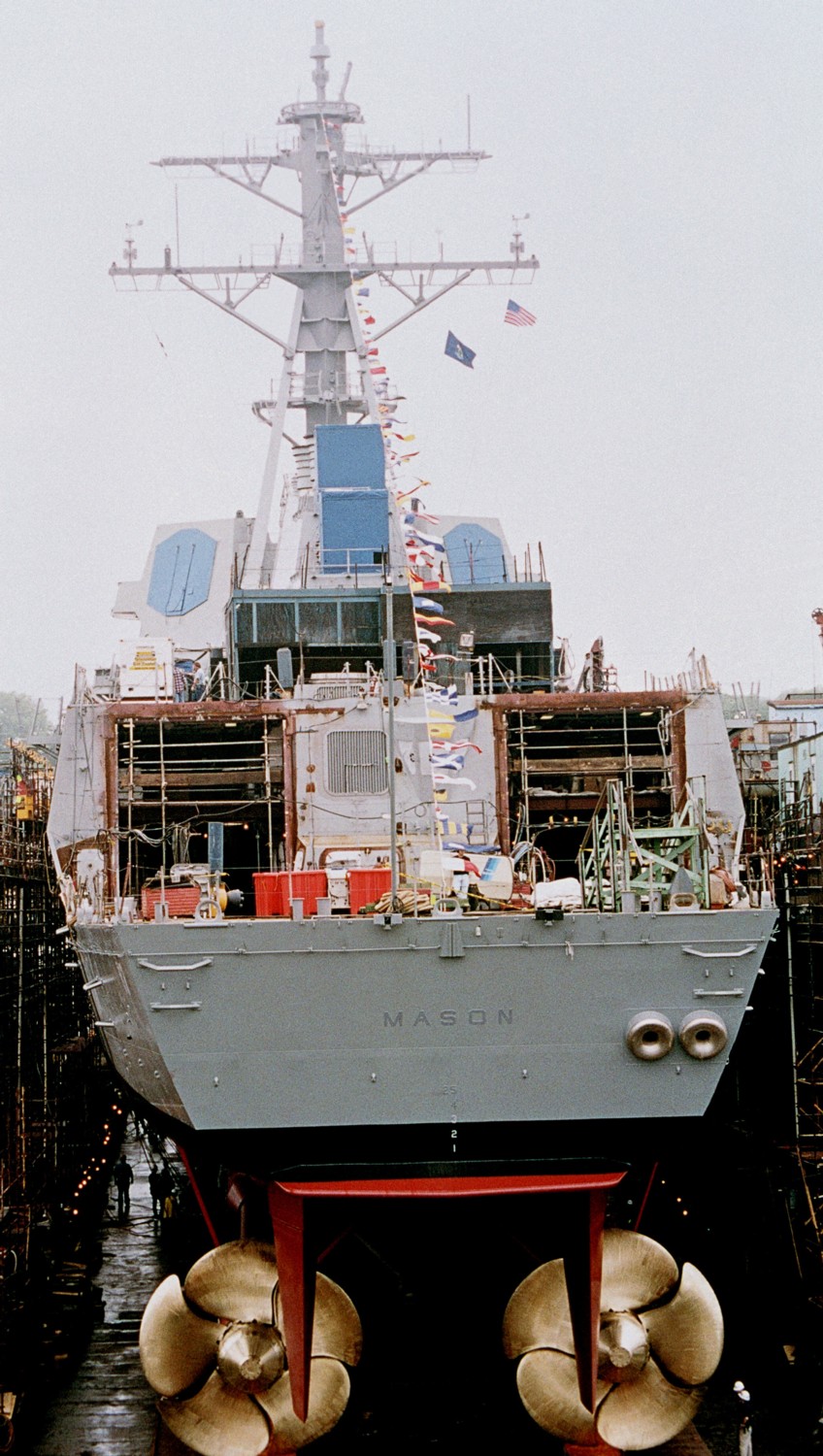 christening and launching ceremony at General Dynamics Bath Iron Works, Maine - June 23, 2001 this is the last Navy ship to be launched down the traditional inclined way 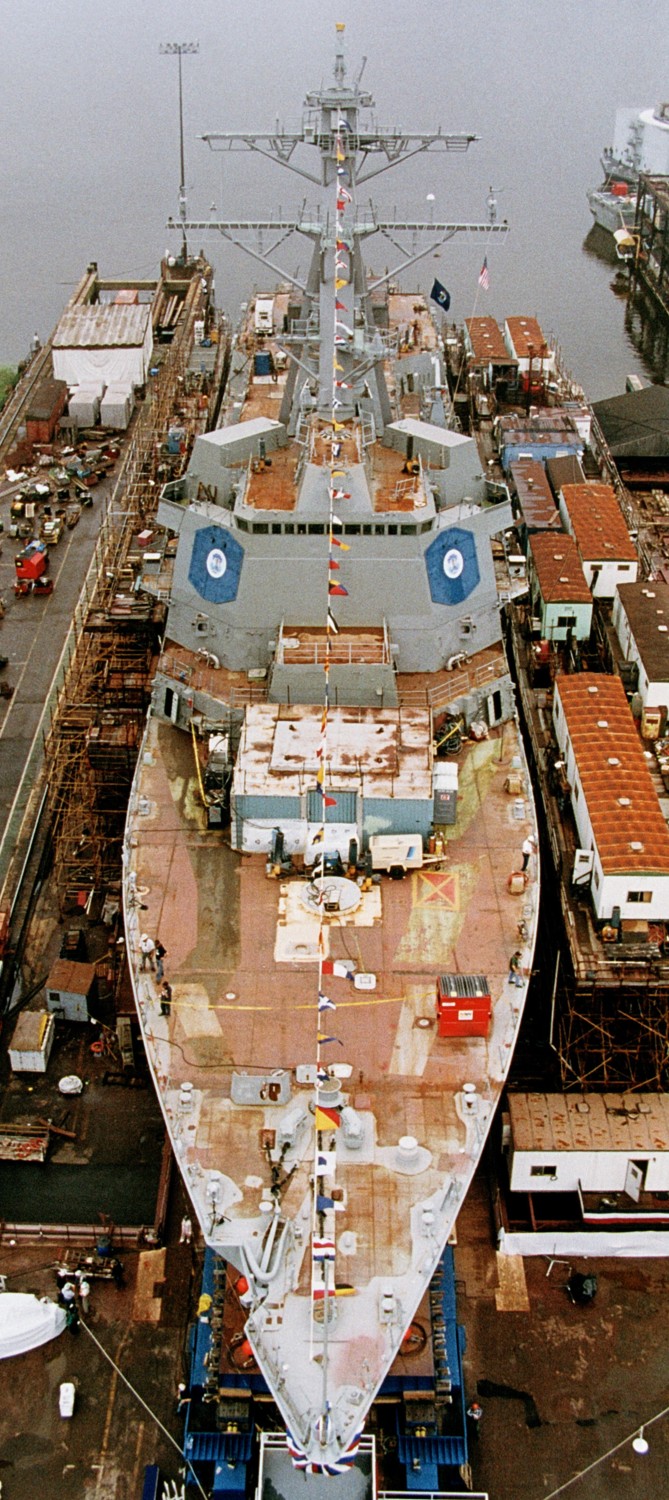
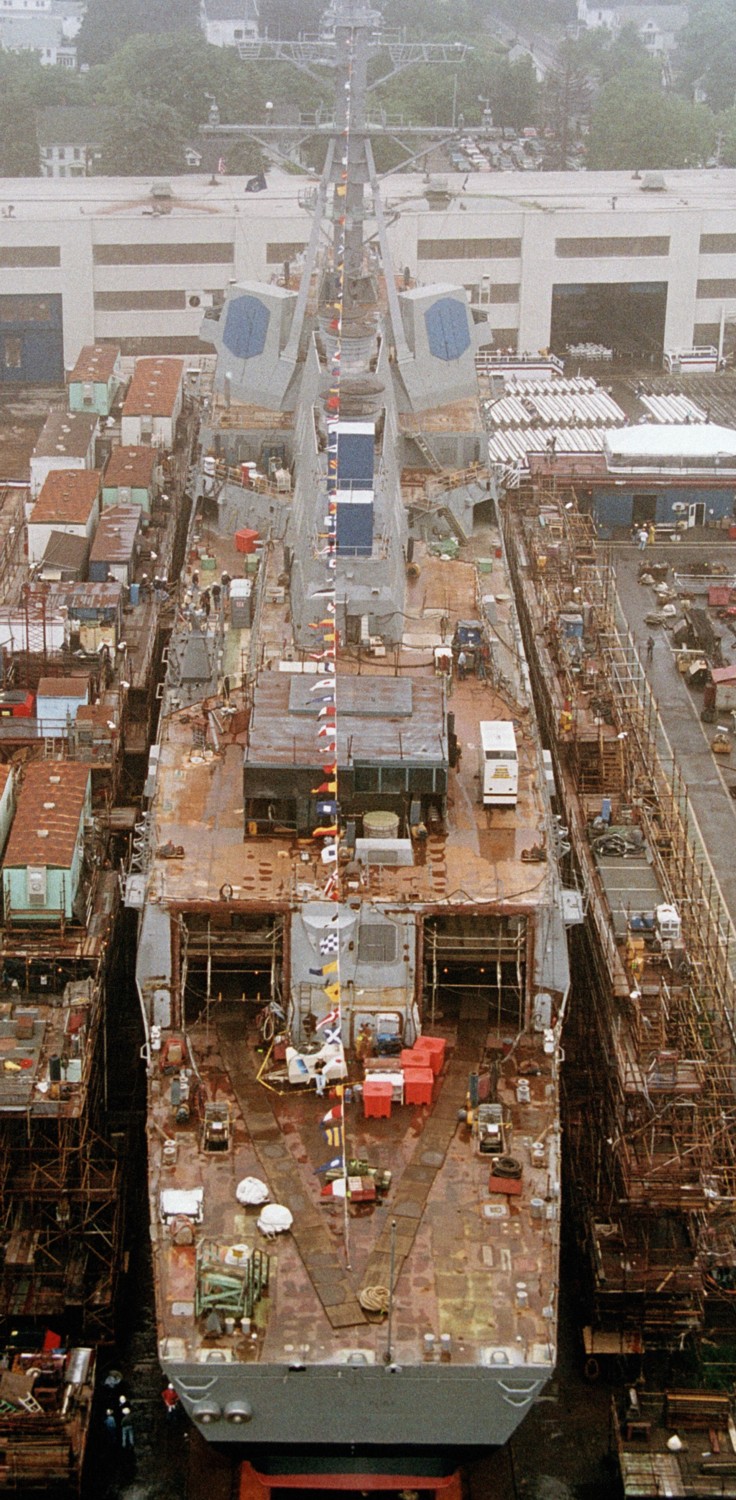 christening and launching ceremony at General Dynamics Bath Iron Works, Maine - June 23, 2001 |
||
|
USS Mason (DDG 87): USS Mason conducted her maiden deployment with the USS Harry S. Truman Carrier Strike Group in support of Operation Iraqi Freedom/Operation Enduring Freedom in late 2004. Mason returned home after six months on 18 April 2005. On 3 October 2006, Mason departed Naval Station Norfolk for a seven-month deployment to the Persian Gulf in support of the Global War on Terrorism. She participated in Exercise Neon Falcon. Mason returned home in May 2007.[4] Mason deployed with the aircraft carrier USS Theodore Roosevelt on 12 September 2008 for a scheduled deployment. Mason made scheduled port calls in 2008-2009 to ports in Mykonos, Nice, Aqaba, Istanbul, Dubai, Bahrain, and Jebel Ali. Mason conducted operations in the Persian Gulf in support of operation enduring freedom. On 12 March 2011, she sailed through the Suez Canal en route to the Mediterranean, to support possible humanitarian or military action in response to the Libyan Civil War. In April 2011, a boarding team from the ship successfully liberated five Yemeni hostages from 11 Somali pirates who had taken over the Yemeni-flagged ship F/V Nasri. The pirates had seriously injured two other fishermen in their attack, left the wounded ashore, and then taken Nasri to sea as a pirate mothership. Assault weapons, ammunition, rocket propelled grenades, and launchers were destroyed by the boarding team. On 22 July 2013, she deployed to the 5th Fleet and 6th Fleet area of responsibility as part of the Harry S. Truman Carrier Strike Group. Mason returned to her homeport on 18 April 2014. On 7 November 2015, Mason, acting as the flagship for Destroyer Squadron 26, completed the first East Coast Passing Exercise with the People's Republic of China's People's Liberation Army-Navy ships. On 3 October 2016, following a guided missile attack by Houthi rebels on the United Arab Emirates-operated HSV-2 Swift, Mason was deployed off the coast of war-torn Yemen, along with destroyers USS Nitze and USS Roosevelt, and USS Ponce, an amphibious transport dock being used as a forward landing base and laser test bed. According to an unnamed U.S. Department of Defense official, the purpose for sending the ships was "to ensure that shipping continues unimpeded in the strait and the vicinity." On 9 October 2016, Mason, operating near the Bab-el-Mandeb strait, was targeted by two missiles fired from Houthi-controlled territory. Both missiles fell short and crashed into the water. The Houthi insurgency denied launching the attack on the warship. The United States Naval Institute reported that Mason fired two SM-2 Standard missiles and one RIM-162 ESSM missile to intercept the two missiles, and deployed her Nulka missile decoy. One of two U.S. defense officials cited anonymously added that it was not clear whether the incoming missiles had been shot down or crashed into the water on their own. This marked the first recorded instance of ship-based anti-air missiles being fired from vertical launching cells in combat in response to an actual inbound missile threat. On 12 October 2016 Mason was again targeted by missiles fired from Yemeni territory, while it was operating in the Bab el-Mandeb strait. Mason was not hit by the two missiles, which were fired from near the southern Yemen city of Al Hudaydah. While the Navy was not certain whether the first incoming missile was intercepted or instead just fell into the sea, officials said Mason successfully intercepted the second missile at a distance of about 8 miles (13 km), marking the first time in history a warship destroyed an inbound anti-ship missile with a SAM in actual self-defense. On 13 October 2016, the U.S. attacked three radar sites in Houthi-held territory which had been involved in the earlier missile attacks, with cruise missiles launched from Nitze. The Pentagon assessed that all three sites were destroyed. On 15 October 2016, Mason was targeted in a third attack by Houthi rebels based in Yemen, by five anti-ship cruise missiles while operating in the Red Sea north of the Bab el-Mandeb strait. Mason fired a radar decoy, an infrared decoy, and several SM-2 Standard missiles in response, either neutralizing or intercepting four of the five incoming missiles. The Navy reported the fifth incoming missile as neutralized by a radar decoy launched from Nitze, after Mason alerted her to the threat. On 23 May 2017, Mason was awarded the 2016 Battenberg Cup, signifying she was the best all-around ship or submarine in the United States Navy's Atlantic Fleet based on crew achievements. Mason was only the fifth destroyer in the prior 111 years to receive the award. On 22 August 2022, Mason completed a homeport shift to Naval Station Mayport, in Jacksonville, Florida. On 14 October 2023, US Secretary of Defense Lloyd Austin directed USS Dwight D. Eisenhower and her carrier strike group, which includes the USS Philippine Sea, along with USS Mason and sister-destroyers USS Laboon and USS Gravely, to the eastern Mediterranean in response to Israel's war with Hamas. This is the second carrier strike group to be sent to the region in response to the conflict, following aircraft carrier USS Gerald R. Ford and her group, which had been dispatched six days earlier. On 26 November 2023, Mason responded to a distress call from the commercial tanker Central Park, which was seized by gunmen in the Gulf of Aden. Five gunmen tried to escape on a fast boat, but were chased and eventually surrendered to a search and seizure team dispatched by Mason. Two ballistic missiles were fired from Houthi-controlled parts of Yemen towards the general direction of Mason and Central Park, but they landed about 10 nautical miles away from the ships, with no reported injuries or damage. On 6 December 2023, Mason shot down an air drone headed toward Mason from Yemen, which officials attributed to Houthi rebels, as it was in the southern Red Sea. After the Norwegian-flagged oil and chemical tanker Strinda, traveling from Malaysia and carrying a cargo of palm oil, was struck by an anti-ship cruise missile whilst passing through the Bab-el-Mandeb strait on 11 December 2023, Mason responded to the ship's distress call and rendered assistance. On 13 December 2023, Mason shot down in self-defense a drone launched from a Houthi-controlled area of Yemen, that was heading directly towards the Mason. Mason was at the time responding to the distress call issued by the tanker Ardmore Encounter. Houthi forces had unsuccessfully attempted to board the tanker on skiffs, exchanged fire with the ship’s armed guards, and then fired two missiles in the Ardmore Encounter’s direction, prompting the distress call. The tanker was carrying jet fuel from India to the Netherlands and Sweden. On 12 January 2024, Philippine Sea, Mason and Gravely fired Tomahawk cruise missiles at Iranian-backed Houthi rebels in Yemen. Aircraft from Carrier Air Wing Three, embarked on the carrier Dwight D. Eisenhower also participated in the strikes. source: wikipedia |
||
|
SHIP'S NAME: USS MASON (DDG 87) is the third ship to bear the name and is the 37th ship of the Arleigh Burke Class of AEGIS Guided Missile Destroyers. The First ship to bear the name MASON was named for John Young Mason, who was Secretary of the Navy for Presidents John Tyler and James K. Polk. The first MASON (DD 191) was laid down by Newport News Shipbuilding & Drydock Co., Newport News, Virginia on 10 July 1918, and was launched 8 March 1919. The ship was commissioned at Norfolk Navy Yard on 28 February 1920. The commanding Officer was Lieutenant Commander Carl F. Holden. As a result of the Washington Treaty of 6 February 1922 limiting Naval Armament, DD 191 was decommissioned at the Philadelphia Navy Yard 3 July 1922. After World War II broke out in Europe, MASON was re-commissioned 4 December 1939. Under terms of the “Destroyers for Bases” executive agreement between the Unites States and Great Britain, the MASON became one of 50 ships turned over in exchange for 99-year leases on bases in the Western Hemisphere. DD 191 was transferred to the British Royal Navy in Halifax, Nova Scotia on 8 October 1940 and renamed the HMS BROADWATER H-81 the next day. Assigned to the Newfoundland Escort Force in July 1941 the ship patrolled the North Atlantic and guarded convoys against the German Submarine “wolfpacks” into the fall of that year. Early in the morning17 October 1941 she attacked a U-boat, one of a pack assaulting an American convoy SC-48 south of Iceland. Twenty-four hours later she herself fell victim to torpedoes of U-101 and sank the same day. The second ship to bear the name MASON was named for Ensign Newton Henry Mason, born on 24 December 1918 in New York City. He enlisted as a seaman in the Naval Reserve on 7 November 1940 and was appointed an aviation cadet on 10 February 1941. He was assigned to Fighting Squadron Three in September 1941 and died following aerial combat against the Japanese forces in the Battle of the Coral Sea, 8 and 9 May 1942. Ensign Mason was posthumously awarded the Distinguished Flying Cross for his skill and courage in the battle. The second Mason (DE-529) was laid down by the Boston Navy Yard, Boston, Massachusetts, in October 1943 and launched 17 November 1943. The ship was commissioned 20 March 1944. Lieutenant William Blackford was the Commanding Officer. Mason served as convoy escort in the Atlantic through the remainder of World War II. MASON (DE-529) has the distinction of being the only U.S. Navy destroyer to be manned with a predominantly black enlisted crew. This was the first time black Americans were permitted to be trained and serve in ratings other than cooks and stewards. In late 1943, the Navy announced its plan to place an all-black crew with white officers aboard MASON. One hundred and sixty black Sailors were enrolled in all fields of operational and technical training and manned the ship at commissioning. Although known as “Eleanor’s Folly” for Eleanor Roosevelt’s introduction of the idea for an all-black crew, the MASON served with distinction during World War II. During the worst North Atlantic storm of the Century, MASON was serving as an escort to a convoy of merchant ships bound for England. During the storm, the convoy was forced the break up and MASON was chosen to escort a section of ships to their destiny. With land in sight, MASON’s deck split under the strain of heavy sea, threatening the structural integrity of the ship. Emergency repairs were conducted and MASON returned immediately to assist the remainder of the convoy. The MASON crew was recommended for commendation from their Captain, Lieutenant Commander Bill Blackford, and the Convoy Commander, Commander Alfred Lind. The commendations were never rewarded. At the end of the war MASON was assigned as a training ship operating from Miami, Florida until being decommissioned and sold for scrap in 1947. On July 26, 1947 President Truman signed Executive Order 9981, officially desegregating the Armed Forces. Through the efforts of the Mason veterans and the author Mary Pat Kelly, the MASON story has been chronicled in the book “Proudly We Served.” Their persistence in telling the MASON story paid off in 1994 when President Clinton awarded the long-overdue commendation to sixty-seven surviving crewmembers. In 1998, the Secretary of the Navy John H. Dalton made official his decision to name an Arleigh Burke Class Destroyer the USS MASON (DDG-87) in order to mark the contributions of USS MASON DE 529 Sailors equality and desegregation in today’s Navy. - - - - - USS Mason (DE-529): USS Mason (DE-529), an Evarts class destroyer escort, was the second ship of the United States Navy to be named Mason, though DE-529 was the only one specifically named for Ensign Newton Henry Mason. The USS Mason was one of two US Navy ships with largely African-American crews in World War II. The other was the USS PC-1264, a submarine chaser. These two ships were manned with African Americans as the result of a letter sent to President Roosevelt by the NAACP in mid-December 1941. The USS Mason was commanded by Carlton Skinner. Her keel was laid down in the Boston Navy Yard, on 14 October 1943. She was launched on 17 November 1943, sponsored by Mrs. David Mason, the mother of Ensign Mason, and commissioned on 20 March 1944, with Lt. Commander William M. Blackford, USNR, in command. Following a shakedown cruise off Bermuda, the Mason departed from Charleston, South Carolina, on 14 June, escorting a convoy bound for Europe, arriving at Horta Harbor, Azores, on 6 July. She got underway from Belfast, Northern Ireland, headed for the East Coast on 26 July, arriving at Boston Harbor on 2 August for convoy duty off the harbor through August. On 2 September, she arrived at New York City to steam on 19 September in the screen for convoy NY.119. The Mason reached Falmouth, Cornwall, with part of the convoy 18 October, and she returned to New York from Plymouth, England, and the Azores on 22 November. Mason joined TF 64 at Norfolk, Virginia, on 17 December. Two days later she sailed in convoy for Europe, passing by Gibraltar on 4 January 1945 to be relieved of escort duties. Continuing to Algeria, she entered Oran on 5 January for the formation of TG 60.11. The escort ship cleared Oran 7 January. Four days later the Mason made radar contact with a surface target. She rang up full speed with all battle stations manned to attack the presumptive submarine, rammed, and dropped depth charges. Unable to regain contact, the ship returned to the contact point, where searchlight revealed the target - a wooden derelict about 100 by 50 feet. The Mason then steamed to Bermuda for repairs, entering St. George's Harbor on 19 January. Five days later she reached the New York Navy Yard. On 12 February Mason departed Norfolk in convoy for the Mediterranean Sea, arriving off Gibraltar on 28 February. She cleared Oran 8 March to guard a convoy to Bermuda and Chesapeake Bay before returning to New York 24 March. After sonar exercises off New London, Connecticut, and fighter-director training with naval aircraft from Quonset Point, Rhode Island, she steamed from Norfolk 10 April with another convoy to Europe, leaving the convoy at Gibraltar 28 April. The Mason was two days out of Oran en route to the East Coast when the end of World War II in Europe was announced on the eighth of May. The Mason arrived at New York on 23 May for operations along the East Coast into July. From 28 July to 18 August she served as a school ship for the Naval Training Center, Miami, Florida. On 20 August she arrived at New London to be outfitted for long-range underwater signal testing in the Bermuda area into September. The Mason departed from Bermuda on 8 September for Charleston, S.C., arriving there two days later. The Mason was decommissioned on 12 October, was struck from the Naval Vessel Register on 1 November 1945, and was sold and delivered to New Jersey, on 18 March 1947 for scrapping. The USS Mason (DDG-87) was named in honor of the African Americans on DE-529's crew, and the 2004 film Proud dramatizes their story. |
||
| patches + more | ||
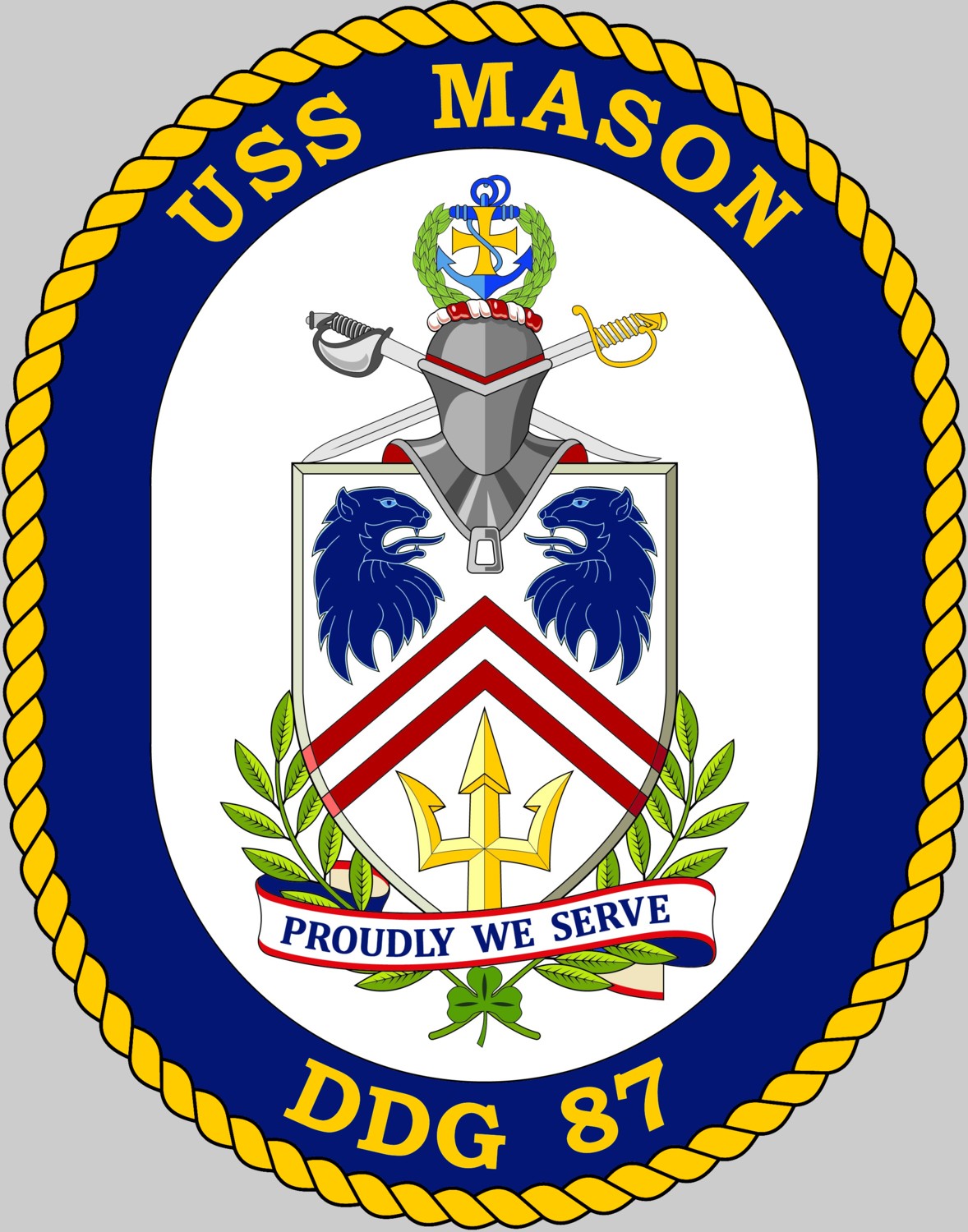 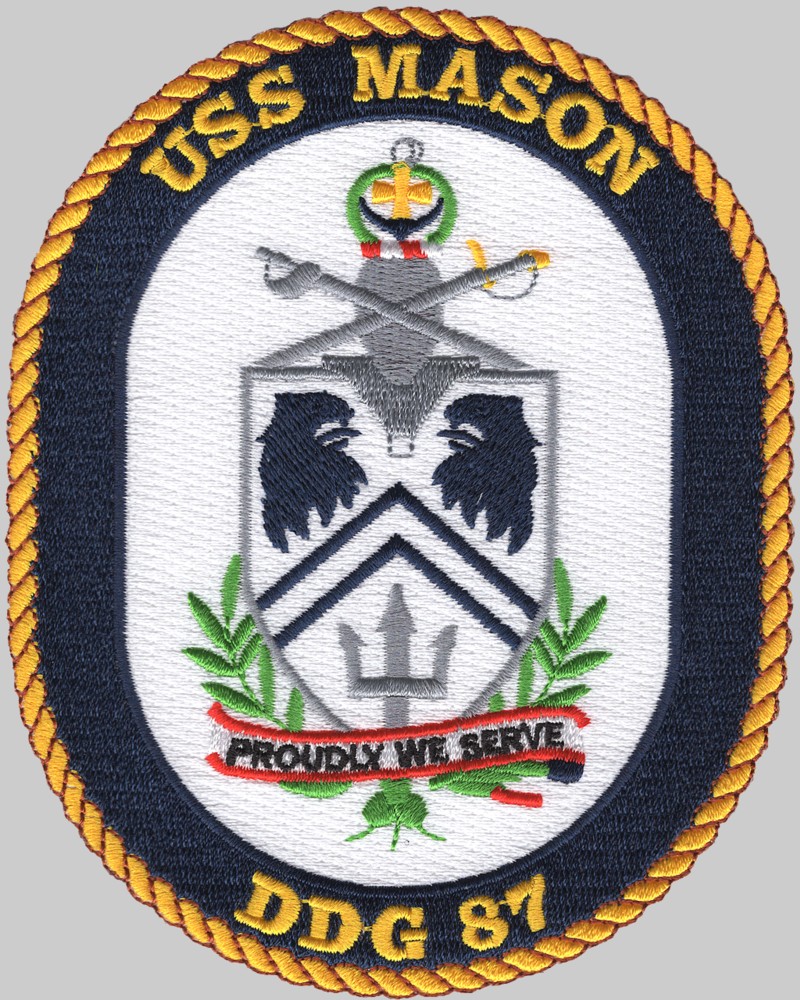 |
||
|
|
seaforces.org
|
USN ships
start page | |
